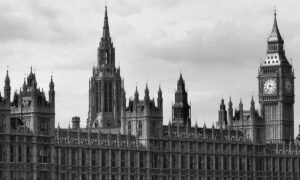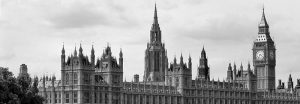Since our acquisition of Carnelian Capital last year, we have been busy integrating the two teams and looking at the best practices of both firms. Carnelian have a monthly client e-newsletter, which we feel will be a great addition to our communications and blogs which we drive through the website.
The newsletter is based on the concept of Marginal Gains; the principle of making little improvements (the classic figure is 1%) in various aspects of a process which, taken as a whole, results in a very significant improvement overall. Consequently, please find our first edition; four articles to provide concise (sometimes technical) summaries of issues and opportunities across a wide range of financial planning topics and themes.
Jonathan Howard, CEO Richmond House Wealth Management

The Spring Budget has Sprung and had a few surprises in there to keep everyone on their toes. The main key changes are around pensions and will give some real freedom to those that have snuck over the Lifetime Allowance.
As ever we are here to answer any questions you may have. The end of the tax year is upon us so don’t leave it too late if you have any last minute planning!

Chancellor of the Exchequer, Jeremy Hunt, delivered his first Spring Budget on 15 March declaring it was “A Budget for Growth.” The fiscal update included a range of new measures, some of which had been widely trailed prior to Budget day, in order to achieve growth “by removing obstacles that stop businesses investing; by tackling labour shortages that stop them recruiting; by breaking down barriers that stop people working; and by harnessing British ingenuity to make us a science and technology superpower.”
OBR forecasts
The Chancellor began his statement by unveiling the latest economic projections produced by the Office for Budget Responsibility (OBR) which he said showed the UK would meet the Prime Minister’s priorities to “halve inflation, reduce debt and get the economy growing.” In relation to the first priority, Mr Hunt said the latest OBR figures suggest inflation will fall from an average rate of 10.7% in the final quarter of last year to 2.9% by the end of 2023. This sharp decline is partly due to some of the Chancellor’s Budget measures, including the three-month extension to the household Energy Price Guarantee (EPG), which the government had confirmed earlier in the day.
Mr Hunt also said the OBR forecast suggests the UK economy will now avoid a technical recession this year (defined as two consecutive quarters of economic decline) and then expand in each of the remaining years of the five-year forecast period. According to the updated figures, the economy is expected to shrink by 0.2% this year, a significant upgrade from last autumn’s forecast of a 1.4% contraction, with growth then predicted to hit 1.8% in 2024 and 2.5% in 2025, before easing back towards its medium-term potential growth rate of 1.75% by 2028.
The Chancellor’s growth strategy focuses on the four pillars ‘Everywhere, Enterprise, Employment and Education,’ as previously outlined in his Bloomberg speech in January.
Everywhere
Mr Hunt spoke about the government’s plans for ‘Levelling Up,’ including the launch of 12 new Investment Zones. Across these “12 potential Canary Wharfs,” £80m of support per zone will be available for skills, infrastructure and tax reliefs. Mr Hunt also mentioned specific projects selected for local investment, including:
Enterprise
To provide the right conditions for businesses to succeed:
Employment
The Chancellor turned next to Employment, with a suite of new measures to “remove the barriers that stop people who want to from working.” To achieve this, he announced:
Mature workers
People with long-term illnesses and disabilities
Welfare recipients
Care leavers
Education
Mr Hunt then turned to Education, stating that he wants to reform the childcare system, currently “one of the most expensive systems in the world.”
His new proposal will offer 30 free hours of childcare each week to pre-school-age children aged nine months or above in English households where both parents work. It will be phased in on the following timeline:
Also, schools and local authorities will be funded to increase availability of wraparound care, to enable parents of school-age children to drop them off between 8am and 6pm.
To tackle the problem of unaffordable upfront costs, Mr Hunt also announced support for the 700,000 families on Universal Credit. Another major change involves each staff member in England being able to look after five two-year-olds instead of four, as is already the case in Scotland.
Personal Taxation and Pensions
To encourage over-50s to extend their working lives, the government is increasing tax relief limits on pension contributions and pots – the Annual Allowance will be raised from £40,000 to £60,000 from April 2023; the Lifetime Allowance (LTA) charge will be removed from April 2023, and the LTA will be abolished from April 2024. The maximum amount that can be accessed tax free (Pension Commencement Lump Sum) will be frozen at its current level of £268,275 (25% of current LTA). From April, the minimum Tapered Annual Allowance (TAA) and the Money Purchase Annual Allowance (MPAA) will increase from £4,000 to £10,000 and the adjusted income threshold for the TAA will also rise, from £240,000 to £260,000.
As a reminder, the following changes were previously announced in the Autumn Statement 2022:
In addition:
Other key points
Closing comments
Jeremy Hunt signed off his announcement saying, “Today we build for the future with inflation down, debt falling and growth up. The declinists are wrong and the optimists are right. We stick to the plan because the plan is working.”
As the year is upon us it has become apparent that the changes in the budget are fast approaching and need some consideration. The end of the tax year will be here before we know it and one article makes reference to this, while another looks at investment options, which are becoming more important due to the budget changes. Whilst looking at the right investment wrapper it is also important to look at global opportunities and the right tax wrapper so hopefully this month’s edition gives you a flavour of all the areas we can look at for your portfolio.

By any comparison, the past 12 months have been tough for investors with a series of shocks impacting markets and, as 2023 dawns, uncertainties remain. One constant on the investment horizon, though, is the requirement to be strategic with your portfolio. A sound strategy based on careful planning; making purposeful decisions, based on thorough research and reliable processes, will stand you in good stead.
Last year saw markets struggle with bouts of volatility as a combination of high inflation, rising interest rates and the war in Ukraine brought about challenging headwinds and markets sought a stable footing. As a result, fund inflows slowed while cash as a percentage of investors’ portfolios rose, prompting warnings that investors need to be aware of limitations to the Financial Services Compensation Scheme (FSCS) for cash balances.
Identifying opportunities
With large amounts of money on the sidelines, using our knowledge, we aim to identify opportunities and position portfolios to benefit from recession-resistant companies in which we have conviction. Those who still have the capacity to invest should consider adding back to their portfolios in order to take advantage of any potential low valuations.
Battling inflation
Investors also need to be aware of the erosive impact of inflation on cash-based savings. In the current economic climate, anyone holding a significant proportion of their assets in cash, even with savings rates improving, will inevitably see the value of their wealth decline in real terms. In essence, equities offer a better potential defence in the battle with inflation.
Trust in our process
Experienced investor or not, staying calm during periods of market turmoil is never easy but adapting your mindset and focusing on investment strategy rather than market sentiment is vital. Investing in the stock market does clearly involve a level of risk but the adoption of a carefully considered strategy based on sound financial planning principles undoubtedly offers investors the best chance of success.

As the end of the tax year approaches, a prime consideration should be how external factors such as reduced or frozen allowances, together with high inflation, could impact your finances and what action you need to take before 5 April 2023.
If you are affected by the impending changes to Dividend Tax or Capital Gains Tax (CGT) announced in the Autumn Statement, have you considered investing up to £20,000 this tax year in a stocks and shares Individual Savings Account (ISA)? From April 2023, the Dividend Allowance will be cut from £2,000 to £1,000 and then fall further to £500 from April 2024. In addition, the annual CGT exemption will fall from £12,300 to £6,000 next year and then to £3,000 the following year. Dividends received on shares within an ISA are tax free and won’t impact your Dividend Allowance. Also, any profit you make when selling investments in your stocks and shares ISA is free of CGT.
And don’t forget your pension
Both the Annual Allowance and Lifetime Allowance are frozen, at £40,000 and £1,073,100 respectively. As these allowances haven’t increased with inflation, it effectively means those saving to the maximum extent possible with tax concessions can save less in real terms each year.

The International Monetary Fund (IMF)1 has predicted a challenging 2023, reducing growth expectations and forecasting economic contraction in a third of the world, in its latest World Economic Outlook entitled ‘Countering the Cost-of-Living Crisis.’
With the cost-of-living crisis ‘tightening financial conditions in most regions’, the outlook suggests that in order to restore price stability, monetary policy should stay the course and fiscal policy should aim to alleviate pressures ‘while maintaining a sufficiently tight stance.’
The global growth rate for 2023 has been revised down from previous expectations to 2.7%. This reflects ‘significant slowdowns’ for the largest economies as America’s gross domestic product (GDP) contracted in the first half of 2022, followed by the Euro area’s contraction in the second half of last year, and prolonged COVID-19 outbreaks and lockdowns in China. Closer to home, the IMF predict growth of 3.6% in 2022 and 0.3% in 2023 for the UK.
1IMF, 2022

According to the latest Dividend Monitor2, driven by sterling weakness, 2022 headline payouts are expected to rise to £97.4bn, up 11.0% on an adjusted basis, with underlying dividends expected to rise 13.4% to £87.2bn. The provisional forecast for UK dividends in 2023 anticipates a slight drop in headline dividends but modest underlying growth.
Looking ahead, Ian Stokes, Managing Director of Corporate Markets UK and Europe at Link Group commented, “For 2023, we expect a further reduction in mining dividends and likely lower one-off special dividends but outside the mining sector there is still room for payouts to rise, even with a weakening economy. Our provisional 2023 forecast suggests a slight drop in headline dividends to £96bn and a slight increase in the underlying total to £89bn. This implies no change in our expectation that UK payouts will only regain their pre-pandemic highs some time in 2025.”
2Link Group, 2022
Author: Richmond House
This year has certainly flown by and not without incident – the war in Ukraine, inflation and cost-of- living impacts, not to mention the ‘Liz Truss Effect’ on the markets. We are starting to see some green shoots in markets and alternative solutions, where historic plans have fallen. There has been some recovery in the FTSE 100 following the mini budget but there are many variables to consider over the coming year. I enclose a market summary to keep you up to date with our investment team, Bordier’s opinion and an article from John Merrifield on our new sponsorship of a local charity.

Wendy Devlin DipCii, CEFA, CeMAP (MP and ER)
Head of Advisory Services
wdevlin@richmondhousewm.co.uk

Market overview
After a strong October, developed market equities continued to rally in November, rising a further 7%. The main catalyst was the greater than expected fall in US inflation (down from over 8% to 7.7%), which led the market to believe that inflation in the US may have peaked and that the US Federal Reserve may be able to slow, and potentially end, the cycle of rate rises earlier than anticipated. Evidence continues to suggest that supply chain disruption globally is alleviating. Within the US, falling prices in areas such as goods and autos were key drivers in this fall in inflation although the picture does remain mixed; inflation in areas such as services remains more stubborn.
In contrast to the US, inflation numbers coming out of the eurozone and UK hit new highs as rising food and energy prices continued to impact. Economic data in both regions improved slightly from very depressed levels. However, the outlook remains weak. In the UK, the Office for Budget Responsibility (OBR) issued forecasts for a 1.5% decline in GDP for next year and for a 7% fall in real (i.e. relative to inflation) incomes. There was brighter news in terms of the energy crisis in Europe, where a combination of mild weather and good progress in securing new and alternative supplies of gas, have led to storage levels for the winter being almost fully replenished.
Emerging market equities rallied even more strongly than developed indices in November, rising close to 15%. Sentiment was buoyed by a modest relaxation in Covid restrictions in China and the anticipation of potential further loosening of restrictions. Economic data in China was relatively weak, pointing to a continued economic slowdown that has prompted authorities to ease policy and provide some targeted support measures, which has also been well received by markets.
November saw further 75 basis point rate hikes in the UK and US, taking rates to 3% and 4% respectively. Despite this, the less hawkish sentiment that perpetuated over the month drove global bonds up nearly 5%.
The recent recovery of sterling has continued as a level of calm has returned to UK politics and financial markets.
Strategy positioning
All strategies continue to remain towards the upper end of their corresponding Dynamic Planner risk profile. Equities are our preferred asset class and we are maintaining a full exposure across all strategies. Our expectation of modest but positive global economic growth over the next two to three years, the resilience to-date of corporate earnings and undemanding valuations, provide a supportive background for risk assets in our view.
Our equity exposure is targeted to areas and sectors that should provide superior levels of growth and to areas that should prove resilient to any periods of poor market sentiment. This points us towards the US and Asia, and to sectors such as global infrastructure and renewable energy.
In addition to equities, attractive opportunities have also appeared in both government and corporate bonds and, after a tumultuous period of returns so far this year, we expect a more ‘normal’ return profile from fixed interest assets going forward.
As ever, we remain very mindful of downside risks and are retaining exposure to low risk, uncorrelated strategies in the alternatives space that have provided excellent diversification benefits so far this year.

We are delighted to announce that Richmond House Wealth Management has become a corporate partner for this local Hertfordshire charity. We have supported them in previous years by way of donations at Christmas and have seen the great work they do for those in need, particularly in Stevenage and Hitchin.
I first met Shane Cole (CEO of Feed up Warm up) three years ago and became inspired by his determination to help others. It was a cold winter in 2018 when Shane Cole founded Feed Up Warm Up, driven by personal knowledge of how homelessness feels. When Shane was 17 and had just left foster care, he found himself on the streets over Christmas.
Using this experience, and his background in catering, he rallied the community to open a drop-in centre for Hitchin’s homeless. Five months later, he was asked to open a second much-needed centre in Stevenage.
Today they operate a drop-in centre once a week at Stevenage football stadium and at Our Lady Immaculate Church in Hitchin. Not only can the guests get a cooked meal and warm clothing, but also someone to talk to, sing a song or get a haircut. This really does make a difference to those affected; unfortunately, the numbers are on the increase given the current economic situation.
I hope that we can help this charity grow over the next few years and achieve their aim of opening a 24/7 drop-in centre. In 2023, we also aim to help them with volunteering days as well as fund raising.
To find out more about this charity please visit www.feedupwarmup.co.uk . Or on Facebook or Instagram.

Author: John Merrifield, Chartered Financial Planner
jmerrifield@richmondhousewm.co.uk
As you all know by now the budget has been announced and it covered a bit more than expected, triple lock is here to stay and tax freezes mean tax cuts for most. This month’s Marginal Gain is a summary of the budget so you can see it in bite sized chunks and in an easy read format.
“We will face into the storm”
On 17 November, Chancellor of the Exchequer Jeremy Hunt delivered his fiscal plan to “tackle the cost-of-living crisis and rebuild our economy” stating that the government’s three priorities are “stability, growth and public services.” The Chancellor struck a defiant tone during the key fiscal event, saying he was “taking difficult decisions” that would deliver a “balanced path to stability” before outlining a package of measures equating to a consolidated total of around £55bn in spending cuts and tax rises.
Economic forecasts
Mr Hunt began his statement by stressing that the country is facing “unprecedented global headwinds” before unveiling updated economic projections from the Office for Budget Responsibility (OBR) which confirm the UK is now officially in recession. The Chancellor did, however, point out that the independent public finance analyst believes the downturn will be relatively shallow, if comparatively long. The revised GDP figures suggest the UK economy will grow by 4.2% this year, but then shrink by 1.4% next year before returning to growth in 2024.
The Chancellor also announced revised OBR forecasts which suggest inflation will peak in the current quarter and then drop sharply over the course of next year. The OBR’s updated forecast though does suggest the eroding impact of inflation will reduce living standards by 7% over the two financial years to 2023-24, wiping out the previous eight years’ growth, while unemployment is expected to rise from 3.6% today to 4.9% by the third quarter of 2024.
Public finances
During his speech, Mr Hunt announced he was introducing two new fiscal rules and that the plan he was announcing met both of them. His first rule states that underlying debt must fall as a percentage of GDP by the fifth year of a rolling five-year period, while the second states that annual public sector borrowing, over the same time period, must be below 3% of GDP.
The Chancellor went on to reveal updated public finance forecasts, which predict government borrowing in the current fiscal year will rise to £177bn before falling back to £69bn (2.4% of GDP) in 2027-28. This means the medium-term fiscal outlook has materially worsened since the previous OBR forecast produced in March, which had predicted borrowing of £32bn by 2026-27. The OBR said this deterioration in the public finances was due to a weaker economy, higher interest rates and higher inflation.
Personal taxation, wages and pensions
The Chancellor went on to make a raft of key personal taxation, wages and pension announcements.
The government will increase the National Living Wage for individuals aged 23 and over by 9.7% from £9.50 to £10.42 an hour, effective from 1 April 2023.
The commitment to the pensions Triple Lock remains, which will increase the State Pension in line with September’s Consumer Prices Index (CPI) rate of 10.1%. This means that the value of the basic State Pension will increase in April 2023 from £141.85 per week to £156.20 per week, while the full new State Pension will rise from £185.15 to £203.85 per week.
The Income Tax additional rate threshold (ART) at which 45p becomes payable will be lowered from £150,000 to £125,140 from 6 April 2023. The ART for non-savings and non-dividend income will apply to taxpayers in England, Wales and Northern Ireland. The ART for savings and dividend income will apply UK-wide.
The Dividend Allowance will be reduced from £2,000 to £1,000 from April 2023, and to £500 from April 2024.
The annual Capital Gains Tax exemption will be reduced from £12,300 to £6,000 from April 2023 and then to £3,000 from April 2024.
The change to Stamp Duty Land Tax threshold for England and Northern Ireland, which was announced on 23 September 2022, remains in place until 31 March 2025. The nil rate threshold is £250,000 for all purchasers and £425,000 for first-time buyers.
In addition:
Business measures
Cost-of-living support
The Energy Price Guarantee (EPG) per unit will be maintained through the winter, in effect limiting typical energy bills to £2,500 per year. From April 2023 the EPG will rise to £3,000 per year, ending March 2024. The government will double to £200 the level of support for households that use alternative fuels, such as heating oil, liquefied petroleum gas, coal or biomass.
The Chancellor announced that there will be targeted cost-of-living support measures for those on low incomes, disability benefits and pensions. In 2023-24 an additional Cost of Living Payment of £900 will be provided to households on means-tested benefits, £300 to pensioner households and £150 to individuals on disability benefits. Rent increases in the social housing sector will be capped at 7% in the next financial year.
Education, health and social care
To promote education and boost the UK’s health and social care system, Mr Hunt announced:
Priorities for growth
Next, the Chancellor moved on to outline his three priorities for economic growth: energy, infrastructure and innovation. Key announcements included:
Other key points
Closing comments
Jeremy Hunt signed off his announcement saying, “There is a global energy crisis, a global inflation crisis and a global economic crisis, but the British people are tough, inventive and resourceful. We have risen to bigger challenges before. We aren’t immune to these headwinds but with this plan for stability, growth and public services, we will face into the storm… I commend this statement to the House.”
Author: TOMD
![]()
This month has seen even more political change and hopefully this will lead to some stability but as I type this I am waiting to see if the new prime minister will be Rishi or Penny.
This month’s articles are an update on the Trust registration service as time is running out to register, John Diaz has written an article on VCT’s as these are a little known tax break investment. Beth has written about the markets and John Merrifield has written about annuities coming back into focus as interest rates have increased.

The Trust Registration Service (TRS) opened in 2017 with the aim of digitalising the trust registration process. Following the UK’s adoption of the EU’s Fifth Anti-Money Laundering Directive (5MLD) in 2020, changes to the TRS were required in order for HMRC to fulfil its obligations under the new regulations.
The new rules require all UK express trusts and some non-UK trusts (including most non-taxable trusts) to register with HMRC. The TRS began accepting registrations from non-taxable trusts in September 2021, with an initial deadline of 10 March 2022. Due to delays in getting the TRS prepared, this deadline was later amended to 1 September 2022.
Rules relating to non-taxable trusts
The September 2022 deadline applies to all trusts that existed on or after 6 October 2020 – even if they are now closed. Following this deadline, all new trusts (and any changes to the details of existing trusts) must be registered within 90 days. In order to not penalise trusts set up close to the September 2022 deadline, however, the 90-day rule will also apply to trusts set up on or after 2 June 2022.
Which non-taxable trusts are exempt?
There are some trusts that are exempt from registration unless they pay UK tax. Some examples include trusts used to hold money or assets of a UK-registered pension scheme, trusts holding life insurance and other policies that pay out upon a person’s death, charitable trusts and will trusts.
We understand that the rules relating to trusts are complex, so please don’t hesitate to contact us if you are unsure.
Author: Richmond House Wealth Management

It is safe to say that the ‘mini-budget’ statement of 23 September was not well received, causing an unprecedent devaluation of sterling and decreasing investor confidence in the government. Amongst a host of measures there was a silver lining, confirmed by former Chancellor Kwarteng, for the ongoing support of Enterprise Investment Schemes, Venture Capital Trusts and Seed Enterprise Investment Schemes, by extending them beyond the 2025 ‘Sunset Clause’.
In this article I will outline the importance of these types of investments, why the ‘Sunset Clause’ was removed and the opportunity this brings.
Now, more than ever, what the UK economy needs is the capital and operational expertise that businesses require to grow and succeed, creating jobs, driving economic growth, and building stronger, more sustainable companies.
That is precisely the job of venture capital firms through Enterprise Investment Schemes, Venture Capital Trusts and Seed Enterprise Investment Schemes. The emphasis is on early-stage growth companies that are crucial for the economy.
Growth in the supply of venture capital in the UK has been heavily influenced by the tax and regulatory regime, by developments in capital markets, and by the industrial environment. Investing into Enterprise Investment Schemes, Venture Capital Trusts and Seed Enterprise Investment Schemes offer an immediate 30% Income Tax relief plus additional tax benefits.
The UK is Europe’s leading centre for venture capital, capturing almost a third of all venture capital investments in Europe during 2020. Upon leaving the EU, the ‘Sunset Clause’ was introduced by the Treasury to reduce the tax efficiency on new investments post 6 April 2025. This clause was requested by the European Union to review the assistance the UK government was providing to UK businesses. The prospect of such a ‘Sunset Clause’ had sparked considerable alarm. Many UK venture capital bodies have raised concern over the closure of the schemes, which they have said would deter investors in young, high-risk startups.
The removal of the ‘Sunset Clause’ provides support not only for investors but also for the entrepreneurs and smaller companies who drive growth in the economy with the significant help these schemes offer. This recognition of the hugely important role they play, allows companies continued access to the all-important finance they need to achieve their goals.
The good news for the individual investor is that the opportunity to invest tax efficiently remains open for business. The generous tax breaks that will now continue, offer a combination of tax-free income, deferral of a previously realised capital gain, a tax-free gain and, of course, an Income Tax liability reducer. These can be particularly attractive to higher earners who face restrictions on pension funding.
References
https://ifamagazine.com/article/huge-boost-to-eis-and-vct-sector-with-the-end-of-the-sunset-clause-and-increases-in-seis-level/
https://view.ceros.com/intelligent-partnership/vct-september-2022/p/17?aff=IPemail&src-Sep22VCTUpdate

Author: John Diaz, Chartered Independent Financial Planner

While investing in the stock market is typically a sensible choice for investors seeking long-term growth, sharp drops can still be hard to stomach. Below are some things to keep in mind if a market tumble makes you feel the need to ‘do something.’
Downturns aren’t rare events
Typical investors, in all markets, will endure many bear markets during their lifetime. A bear market refers to market declines of 20% or more, lasting at least two months. Since 1980 there have been 9 bear markets.

Sources: MSCI World Index from January 1, 1980, through December 31, 1987, and the MSCI AC World Index thereafter.
Although the downturn that began in March 2020 doesn’t meet the definition of a bear market because it lasted less than two months, it has been included in the analysis because of the magnitude of the decline.
Dramatic market losses can sting, but it’s important to keep a long-term perspective and stay invested in order to participate in the recoveries that typically follow. Some bear markets since 1980 have been sharp, but many bull market surges have been even more dramatic, and often longer, leaving investors well compensated over the long term for the risk they took on.

Sources: Vanguard calculations, using the MSCI World Index from January 1, 1980, through December 31, 1987, and the MSCI AC World Index thereafter. Indexed to 100 as of December 31, 1979.
Timing the market is futile
Trying to time the market runs the risk of missing the best-performing days. The best and worst trading days often happen close together and occur irrespective of the overall market performance for the year.
What you can do when volatility hits:
Following these simple steps can help you avoid overreacting to short-term downturns and position you for long-term success.
Source: Vanguard Asset Management, Limited – Discipline may be the best defence in market downturns

Author: Beth Mills, Will Writer and Trainee Financial Planner
bmills@richmondhousewm.co.uk
Tel: 01438 342430

An annuity is a product that turns an individual’s pension savings into an income for life. Many more people will now be looking at using some of their retirement cash to buy one.
Increased rates
Latest figures show that annuity rates have leapt by 44% in the space of a year and are now at their highest levels since early 2009. Someone aged 65 with a £100,000 pension pot could now get an annuity income of £7,191 a year – up from £4,989 in October last year1.
It has long been the case that one way to use your pension pot is to buy an annuity. This gives you a regular guaranteed retirement income for the rest of your life or for a fixed term.
However, for a long time, annuities were viewed as poor value. Demand for them fell off a cliff after the government introduced a range of ‘pension freedoms’ in 2015 that meant people no longer had to take one out. Low interest rates and increased life expectancy also meant that annuity rates tumbled.
The financial and economic backdrop is now very different. When interest rates rise, so do annuity rates. They have been turbocharged by soaring long-term gilt yields (the interest rate on UK government bonds). Being able to guarantee at least a part of your income in retirement is invaluable.
Meanwhile, one of the sector’s big names, Standard Life, said this month that it is ‘seeing renewed interest in annuities given the income security they offer in the current market environment’.
A choice of annuity types
Once you buy an annuity, you can’t normally change your mind, so you may want to seek some independent advice as there are lots of different types.
For example, do you want your annuity income to stay the same or increase each year? Do you want a single-life annuity or one that provides an income for your spouse, civil partner or other dependant after you die (a joint-life annuity)? If you have a medical condition, are overweight or smoke, you might be able to get a higher income by opting for an enhanced or impaired life annuity.
The key point is that an annuity does not have to be bought at the date of retirement – rates are increasingly attractive the later you buy.
A sensible approach
Many retirees are dissuaded by the fact that once you’ve bought an annuity, the rate is locked in forever. Those sitting on lower rates purchased in previous years can’t benefit from more recent rises. However, it’s always worth bearing in mind that you don’t need to lock into an annuity with your entire pension pot all at once. One sensible approach is to do it with tranches of your pension in stages, securing income to meet your needs, as and when it makes sense for you. This gives you the opportunity to secure higher rates as you get older or to qualify for an enhanced annuity if you develop a medical condition at a later point, boosting your income again.
Many more people will now be looking at using some of their pension fund to buy an annuity while leaving the remainder invested and taking variable income or lump sums through drawdown.
It is vital to remember that you don’t have to take an annuity offered by your existing pension firm – you are free to shop around and buy one from any provider, probably resulting in a better deal by doing so. The difference between the best and worst providers can be up to 15% a year extra income once medical conditions or lifestyle factors are taken into account.
1 Hargreaves Lansdown

Author: John Merrifield, Chartered Financial Planner
jmerrifield@richmondhousewm.co.uk

One of the most common questions we get asked is “How do I find out if I had a pension when I worked for XYZ Ltd. 20 years ago?” The advent of Workplace Pensions is only going to exacerbate this situation, particularly for persistent job-hoppers and those in transient industries.
While the vast majority of lost pensions, when found, will only have a few hundred or a few thousand pounds in them, there are occasions where the amounts involved are life changing. We recently had two cases of note. One where the individual knew they had a pension but had no idea how much was in it – turned out to be over £1m. The second was an individual who swore blind they had no pensions, but a chance find of some paperwork led to a pot with over £600,000 in it. These plans created their own unique problems, but the problems were far more preferable, and much more easily solvable, than the problem of getting near retirement and finding you have no pension at all.
The current way of tracing lost pensions revolves around a government website https://www.gov.uk/find-pension-contact-details. Entering details of your previous employer will then provide contact details of pension schemes associated with that employer and, from there, it’s a case of phoning or emailing along the lines of “I worked for you from March 1998 to July 2001. Was I in a pension scheme and, if so, who would know the details?”
Unfortunately, the results you get are by no means foolproof since the data supplied is on a purely voluntary basis and often is not updated when companies change pension provider or are taken over etc.
The light at the end of the tunnel is the Pensions Dashboard. In essence, the idea is that at some point in the future, you will be able to log in to the website of a government approved body and once you’ve passed the relevant security, you will be able to see all pensions that you’ve accumulated during your working lifetime and the State Pension all in one place.
A great idea but, unfortunately already several years behind schedule, and as it’s on a phased roll-out, not all pension providers will show from day one. Until then it’ll still be the above combination of hit-and-miss plus legwork.

Author: Peter Murphy, Benefits Adviser
pmurphy@richmondhousecs.co.uk

In some ways Inheritance Tax is largely an optional tax and one that with careful planning can be mitigated. Inheritance Tax is applied to the value of an individual’s estate exceeding the available Nil Rate Band (NRB) and Residence Nil Rate Band (RNRB) and is currently charged at a rate of 40%.
A common means of reducing an individual’s estate value is via an outright gift, however, this isn’t without its drawbacks, namely loss of access to capital, and the length of time it takes to successfully leave the estate (seven years).
Losing access to capital is often a major deterrent when making gifts, particularly when the future and your income/capital requirements are uncertain. This can lead to delaying the decision to gift until much later in life and as a result reduces the likelihood of the gift successfully achieving its objective.
Inheritance Tax planning is often best addressed early when the possibility of success is higher, but how can this be done without running the risk of being left with insufficient funds to support yourself, particularly if you live longer than anticipated, or meeting the cost of care is required?
One potential option is investing in assets that qualify for Business Property Relief (BPR).
What is Business Property Relief?
Business Property Relief is a tax relief that applies to some companies listed on the Alternative Investment Market (AIM), or certain unlisted companies.
‘Business Property Relief (BPR) has come a long way since it was first introduced in the 1976 Finance Act. Then, its main aim was to ensure that after the death of the owner, a family-owned business could survive as a trading entity, without having to be sold or broken up to pay an Inheritance Tax liability. Over time, successive governments recognised the value of encouraging people to invest in trading businesses regardless of whether they run the business themselves.
BPR is a well-established relief dating back 40 years, however, you should keep in mind that the value of an investment may go down as well as up and investors may not get back what they originally put in. Tax rules may change in the future, and the value of tax reliefs depends on your individual circumstances.’
Source: Octopus Investments
How can this help?
The main advantage of investing in this way is that once the investment is held for a qualifying period of two years and assuming it is held until death, these assets will not be subject to Inheritance Tax. This means the assets remain in your control and can be withdrawn if the need arises to cover capital, or income requirements.
The two year qualifying period is far quicker than the seven year period for gifts, increasing the likelihood for success, particularly for an older individual, or someone in poor health.
Risks
Like with any form of investing there are various types of investment opportunities, from funds that aim to simply provide a very modest level of growth with the main objective being the 40% Inheritance Tax saving, to more volatile investments invested directly in the AIM market.
Capital is at risk and could fall in value; due to the nature of unlisted and AIM listed companies these can be more volatile as well as less liquid than listed companies. As with any tax relief, legislation could change in future (which reinforces the importance of reviews to revisit and adjust plans on a regular basis).
Summary
Inheritance Tax Planning is best tackled with a diversified approach where a combination of gifting, Whole of Life policies, Pensions and Business Property Relief are used to achieve the objective of reducing the tax due on an estate. What is suitable for you will be dependent on your priorities, objectives, personal situation and risk appetite. As always, this article is not intended as personal investment advice. If you feel this is an area of interest, I would encourage you to arrange a meeting with your financial planner to discuss the best way forward for you.

Author: Daniel Robertson, Chartered Financial Planner
drobertson@richmondhousewm.co.uk

When the markets are not behaving as well as we would like and there are drops in the value of our investments, some might think of alternative options when it comes to investing for retirement income.
I have been asked if buying property to create an income could be a good investment instead of a pension, after all nothing is safer than bricks and mortar. But is this true?.
Prices
Property prices have certainly enjoyed growth over the years, but it is important to view the whole picture if you are thinking of becoming a landlord.
If you are considering buying a property in anticipation that the value will rise in the future, then you may find that the costs of buying and maintaining the property eat into or eliminate any profit. In addition, there is no guarantee that the value will rise at all.
Other considerations
Tax is a big consideration if you plan to sell the property in the future. You may have to pay 18% or 28% in Capital Gains Tax on any increase in the value. This is after any Income Tax on the income you have received.
There is also Stamp Duty that would need to be paid on the purchase of a property and if this is a buy to let it is higher than for a main residential property. According to the government website www.tax.service.gov.uk buying a second property for £300,000 would result in Stamp Duty of £14,000. This is on top of solicitors’ costs which could range between £800 to £1,500 depending on the purchase price. You should always get a quote from your solicitors to be clear on costs and bear in mind that even if the sale falls through you could still be liable to pay these.
Additionally, there may be renovations needed to ensure the property meets all the necessary letting regulations.
According to Track Capital the average UK rental yield is 3.63% – a reasonable source of income to help fund retirement, but actual yields vary depending on location and cannot be guaranteed. If you have gaps where the property is not rented this could leave you without any income for a period of time.
You should not underestimate the time and stress that can be involved in managing a property. Are you ready for the call complaining that a bulb has blown? Believe me, this happens! You can reduce stress by employing a management company but the downside is paying a percentage charge thus reducing your profit.
Relying solely on property for an income in your retirement means that you are putting all your eggs in one basket. You could find that you have a property that is costing you each month if you are not able to cover your costs from the rental income.
One benefit of property is that you would be able to release cash at any age, whereas with a pension you could not do this until at least age 55, increasing to age 57 in 2028. However, there would be costs to do this and limitations on the amount you could release.
Benefits of pensions
Pensions aren’t perfect but they have some real benefits over property. If you are employed, under current automatic enrolment rules your employer must contribute the equivalent of 3% of your qualifying earnings. You get an uplift on any personal contribution of 20% and possibly more if you pay a higher rate of tax.
Normally 25% of your pension pot is tax free and 75% is taxable, but you choose when to take this and depending on your type of pension, withdrawals can be managed to make the best use of personal allowances and the 20% tax bracket.
You can decide on how your pension is invested and will likely benefit from a mix of investments and professional fund management, meaning you do not have the stress of day-to-day investment decisions and a diversified approach.
There is no UK Income Tax to pay on any dividends or interest from investments within your pension and any growth is free from Capital Gains Tax.
You won’t need to find a large lump sum to get your pension started and can save little and often, as well as adding lump sums as and when you can.
On the whole, setting up and running a pension costs far less than buying a property. The way you take income from the pension is far more flexible and can be managed to be tax efficient. Although investments are subject to the vagaries of the markets, they can be invested at your own level of risk and are not relying on one asset class, they are far more diversified.
When you take money from your pension you are not subject to Capital Gains Tax and you will not have to pay a tax charge to get the pension started.
Tailored to your needs
If you would like to discuss your retirement income planning then a meeting with a financial adviser is highly recommended to make sure your plans are not only tax efficient and cost effective, but are tailored to your future.

Author: Kristina Bailey, Financial Planner
kbailey@richmondhousewm.co.uk

Market overview
Economic data continues to point to a further slowdown, with growth forecasts being cut and activity indicators such as Purchasing Managers’ Indices declining. Inflationary pressuresremain acute in most key regions, albeit we have recently seen a marginal decline in coreinflation (which excludes food and energy) in some countries.
This weaker economic backdrop raised expectations of a softening, and potential reversal, in ratepolicy in the US, perhaps as early as next year, and this drove equity markets sharply higher over the month. Global equities rose nearly 8% with growth stocks leading the way (returning 11.5%) and recovering some of their underperformance so far this year.
In terms of regions, the growth and technology-heavy US market was the key beneficiary while emerging markets lagged, pulled down by US dollar strength and weak returns from China where concerns over the property market and continued covid restrictions weighed heavily. The eurozone continues to face the most acute energy supply risk stemming from the conflict in Ukraine and, notably, the euro dipped below parity against the dollar during July as recession fears heightened.
In the UK, the resignation of Boris Johnson has to date caused little discernible effect on markets, despite the potentially significantly different fiscal policies being put forward by the two potential new leaders. Elsewhere growth orientated sectors within the UK market outperformed more defensive and value sectors, and the mid-cap area of the market staged a strong recovery.
The continued heightened inflationary environment in Europe led the European Central Bank to announce the first rate increase (50bps) in 11 years and end the negative rate environment that has existed since 2014. As expected, the US Federal Reserve also announced a further 75bps rise in rates as it continues its stated aim of targeting lowering inflation. This led to the US yield curve ‘inverting’ (i.e. 2-year Treasury yields being higher than 10-year yields) and to some concern that their actions to combat inflation will damage already fragile economic growth. Bond markets had already priced in further rate rises and the weaker economic data and some less hawkish rhetoric from central banks led to sovereign bonds rallying overall. Higher risk areas of the corporate bond market outperformed.
Returns within commodities were mixed, with agriculture and gold falling, and natural gas rising further on Russian supply concerns.
Strategy positioning
Within the equity component of the strategies, we are looking to further reduce exposure to Europe in favour of a higher allocation to Asia. The eurozone economy still looks vulnerable to continued energy supply disruption and tighter borrowing conditions, particularly for the region’s weaker periphery, and fragmentation risks are growing. In contrast we expect Asia to produce the strongest levels of economic activity globally, with China in particular expected to pursue more expansive monetary and economic policy.
Market volatility is heightened, and we prefer to stay invested and follow longer-term themes. The volatility in both equity and bond markets is, however, throwing up opportunities that we believe we can profit from.
We remain committed to equities – company earnings announcements remain relatively robust, valuations look undemanding, and we believe equities continue to offer the best potential for real returns over the medium term. We continue to favour the US market based on the resilience and strength of both the economy and the corporate sector. We remain comfortable with the exposure to infrastructure, which has performed strongly so far this year and offers relatively stable returns and valuable inflation protection.
Bond yields have moved quite dramatically so far this year and the likely shorter-term actions of central banks has largely been priced in. Given the relative movement in yields. we see limited future opportunity at the front end of the curve and have marginally increased allocation to the longer end. The overall duration of strategies has therefore increased slightly.
We expect the alternatives component of the strategies to continue to play a very important role in contributing absolute returns and reducing overall volatility. In some of the strategies we have initiated a new investment in an equity market neutral absolute return fund managed by UK investment boutique Tellworth. During periods of market stress this fund has proven an ability to provide both protection on the downside and positive returns.
Author: Richmond House
Risk warnings
Past performance should not be seen as an indication of future performance. The price of shares/units and income from them may fall as well as rise and is not guaranteed. The models used are typical of portfolios managed by Richmond House Investment Management. Your actual portfolio may differ depending on your individual circumstances.
The heat has definitely been on this month with record temperatures and a new prime minister to find! With this in mind we have asked Waverton to give us a view on the markets and Jonny has looked at how to combat a tough market by using structured products. John has written about claiming tax relief for working from home during Covid and John D has looked at when to draw from your pension and the impact that it can have on the long term performance.

CIO Bill Dinning set the scene, highlighting that, although inflation has been elevated, in recent weeks the market’s mood seems to have shifted focus and become more worried about the policy response to the inflation. Headline inflation is still running at 40-year highs – over 8% in US, UK, and Europe – but expectations of future inflation have fallen back lately. Five-year inflation swaps – a market measure of expected average inflation over the coming years – seem confident that inflation will head back towards 2%. Indeed, longer term inflation expectations appear less concerned about elevated inflation than they were in the wake of the global financial crisis.
Although inflation is still a problem, markets are now anticipating that the Federal Reserve will finish hiking rates in the first quarter of 2023 and will need to start cutting them again shortly after that. This shift in expectations has come about due to worries that rising interest rates, coupled with inflation, will cause an economic slowdown, or even a recession. Although there is plenty of worrying data that supports this premise, if the Fed are able to effect a few more hikes then they have actually got some flexibility to try and prevent too much damage. Their abilities are enhanced by the fact that they are now engaged in Quantitative Tightening. Not only are they raising interest rates, but they are also tightening monetary policy by reducing the size of their balance sheets. If they wish to adjust their policy stance as they seek to steady the economy, then they can alter the rate at which they reduce their balance sheets. They have more options than in recent years. Although the risk of recession is material, it is not a given – the Waverton Asset Allocation Committee gave it a 40% probability at their end-June meeting.

Source: MSCI, Factset, Waverton as at 01.07.22
It is not all bad news though; the fall in equity and bond prices has provided some interesting investment opportunities. The Price Earnings ratio for US equities has fallen back to its long-term average, and the global ex-US average is now below its historic mean. There are concerns that earnings may begin to disappoint in coming months, but there are attractive valuations appearing. We are currently neutrally positioned on equities but, as things stand, it is perhaps more likely that our next step is to increase our equity allocation rather than reduce it.
Head of Fixed Income and Fund Manager Jeff Keen spoke next, highlighting the difficult backdrop that bond investors have endured so far this year – in the UK, government and corporate bonds are both down more than 14%, their worst starts to a year for several decades. There have been no hiding places. In some regards, the combined bond and equity damage in 2022 is similar to the economic slowdowns following the dot-com bubble and during the global financial crisis.
If a recession is on the cards, then it might be that bonds, particularly longer-dated government bonds, are able to offer some protection. As the chart below shows, in the US there has been a recent disconnect between the 12-month change in the ISM Manufacturing Purchasing Managers’ Index and the equivalent change in the 10-year Treasury yield. If the relationship is to hold then we would expect one of the two to adjust. An improvement in the ISM is perhaps less likely given the current macro backdrop, suggesting that a fall in the 10-year bond yield might be realistic. The Waverton Sterling Bond Fund has been increasing its duration accordingly but, given the active manner in which it is managed, this can be quickly adjusted should the data or convictions change.
Although the rise in yields has been negative for fixed income returns, it has provided some good value propositions in the credit markets. The shift up in yields has been particularly pronounced in the short end, meaning that it is now possible to buy some low-duration, investment grade bonds with appealing yields. We are not confident enough in the strength of the economy to be broadly increasing credit exposure but are being opportunistic when value presents itself.

Source: Institute for Supply Management, Bloomberg, Waverton. Data as at 30 June 2022.
Luke Hyde-Smith, Co-Head of Multi-Asset Strategies and Fund Manager, spoke on the opportunities in alternative assets. As with bonds and equities, alternatives have had a volatile start to the year, but they are able to play an important role in a portfolio. As the chart below shows, when inflation is elevated, historically we have seen a positive correlation between bonds and equities – meaning bonds and equities have tended to fall together. We have seen this in recent months, even though the correlation is still negative on a three-year basis. If bonds are not reliably protecting against equity market falls, then this has major implications for portfolio construction. Alternatives can be part of the solution.
Alternative assets can broadly be grouped into two categories: absolute return, which are diversifying strategies seeking to protect capital in weak markets, and real assets, which tend to be long-only and return-seeking. These assets not only offer diversification but can provide attributes such as volatility dampening and inflation-linked returns. There has been a widening of discounts within the investment companies sector and certain areas of commodities appear attractive – both of which fall into the alternatives bucket.
One area of alternatives that is of particular interest is assets that are associated with the energy transition. Between January 2020 and November 2021, the number of countries with net-zero commitments rose 7x, from 21 to 140. Over the same time, the number of companies rose 5x and financial commitments rose 26x, from $5 trillion to $140 trillion. This growth can increase demand for some metals like nickel and lithium and some energy companies are likely to benefit too: the energy sector is only 4% of market capitalisation of the S&P 500, far below its historical average. Alternative investments are able to benefit a portfolio with thematic investments such as these.

Source: Bloomberg, Minack, Waverton. As at 30.06.22.
The views and opinions expressed are those of Waverton Investment Management Limited and are subject to change based on market and other conditions.
The information provided does not constitute investment advice and it should not be relied on as such. It should not be considered a solicitation to buy or an offer to sell a security.
All material(s) have been obtained from sources believed to be reliable, but its accuracy is not guaranteed. There is no representation or warranty as to the current accuracy of, nor liability for, decisions based on such information.
Past performance is no guarantee of future results and the value of such investments and their strategies may fall as well as rise. Capital security is not guaranteed.
Author: Waverton

A structured plan is normally linked to an index such as the FTSE100 Index. The plan typically has a fixed term of 5 or 6 years, and the returns are based on the performance of the Index over that period.
However, it is the ability to achieve a positive return even if the index falls that is the most attractive feature of these plans. The Defensive Kick Out plans that are proving most popular potentially provide an annual return that depends on the level of the Index each year. As an example, below, the first opportunity for the plan to mature early is year 2 and the coupon (return) of 8.25% is annualised

As long as the FTSE100 Index is above the trigger level at the anniversary date, your capital is returned plus the growth so you know exactly what you may get back. However, as you would expect there are risks:
For those who do not want to take any investment risk, there are Deposit structured plans that are akin to a bank account, but the returns are based on the FTSE100 Index not interest rates. These plans are covered by the FSCS, and the returns are generally higher than cash deposits.
These are available in tranches, so please ask your adviser for up to date information on current availability.
The recent Structured Product Annual Performance Review 2020, compiled by StructuredProductReview.com, continues to provide the most comprehensive analysis of structured products in the UK which goes to re-inforce why they should be considered only as part of a well-diversified portfolio.
The huge advantage of structured plans is they can be back tested, and the results are binary as they either work or do not, for example:
We have full access to the market and can provide independent research on all the plans that may be suitable. It is possible to hold these plans directly or invest in structured plans through your self-invested pension and your ISAs, meaning the returns are not only attractive but can be tax efficient.
Structured plans are not for everyone, but as an agreed proportion of a portfolio they can provide diversification and a different method of achieving long term sustainable returns which can include capital growth or monthly income.
Should you wish to receive further information, please contact your usual planner in order that we can prepare a recommendation based on your specific requirements.

Author: Jonathan Howard
Jhoward@richmondhousewm.co.uk
Tel: 01438 345767

Employees returning to the office can still claim for household expenses for this tax year, says HM Revenue and Customs (HMRC), whose figures revealed nearly 800,000 have claimed tax relief since April 2021.
Myrtle Lloyd, HMRC’s Director General for Customer Services, said: “More people are getting back to office working now, but it’s not too late to apply for tax relief on household expenses if they’ve been working from home during the pandemic.”
You can claim the full year’s tax relief entitlement of £125 if your employer told you to work from home even if it was only for one day! It doesn’t matter if you have returned to the office since early April; you can still get the full amount for the 2021/22 tax year. It’s OK if you work from home for just some of the week.
However, you cannot claim tax relief if you choose to work from home. Nor can you claim tax relief if your employer covered your expenses or paid you an allowance. If you complete an annual tax return, you will be able to apply for the tax relief via your Self Assessment.
You can use the HMRC working from home tax relief portal, where you will be asked a series of questions to check if you are eligible or not. To progress with your claim, you will need a Government Gateway user ID and password, which you can create if you don’t already have one. This should take about 10 minutes to create.
To create a Government Gateway ID, you will need your National Insurance number and a form of ID such as a recent payslip or P60, or a valid UK passport. If you are claiming an exact amount for costs then you will need evidence such as receipts, bills or contracts.
Each employee can claim up to £125 per year. This is made up of either £6 a week from 6th April 2020, or the exact amount of extra costs incurred above the weekly amount, for which you will need the evidence mentioned above.
Tax relief is based on the rate at which you pay tax, so if you pay the 20 per cent basic rate of tax and claim tax relief on £6 a week you would get £1.20 per week in tax relief (20 per cent of £6) which would result in £62.40 a year. Higher rate taxpayers can claim £2.40 a week (40 per cent of £6 a week), which would result in £124.80 a year.
You may be able to claim tax relief towards bills including gas and electricity, metered water, business phone calls and internet costs. You may also be able to claim tax relief on equipment you have purchased such as a laptop, chair and desk or mobile phone, for example. You cannot claim for the whole bill — just the part that relates to your work.
Once your application has been approved, your tax code will be adjusted for the 2022/23 tax year and you will receive the tax relief directly through your salary.
If you were required to work from home during the 2020/21 tax year but did not claim for the tax relief, it’s not too late. You can backdate claims for up to four years and will receive a lump sum payment if you are successful. Some workers will be able to claim for the current tax year 2022/23 but many people won’t be eligible for this tax year as it is no longer a legal requirement to work from home.

Author: John Merrifield, Chartered Financial Planner
jmerrifield@richmondhousewm.co.uk

Most people hate to accept a downturn in their lifestyle and will often strenuously oppose the idea that they could do without some of the things that support it. The inescapable fact is that spending more now almost certainly means spending less later.
Many clients have received very strong investment returns in recent years and it may be tempting for them to assume that future returns will restore their fund values even after more money has been withdrawn.
A key element of our advisory role is to help clients consider the impact of sequencing risk, so-called ‘pound cost ravaging’. Using tools such as cash flow forecasting, we can show the impact of increased spending and also model alternative scenarios such as ‘what if I spend less?’ to bring a focus on longevity and income sustainability.
A fund value that is reduced in value now will have to work much harder in future. Even if returns improve, the return will be made on a smaller fund and it may never catch up with the overall growth it might have achieved. An extreme example to illustrate the point is that, if a fund reduces by 50%, it needs to grow by 100% to recover!
Clients who have already survived a few years of income drawdown will have built up larger funds, but may still need to review core and discretionary expenditure. The discretionary expenditure such as holidays, socialising etc could be reduced to ensure their lifestyle can be maintained long term.
Offsetting increased energy bills by reducing other expenditure, if possible, will almost certainly deliver a better result.
Clients working towards retirement should also be made aware that drawing taxable income will also impact on their ability to save more into their pension. Taking income from a pension triggers a cap on future pension contributions, which can be exceeded through ongoing personal and employer pension contributions though this incurs an annual tax charge.
In addition, HM Revenue & Customs has still not seen fit to alter the position with regard to emergency tax on these income payments and clients very often get a shock when they see how much has been deducted. The excess can of course be reclaimed, but this will not help if the client has an essential bill to pay immediately.
Since the introduction of pension freedoms in 2015 annuity sales have plummeted, partly because annuity rates have been at their lowest level for some time due to ultra-low interest rates and increased life expectancy.
With the onset of inflation, central banks around the globe have been increasing interest rates as their defence mechanism. As a result, annuity rates have started to rise and the option of a guaranteed income has become more attractive. This could suit clients who have been in drawdown and who would like to reduce their exposure to investment risk in exchange for some security against longevity risk. These clients may well benefit from another look at full or partial annuitisation in the next few months to cover core household expenditure.
In summary, the expectation is that inflation will fall in 2023 and in 2024, before settling around the Bank of England’s target of 2% for CPI (Consumer Prices Index). Clients should be mindful of core and discretionary expenditure, to ensure withdrawing pension income earlier than planned does not incur an unnecessary tax liability and put the sustainability of their retirement at risk in reaction to short-term pressures.
Source FT Adviser 12.07.22

Author: John Diaz, Chartered Independent Financial Planner
This has been a tough month for investments and recently the impact of rising base rate has caused a downturn. Dan has written an article on how this effects the timing of investing and Beth has covered off the importance of having financial advice alongside your portfolio. Kristina is looking at saving tax on your bonus and Peter has discussed how to provide company benefits and when to review them.

Right now there are a lot of factors causing uncertainty and driving market sentiment, in particular a high inflationary environment, rising interest rates, reducing growth expectations and the ongoing conflict in Ukraine. Many experts attempt to predict what will happen in the short term and inevitably just as many are wrong that are right. However, investing is not about speculating on the outcome of events in the short term, instead it is about trusting in the tried, tested and proven method of holding a portfolio that is diversified in asset class, geography, sector and investment style over the long term and using experienced investment managers to add value by picking assets in their area of expertise that represent both good value and potential for growth/income.
It is important to remember there will never be a time where there isn’t something causing uncertainty e.g. recently we have had Covid, lockdowns, Brexit, Trump to name just a few. Focusing on this can lead to perpetual sitting on the fence ‘waiting for the right time’. It is however important to remember the old cliché that investing is about time in the market rather than timing the market (timing the market inevitably never works unless incredibly lucky). It is also important to remember that predicting highs and lows in the market is difficult, if not impossible, and sentiment can change extremely quickly.
To provide some context I have shown performance data below for some sector averages to show how these have performed over 1, 5, 10 years and since the start of available data.
The sector averages used are:
1 Year

5 Years

10 Years

Since Early 90s
That last graph includes the dot com bubble burst in the early 2000s, September 11th, the Financial Crisis of 2007/08 and the pandemic.
N.B. These sector equity ranges are quite broad and as an average will include many of the best and worst performing funds. They have been used because they represent an easy way to show a generic range of risk profiles and how these have reacted to various events over time, they do not represent the funds you would be recommended, although they may serve as a benchmark to determine outperformance or underperformance.

Pandemic 2020
And the highest point before the pandemic (17th January 2020):

Inflation
Given that we should be viewing any invested funds over a minimum of 5 years the short term ‘noise’ is a distraction and investing in a diversified manner is very likely to outperform inflation and provide capital growth over the long term. Historic Performance including Inflation measures CPI and RPI and short-term cash returns shown below:
10 years

Since start of data:

In Summary
Ultimately there will always be something happening that might impact markets in the short term, however inflation will almost certainly erode the purchasing power of your cash holdings, particularly given where bank interest rates are and investing with some exposure to markets as shown above has historically offered far better protection against this.
This article is not advice. Contact your adviser if you would like to discuss whether investing now will help you meet your own personal objectives and fits your risk profile.

Author: Daniel Robertson, Chartered Financial Planner
drobertson@richmondhousewm.co.uk
Tel: 01438 345745

Engaging with a financial advisor can increase the value of your overall wealth which means your key financial objectives can be met and managed. The key areas identified by Vanguard (one of the largest global asset management groups) as visible enhancements from engaging with a financial planner were:
Asset allocation – the overwhelming factor in determining investment performance
A financial advisor will help you establish your objectives for the investment. They will create a well thought-out investment strategy, identifying the right blend of investments for you. This ensures that you take the right level of risk and are best placed to achieve the returns you need.
Rebalancing – keeping a portfolio’s risk and return profile on course
A financial advisor will review the portfolio and recommend rebalances as required to ensure that you maintain the right investments for your current objectives and don’t take too much or not enough risk.
Lowering costs – the one factor guaranteed to improve returns
Every penny counts, anything you pay in costs erodes your future returns. A financial advisor can reduce your charges by providing access to institutional investments with lower costs. This ensures you keep more of any investment return.
Behavioural coaching – avoid the costly mistakes of giving in to fear and greed
Individuals automatically want to avoid pain and seek pleasure, which can result in selling our investments when they fall, and buying them when they rise.
A financial advisor will provide sound, objective advice, helping you stick to the plan and remain invested, avoiding any expensive mistakes.
Tax allowances – tax-efficiency is key to getting the best results
A financial advisor will help you work out which investment vehicle and tax-wrappers are right for you based on your tax position. They will consider the tax rate you pay now for current planning and then ensure you withdraw your money in the most tax efficient way over the years.
Cashflow Modelling – crucial to maintaining the value of a portfolio in retirement
Creating a withdrawal strategy for your investments with your financial advisor will ensure that withdrawals are as tax-efficient as possible and that your investment strategy and risk appetite is still suitable the closer you get to retirement.

Author: Beth Mills, Will Writer and Trainee Financial Planner
bmills@richmondhousewm.co.uk
Tel: 01438 342430

With the cost of living rising at such a rate that many families are having to give consideration to normal costs such as heating, food, clothing and other outgoings, a bonus arriving in your pay packet can be a very welcome sight.
Inflation has now reached 9.1% and predicted to rise to 11% later this year. The government is attempting to manage this by increasing the Bank of England base rate which now stands at 1.25% the highest it has been since 2009.
This is unlikely to be the end of the rises with speculation that we could be looking at a base rate of 3% before too long. The idea is that increased rates of interest will mean we borrow and spend less and tend to save more. This combined behaviour should bring inflation down. Although rate rises will eventually please savers, it will put extra pressure on those with a mortgage who are looking at increased mortgage payments on top of increased monthly expenditure.
So, less of the doom and gloom and back to the bonus payment. Receiving a bonus is often thanks for a job well done and it makes sense to make the best use of this and if possible not gift part of it away to the government.
The thought of this being used for a holiday or other luxuries is very tempting and who could blame us. We have had a pretty rubbish time of things over the last few years with lockdowns preventing us doing many things we previously enjoyed and possibly took for granted.
The issue is that if the bonus is paid as part of your salary then depending on your total income you will pay tax on this extra amount at your highest rate if income tax. This could mean losing 20%, 40% or 45% of it. Not something that any of us would like to do.
One way to avoid paying tax on this would be to have the amount paid to your pension instead. If this is done via salary sacrifice then it will never be taxed and the full amount can be contributed directly to your scheme, allowing you to keep more and add to your tax efficient savings for the future.
If giving up all your bonus is just too sensible, then it may be that your employer will allow you to split the amount, so you could have the best of both worlds keeping some for something nice or necessary and put the rest away for your future.
Some employers will also top up the pension contribution with the amount that they will save in your national insurance contribution, so a bonus for your bonus.
It is not always clear what your options are with a bonus payment and not all employers have advisers to help with these type of decisions. If you are at all unsure then seeking professional advice would be recommended.
It may be that you are in the position that your pension is already at risk of breaching the pension Lifetime Allowance of £1,073,100 and suffering a potential future tax charge and if so, you may be looking for other tax efficient ways of investing your bonus.
If the idea of helping young companies and having a tax efficient investment at the same time appeals, then Venture Capital Trusts (VCT) could be for you. You may be able to claim back up to 30% income tax relief on the amount you invest, provided you are happy to hold the investment for 5 years. So, if your bonus does suffer from income tax you can still get some of this back. These are not for everyone but a conversation with your financial adviser will assess the suitability of this type of investment and other potential options.
So before you book that holiday and join the queues at the airport, please give some consideration to your other options.

Author: Kristina Bailey, Financial Planner
kbailey@richmondhousewm.co.uk

Nobody’s pretending it’s easy out there. Fuel heading towards £2 a litre. Supply chain problems due to Russia’s unconscionable invasion of Ukraine. Inflation running rampant across the board. It almost makes you nostalgic for the days of Covid!
Employers are as susceptible to these factors as individuals and, like a lot of the public, any way to cut costs will be eagerly welcomed. But what are your genuine options?
This article will look at the main types of employee benefits and what can be done to ensure costs are kept as low as possible.
Pensions
There are rules laid down in law for minimum contributions, so there is no option to stop or suspend contributions.
Many companies pay more than the minimum so could, at least in theory, reduce contributions for a period but, before doing this, they need to ask themselves what the effect on their employees would be. Would staff see this as a sign of an employer in trouble and start to look elsewhere, possibly reducing the talent pool and restricting future opportunities once something approaching normality returns?
Playing with the pension scheme is a highly contentious issue and one that should only be considered once all other options have been exhausted.
Group Life and Income Protection
These are pure insurance contracts so cost is really the only factor provided the other benefits are the same.
Therefore, employers should ensure they are regularly reviewing the market, usually via their advisers, to get the best cost. This is normally done every 2 to 3 years but can be done more frequently and is certainly worth the effort if there has been any significant change in staff numbers, up or down.
Private Medical Insurance
If you offer this benefit, you’ll already be aware that medical inflation exceeds even the headline rate and has done for a number of years. Add in a claim or two and costs soon spiral upwards at a dizzying rate.
Typical ways to reduce costs on this type of scheme are to add an excess, or increase it if there is already one in place. Outpatient costs can be restricted and optional benefits such as complimentary therapies can be removed. However, in light of the current concerns over mental health, any restriction in this area should be treated with the utmost caution.
And, ultimately, one way to reduce costs in many cases is to move insurer. New schemes almost always are more keenly priced than renewal of scheme already in place.
Against all this, employers need to remember the value employees place on Private Medical schemes and that any change in benefits can have a very significant and uncorrelated effect in employee sentiment. In other words, small changes can have very large negative sentiments as the outcome.
Overall, employers, irrespective of the current inflationary environment, should be regularly reviewing their employee benefits to ensure best value for money is being obtained. Advisers will do this on behalf of clients in most cases but it is always worth having the mantra in the back of your mind of “Review regularly and don’t take the first price”.

Author: Peter Murphy, Benefits Adviser
pmurphy@richmondhousecs.co.uk
Tel: 01438 345777
Well, the year is certainly gathering pace and bringing with it some minefields to avoid, inflation is gaining pace and the tax freezes are starting to bite. With this in mind, John Diaz has written an article on the collapse of cryptocurrency and John Merrifield has written a piece on structured products which can offer a different investment strategy. The other two articles explain the tax freezes and the implications thereof and the importance of planning for retirement and getting it right.

2022 has had a difficult start to the year, concerns around inflation and a tightening monetary policy from central banks has knocked market confidence, particularly in the US. The Russia/Ukraine crisis and the impact on commodity prices has exacerbated these inflationary concerns.
At this point in time we have the luxury of comparing current prices with actual valuations. Historically, the FTSE, CAC and DAX are all cheap; it is a simple fact. That means over the long term, it is very likely to be a good opportunity.
This fact is the basis of equity investing: earnings vs price gives us an idea of value.
What is a cryptocurrency?
A cryptocurrency is a digital or virtual currency that is secured by cryptography, which makes it nearly impossible to counterfeit or double-spend. Many cryptocurrencies are decentralised networks based on blockchain technology—a distributed ledger enforced by a disparate network of computers. A defining feature of cryptocurrencies is that they are generally not issued by any central authority, rendering them theoretically immune to government interference or manipulation.
So what has happened in the world of cryptocurrencies?
Bitcoin’s value fell by more than half its value since its November 2021 peak, which caused the entire cryptocurrency market to collapse. The weak sentiment spread across the crypto market resulted in investors withdrawing their money. The crypto markets are in turmoil, losing $600 billion dollars in a week.
The problem cryptocurrency investors are having, and it is the very reason we do not invest in crypto, is that they are trying to value something with no actual physical value.
Crypto supporters may disagree with this statement, but the crypto currency is based on the belief that demand for it will grow, and that someone else will pay more than you did. The problem starts when no one else wants to and it looks as though the demand to do so is subsiding.
Recently we saw the collapse of TerraUSD which was the 11th largest cryptocurrency. It dropped from $117 in April, to $0.23. Billions of pounds has been lost by investors.
The bitcoin price has dropped to around $27,000 per bitcoin, down 12% on the last 24 hours, and dragging down the wider crypto market with other top ten coins ethereum, BNB BNB -22.9%, XRP XRP -27.3%, solana, cardano, and avalanche recording even steeper losses.
Tech led the markets down again on Wednesday, recording a 3.2% decline in the Nasdaq, with iPhone-maker Apple dethroned as the world’s most valuable publicly traded company by oil major Saudi Aramco. Some tech stock portfolios have been hit harder than others so far this year. Zoom Video is down 48% year to date, Peloton has dropped 64% and Netflix is down 72%. These are big companies with big losses and certainly some traders/funds will have been wiped out.
But the bottom must be near, and sticking with value stocks and indices such as the FTSE and CAC, should bear long-term gains. They have been dragged down, and should bounce once the rout has ended.
We are looking for a bottom in the equity market drop, and crypto traders will be doing the same. Sometimes, markets fall, it’s all part of life. Do you buy more, or sit tight? Take comfort in the fact that equities have an actual value. Companies are physical, earnings are factual, and right now, corporate earnings would suggest that prices in the equity markets are low. That does not mean they can’t go lower, but over the longer term, it is an attractive time to get in and buying low key.
By contrast crypto is not physical, and does not have a value. That is why we have always avoided it and it is not protected by the FSCS. This week will go down as a historical moment in the crypto industry and serve as a wake-up call for crypto enthusiasts who need to understand that a lot of work needs to be done.
As we enter the new tax year there is lot going on, inflation, a war and prices that are reminiscent of the 1970’s, the articles in this month’s Marginal Gain are about using salary exchange to lower the increase in National Insurance, checking you have enough in your pensions, ensuring you understand what your next of kin can do and looking into the new laws regarding registering a trust.

Author: John Diaz, Chartered Independent Financial Planner

What is a structured plan or product?
Most structured products are fixed-term investments. The amount you earn, or receive back, depends on the performance of a specific market (such as the FTSE 100) or specific assets (such as shares in individual companies).
There are two main types of structured product:
With structured deposits, the sum deposited is due to be returned at the end of the term.
With structured investments, the terms may also offer a degree of capital protection. So, you could expect to get some or all your money back at the end of the term.
You can invest in a structured product using ISA or even as part of your Sipp pension, for example.
Here are some examples of typical offers currently:
3 year growth deposit plan
6 year growth deposit plan
6 year kick out deposit plan
Think carefully before investing your money
For both types of structured product, the income or growth is not usually guaranteed. You may get no return on your investment.
Even where there is capital protection, the deduction of fees and charges could mean you could get back less than you put in.
Structured deposits, and structured investment products with some capital protection, are often purchased by customers looking for alternatives to savings accounts or other deposit-based products.
However, these products often have complicated features that can make it difficult to understand or work out the return you are likely to get. Remember:
It is important that you take the time to understand and assess the product you’re thinking of buying before investing. Complex products do not necessarily offer better returns than simpler ones, such as fixed-term deposits.
If you are unsure about how the product works or how likely it is that it will provide a competitive return on your money, you may be better off choosing a simpler product. Alternatively, speak to your independent financial advisor for professional advice tailored to your needs.

Author: John Merrifield, Chartered Financial Planner
jmerrifield@richmondhousewm.co.uk
Tel: 01438 345759

Effective tax planning strategies can help shield you from the chill this spring
While there’s minimal change in the operation and structure of the taxation of UK individuals in the 2022/23 tax year, the ‘no change’ element is significant.
Excluding the 1.25 percentage point increase to National Insurance and Dividend Tax rates from April 2022, and an increase in the National Insurance threshold to £12,570 from July, the big tax freeze is on.
Stemming from the Spring 2021 Budget when most major tax rates, bands and allowances were frozen until 2025/26, freezing is often regarded as a stealth tax. Estimates from the Institute for Fiscal Studies suggest by 2025 there could be five million higher rate taxpayers, a 900,000 increase1; they summarise, ‘Freezing things for a long period makes a big difference.’ By way of example, frozen allowances, growth in assets and accumulation of unspent income could see more people falling into the Inheritance Tax (IHT) net.
1IFS, March 2021
Author: Richmond House

With many pre-retirees reassessing their lives and priorities in the wake of the pandemic, there really is a seismic shift for many people towards achieving life balance.
People need a plan to flex with their changing aspirations – it’s become more about living life rather than going through the motions of the daily grind. With earlier retirement a serious consideration for many seeking balance, a quarter of Brits who aspire to retire early feel that age 60 is the optimum time to do so1.
Positive steps to a new lifestyle
What really makes you happy? If you’re planning to celebrate your 60th birthday by saying ‘goodbye’ to working life, it’s good to know that 68% of people report an increase in overall happiness as a result of retiring early, with 44% of early retirees reporting their family relationships improved and 34% citing improvements in their friendships. From a health perspective, 57% of early retiree respondents report a boost to their mental wellbeing, with 50% believing their physical wellbeing has improved.
In the driving seat
Nearly a third (32%) of people who retired early or plan to do so are driven by the desire ‘to enjoy more freedom while still being physically fit and well enough to enjoy it.’ Other factors driving people to pursue early retirement include financial security (26%), reassessing priorities and what’s important to them in life (23%), wishing to spend more time with family (20%) and finding they are either ‘tired or bored’ of working (19%). Stress is also a contributing factor that 19% of respondents are keen to eradicate.
Time to reflect
With a sizable 24% of people returning to work after retiring because they experience financial issues, careful planning is essential. Interestingly, 47% of retirees found that their finances worsened and only 22% felt they benefited financially from their decision to retire early.
Your plan
People cited steps toward making early retirement achievable like paying off a mortgage (30%), saving little and often (29%), saving extra when they receive a pay rise or bonus (19%) and receiving an inheritance (14%). We’re here to reassure you that happiness doesn’t need to come at a cost when retiring early. Although it’s very important to be realistic, with meticulous planning and careful consideration, we can assess and develop a robust plan to align and flex with your changing requirements and priorities.
1Aviva, Dec 2021
Author: Richmond House

With energy bills rising faster than a Saturn V, fuel prices seemingly out of control and food prices showing the kind of rises not seen for many a year, people are, understandably, looking to see how they can save money at every opportunity.
One way would be to reduce or stop paying pension contributions, but that would be very short-sighted and merely deferring today’s crisis for a much bigger one further down the line.
That said, there is a simple way for employers to help staff (and one that regular readers of my output will know that I have been banging on about for what feels like an eternity) which is Salary Exchange.
Adopting Salary Exchange as the default method of paying contributions (so it does not force people to use it if they really don’t want to, but maximises the take-up with existing staff) saves employers, and employees alike, National Insurance. And, in case you have forgotten, National Insurance rates in 2022/23 are rising by 1.25% to assist with the shortfalls in NHS and associated care.
Every employee (excluding non-taxpayers and those over State Pension Age) can increase their annual take home pay by £132.50 per £1,000 of salary exchanged for a pension contribution while employers will save £150.50 on the same exchange amount.
Putting the above another way, an employee on a salary of £30,000 (which is also their pensionable earnings) would have an extra £16.56 in their take home pay in 2022/23 when compared to a non-Salary Exchange basis and the employer would save £225.75. Assuming there are 30 members of staff all earning the same and contributing the same to the pension, the annual saving would be £6,772.50.
Salary Exchange is an option that still needs to be sold rather than employees buying into it of their own accord. The main objections, that are still prevalent in spite of their being vastly out of date, are effects on mortgage lending and State Benefits.
Looking at mortgages first, following the financial crisis of 2008/9 the Bank Of England ordered mortgage lenders to assess borrowers based on their ability to service a loan, as opposed to the previous way of simply offering a multiple of gross salary. In practical terms, lenders will give a loan based on a percentage of net income (35% is not uncommon) and Salary Exchange increases net income, so borrowing ability should increase.
As regards State Benefits, there are some which are affected e.g. maternity pay. However, the objection always used to be that Salary Exchange would reduce the State Pension.
That was true when there was an earnings related element to the State Pension (such as SERPS or State Second Pension) but the State Pension has been flat rate since 2016. This means that it is only the fact that you have paid National Insurance which is relevant, not how much National Insurance you have paid. So, a person on £250,000 a year for every year of their working life (at least 35 years) will receive exactly the same State Pension amount as someone who has earned £25,000 a year, everything else being the same.
We can assist in presenting on and implementing Salary Exchange for pension schemes. We do charge a fee but that is tailored to the size of client and potential savings. We would not charge more than the 1st year saving and our fees are one-off so NI savings in subsequent years are retained in full.

Author: Peter Murphy, Benefits Adviser
pmurphy@richmondhousecs.co.uk
Tel: 01438 345777

For most of us there comes a time when our working life comes to an end and we start a new stage of our lives, retirement.
This is a time that many of us look forward to, and hope that we have fully prepared for the type of lifestyle we would like to have, such as having enough income to cover the bills and live a comfortable lifestyle, or to be able to travel to all those places we could not when we were working.
The question is, is there enough in the retirement pot to facilitate all our plans. It’s a big question. Could the funds run out before you do?
State Pension
Pensions are typically the preferred way to save for your retirement income. In addition to any arrangements you make yourself you can look forward to the state pension. This is currently funded by National Insurance contributions and relies on more people working and contributing than people not working. With the population living longer this could become a problem in the future.
Latest projections from the Office for National Statistics show that the number of people over State Pension age in the UK is expected to grow by a third between 2017 and 2042, from 12.4 million in 2017 to 16.9 million in 2042.
Under the current law, the State Pension age is due to increase to 68 between 2044 and 2046. Following a recent review, the government has announced plans to bring this timetable forward. The State Pension age would therefore increase to 68 between 2037 and 2039.
So, what can you do about securing an income when you need it and that will last for your lifetime.
Annuities
You are able to buy and annuity which would provide you with an income for your lifetime. The income you receive would depend on a number of things including the amount you have to buy the annuity with, your health and your age.
Annuities can be on an increasing basis so that the income payment keeps up with the cost of living. You could have a fixed term annuity that would pay you an income for usually five to ten years and at the end of the term you could take the remainder of the funds as cash or purchase another product.
Both of these options offer the reassurance of a guaranteed income for life, but on the downside the annuity rate offered could be low and therefore the income would be reduced. Once set up they are inflexible and therefore, if you wanted a lump sum from your pension fund for additional costs, this would not be possible.
Pension Drawdown
This is a more flexible arrangement that allows you to access the funds in your pension as and when you please. As the pension funds would remain invested, you are normally still subject to the vagaries of the markets and will see the value of the plan rise and fall. This can be concerning when you are relying on these funds to last for your lifetime.
You need to carefully plan how much you draw from the plan to ensure the funds don’t run out and leave you short of income. On the upside I do sometimes find that people are not taking enough and are set to leave a nice inheritance for someone.
Drawdown has become a popular option as people like to be in control of the money they have saved. It can also offer the flexibility of spending more in the earlier part of retirement whilst you are fit and able.
This type of arrangement needs careful management to ensure the funds are likely to last. By taking into account assumed future growth and inflation rates a plan can be drawn up to make sure the income withdrawal is not excessive or more positively gives you the confidence to take more. This must be kept under review, ideally every 6 months to make sure you stay on track. The value of the plan will inevitably fluctuate and your own situation could change.
It is fair to say that the more you are able to accumulate in your retirement savings the more options you will have when it comes to retirement. Saving more in the early years carries the benefit of the funds being invested for a longer period and benefiting from growth.
There is no one way that’s right when considering how to arrange your income. We are all different, have different plans and concerns. I would always recommend speaking to an adviser who can explore all the alternatives and help you find the plan that works for you and provides the type of retirement you have worked for.
Proposed new timetable for State Pension age increases – GOV.UK (www.gov.uk)

Author: Kristina Bailey, Financial Planner
kbailey@richmondhousewm.co.uk

Who is my next of kin?
There can be confusion around the phrase ‘next of kin’, with many assuming there is someone who automatically becomes your next of kin and has the legal right to make decisions for you if you cannot make them for yourself. However, this is not the case. Next of kin has no real legal definition or standing.
The only exception to this is with children under the age of 18, when a parent or legal guardian may make decisions for or on behalf of a child.
You can, however, give the title of ‘next of kin’ to anyone you wish. It does not have to be a relative.
Next of kin and medical care
In health and social care situations, next of kin is often used to identify an emergency contact, or a close friend or relative to update about your condition or treatment. The term usually means your nearest blood relative, and most people assume it refers to their spouse or civil partner.
Being identified as your next of kin does not, however, give anyone the right to make decisions about your care, or to give or refuse consent to treatment on your behalf. At the most, your next of kin will be updated on your progress and asked for their thoughts on your care. This is contradictory to a common belief that your family members can make decisions on your behalf if anything were to happen to you.
Next of kin and financial matters
Remember, there is no legal basis for next of kin, so neither your spouse, civil partner, long-term partner, nor child, have any legal right to make decisions about your property and financial affairs, even if you view them as your next of kin. No-one who you identify in this way should sign any documents for you or give any instructions about your bank accounts or investments.
Can I appoint someone to make decisions for me when I lack capacity?
There are several ways you can ensure people you trust will be able to make decisions for you if you lack capacity, and that they take your wishes and feelings into account. The options available include:
Lasting powers of attorney (LPAs)
Lasting powers of attorney (LPAs) are documents that allow you to appoint a person or people who you trust to make decisions for you. LPAs can be created for financial decisions and health and welfare decisions.
Once the LPA forms have been completed, signed by all parties, and registered with the Office of the Public Guardian, you have attorneys in place who are legally authorised to make certain decisions for you.
Attorneys who act under LPAs have several duties and responsibilities, as well as legal rights. They must always act in your best interests and support you to make as many of your own decisions as you can. The Office of the Public Guardian supervises attorneys and can take action if there are concerns.
Court of Protection
If a person lacks capacity and has not made an LPA, it may be necessary to ask the Court of Protection to appoint a Deputy to make decisions for them.
Being next of kin does not automatically mean you would be the person the Court appoints as Deputy. A Deputy can be a family member but could also be a professional, such as a solicitor or accountant, or even a local authority.
Source: https://www.thegazette.co.uk/all-notices/content/104016 What legal rights does your next of kin have? By Sofia Tayton

Author: Beth Mills, Will Writer and Trainee Financial Planner
bmills@richmondhousewm.co.uk
Tel: 01438 342430
There is now a requirement for trusts to register with the Trustee Registration Service (TRS) so you need to know if your trust will be caught by the new regulations. The TRS has been operating for some time now but has so far only registered “taxable trusts”. If your trust falls under rules for reporting “non-taxable” trusts and systems, this went live on 1/9/2021, it will need to be registered by 1/9/2022.
The responsibility on trustees is not inconsiderable. Trustees must:
For legal & compliance reasons we will not be able to get directly involved in the process of completing this registration. We will, of course, help compile the data you need; help you understand the process of how you get into the register etc.
This leaves you with the following options:
If you do wish to register your own trust you should first have a look at the HMRC manual https://www.gov.uk/guidance/register-a-trust-as-a-trustee
Once your trust is registered you will still be responsible for keeping the information held up to date & in-line with a position that may be subject to change. More information is available on request.
Plenty to think about and not a lot of time to act! Please ask your advisor if you think you may need to undertake this exercise.

Author: Wendy Devlin DipCii, CEFA, CeMAP (MP and ER)
Head of Advisory Services
wdevlin@richmondhousewm.co.uk
The end of the tax year is fast upon us, so this month we have used some articles from our colleagues that give an overview of what is happening in the market and scams to be aware of that are very much out there and affecting hundreds of people, if in doubt, shout, we are always here to help you.
Wendy Devlin
Head of Advisory Services

We could be forgiven for focusing on life’s trials and tribulations heading into 2022, given the challenges that we’ve faced over the last couple of years. Despite inflation-related concerns, new COVID variants and supply chain disruption, which may be disconcerting for investors, there are indications that the coming year will present opportunities as well as risk, as we hopefully venture towards post-pandemic life.
International soothsayer, the International Monetary Fund (IMF) predicts a continuation of the global recovery in 2022, forecasting growth of 4.9% for the world economy. Its analysis did, however, acknowledge that the level of uncertainty encircling prospects has intensified with policy choices becoming increasingly complex.
Taking steps to inflation-proof your wealth
Rising inflation and global supply chain issues have undoubtedly generated a policy dilemma for central banks. These dual concerns have heightened the need for investors to employ considered strategic thinking, enabling them to reposition their portfolios in order to take advantage of growth opportunities, while ensuring their wealth is inflation proofed.
Investment scam-savvy
As the year progresses, although the spectre of rising inflation is expected to see central banks tighten policy, deposit-based savings rates are forecast to remain at historically low levels.
Such small returns have prompted many savers to move their money into investments, with research suggesting over half of all adults have done so.
This shift has raised concerns that unrealistically high return expectations could leave some investors vulnerable to investment scams.
Take control
Although 2022 is likely to present ongoing challenges, the key to successful investing remains adopting a carefully considered strategy based on sound financial planning principles. Attractive investment opportunities will undoubtedly be available as the year progresses. With our help and careful repositioning of your portfolio, you should be able to make the most of these as and when they arise.
Author: Richmond House

£810m tax relief unclaimed
Recently released data* has highlighted that during the 2018/19 tax year, an estimated £810m in tax relief was unclaimed by over 1.5 million of the UK’s highest earners. Higher rate taxpayers benefit from 40% tax relief, but eight in ten failed to use their Self-Assessment tax return to claim it.
Similarly, 53% of additional rate taxpayers failed to claim the 45% tax relief for which they are eligible.
With pension scam losses totalling millions each year, good news came in November, when new regulations came into force to protect pension savers and stop suspicious scam transfers.
From 30 November 2021, pension trustees and scheme managers received new powers to intervene. Previously pension providers were not allowed to refuse to carry out a transfer where the saver has the right to do so, even if they were suspicious, but the new regulations will enable trustees to prevent a transfer request if they see evidence of ‘red flags.’
Knowledge is power
The Financial Conduct Authority (FCA) has reaffirmed its commitment to tackling scams in order to ensure the long-term health of the pensions market. In a speech to delegates at the Pensions and Lifetime Savings Association, the FCA’s Executive Director of Markets Sarah Pritchard said steps have been taken to stop scams reaching consumers,
“We want people to be better protected from the risks of scams and know how to protect themselves against them. Our ScamSmart campaign… gives knowledge and tools to help people protect themselves from scams.”
On-the-ball
We can all take simple steps to protect ourselves against potential scams, including:
The value of investments and income from them may go down. You may not get back the original amount invested. A pension is a long-term investment. The fund value may fluctuate and can go down. Your eventual income may depend on the size of the fund at retirement, future interest rates and tax legislation.
Author: Richmond House

Unfortunately, scams continue to be rife. As well as having devastating financial impacts, a study* has found that scams affect personal wellbeing. By using a model that allows researchers to value changes in wellbeing in monetary terms, the impact of scams on victim wellbeing has been calculated at over £9bn a year – a personal cost of £2,509 for each victim, although the estimated impact for someone hit by online fraud is higher at £3,684. The research suggested scam victims faced a decline in life satisfaction, lower levels of happiness, considerably higher levels of anxiety and in some cases, ill-health.
Author: Richmond House

The cost of living is rising, with many savers saying they are rapidly eating into the additional savings they built up during lockdown. Nearly three-quarters (74%) of UK adults say they are worried about rising living costs, with 35% saying they feel more anxious about the future than before the pandemic**. This percentage increases to 42% for 45 to 54-year-olds. A significant proportion of adults are eating into their lockdown savings fast. In fact, one-fifth say they have already spent their lockdown savings, while a further quarter predict their savings will be gone before the year is out.
As normal life returns, the balancing act between spending and saving, particularly for those approaching retirement, is becoming ever more delicate. Although you’re unlikely to save the same amounts now as you were in lockdown, don’t despair as small amounts of savings each month can soon add up.
*Which?, 2021
**Aviva, 2021
Author: Richmond House

The UK economy grew strongly in November to move beyond its pre-COVID level, with increasing momentum recorded across all industry sectors prior to the arrival of the Omicron variant.
Data released by the Office for National Statistics (ONS) revealed that the economy grew by 0.9% in November. This was much stronger than the consensus forecast predicted in a Reuters poll of economists and saw the UK economy recover all of the ground lost during the pandemic, with November’s output figure 0.7% above its February 2020 level.
Commenting on the figures, ONS Chief Economist Grant Fitzner said, “The economy grew strongly in the month before Omicron struck, with architects, retailers, couriers and accountants having a bumper month. Construction also recovered from several weak months as many raw materials became easier to get hold of.”
Economic activity over the last two months, however, has clearly been hit by the spread of the Omicron variant. Data from IHS Markit/CIPS Purchasing Managers’ Index (PMI) reported a sharp slowdown in UK private sector growth in December and activity slipped further in January as Omicron again hit consumer-facing companies.
Disruption due to the rise in virus cases also contributed to the International Monetary Fund (IMF) cutting its 2022 global growth forecast. In its latest economic musings released on 25 January, the international soothsayer noted that the world economy was in a ‘weaker position’ than previously expected and downgraded its prediction for global growth by half a percentage point to 4.4%.
The updated IMF forecast also suggests the UK economy is set to grow more slowly than previously anticipated, with this year’s growth estimate cut to 4.7%. While this does represent a notable reduction from last October’s 5.0% forecast, it still leaves the UK as the fastest growing economy among the G7 industrialised nations.
Author: Richmond House

Over the course of the last two years the number of British adults with reduced mental capacity has increased dramatically, and there are now more than two million UK adults who could be identified as having capacity issues. This has, of course, been further exacerbated by the impact of the pandemic, so much so in fact, that symptoms of depression, anxiety and other potentially debilitating conditions have almost doubled in the UK since Covid-19.
The pandemic has not only increased the number of mental capacity issues that will writers are coming across on a daily basis, but it has also hugely impacted the way they deal with, and indeed, spot them. Pre-Covid, mental capacity assessments were conducted face to face. However, as a result of the various lockdowns we have all faced in the UK and globally, processes have had to adapt quickly and turn towards online will and video witnessing instead; something that many practitioners were (understandably) nervous about when it came to the mental capacity assessment side of things.
And you can see why. Because when it comes to online wills, arguably there still aren’t enough safeguards in place to stop people being financially abused. And even if a will is signed with two witnesses online, it is difficult to be certain that, one or both, are not signing under duress.
In late 2021, The Law Society surveyed 722 will practitioners to better understand the use of video witnessing wills during lockdown and whether the practice of online witnessing should be extended. The results were mixed to say the least. Most of 722 respondents who took part in the survey have been will practitioners for 10 years or more and work in small firms. The majority of them had drafted wills throughout the lockdowns in 2020 and 2021 – some 95% in total. However, only 14% used video witnessing. Of those who elected to use video witnessing, 58% indicated they would use this approach after the pandemic if the ability to do so remained an option, while 35% reported they would not, and 7% did not know.
Certainly, moving from face-to-face to more remote settings over video during the pandemic, has made it harder for will writers to spot some forms of vulnerability, especially those such as coercion. But I think we need to take stock here, because there seems to be a false belief that face-to-face assessments are always 100% perfect. We all know that in reality they are not. If you have a bad assessor, their outcomes will be poor regardless of whether the assessment is online or face-to-face. Likewise, if the assessor is good, they will make the necessary adjustments to ensure the online assessment is just as good as a face-to-face assessment. Video conferencing is just another medium or tool that we can use – it is the skill of the practitioner that determines how well they use it.
When the Law Society asked how the pandemic has impacted practitioners’ views on the use of technology, 30% said they were more likely to support tech in the will-writing process, 24% said they would be less likely to support tech and 44% said the pandemic did not impact their views.
Source: The challenges of online will and video witnessing, and the risks associated with mental capacity/ Video witnessing of wills “only a small proportion”

Author: Beth Mills, Will Writer and Trainee Financial Planner
bmills@richmondhousewm.co.uk
Tel: 01438 342430

With the Lifetime Allowance now frozen at £1,073,100 until April 2026, the likelihood of clients exceeding it has increased. I am often asked by clients about how to avoid exceeding the Lifetime Allowance and whether they should stop paying into their pensions in order to avoid/minimize a future tax charge. The truth of the matter is that there is no straightforward way to avoid it and many of the options involve ‘cutting off your nose to spite your face’ e.g. investing for lower growth, or taking income that may not be required.
Where individuals are no longer contributing, the Lifetime Allowance is a tax on your pension doing exactly as you would want it to and growing in value, therefore, it could be viewed as a ‘tax on growth’. Certain individuals may already have protected Lifetime Allowances and there are circumstances where it is still possible to apply for protections which, effectively, increase your personal Lifetime Allowance. For clients ready to take pension benefits it can also be possible to take measures to reduce the impact of the Lifetime Allowance and this is something your Financial Planner can discuss with you in more detail. However, what if you don’t yet need to take benefits and still have capacity to contribute?
As always, your personal situation and objectives will dictate what is right for you and this article is not intended as personal advice.
What is the Lifetime Allowance?
Firstly, let’s consider what the Lifetime Allowance is. Effectively, the government has set a limit for the total amount you can build up in pension benefits over your lifetime while still enjoying the full tax benefits.
What benefits does it apply to?
It will apply to all pension benefits:
Exceeding the Lifetime Allowance
Next, let’s consider what happens if you exceed the Lifetime Allowance. You will pay a tax charge on pension benefits in excess of the allowance when you take either a lump sum or income from your pension pot, transfer overseas or reach age 75 with unused pension benefits. Any excess would be subject to tax charges of:
At first sight this certainly looks like something you might want to avoid at all costs, however, due to the generous tax reliefs on contributions, there are circumstances where this might not actually be the case and continuing to pay into your pension, even once the Lifetime Allowance has been exceeded, could make sense.
Who might consider continuing to pay beyond the Lifetime Allowance?
There are a few types of client who might benefit from continuing to pay into their pension, even when their pension is at risk of exceeding, or has already exceeded the Lifetime Allowance:
Examples of Pension Contribution Compared to Stocks & Shares ISA
The calculations below are for illustration purposes only but demonstrate that discounting a pension contribution is not clear cut:



The above illustrations consider higher rate taxpayers who will be basic rate taxpayers once retired, or who will likely leave their pension to their beneficiaries. If it is likely that when benefits are taken the individual, or their beneficiaries, are higher or additional rate tax payers the relative benefit of a pension would be reduced.
Other options
Ultimately it is important not to let the ‘tax tail wag the investment dog’ and the above does highlight that the Lifetime Allowance itself is not a line in the sand to stop considering pensions as part of your financial planning.
Pensions are just one part of a wider toolkit at yours and your Financial Planner’s disposal and other tax efficient options exist such as Stocks and Shares ISAs, Venture Capital Trusts (VCTs), and Business Property Relief (BPR) investments, amongst many others.
It is best to work closely with your Financial Planner to define your objectives clearly and work together to weigh up the various benefits and drawbacks of each of your potential options and put in place a solution that will increase the likelihood of your achieving your future goals.

Author: Daniel Robertson, Chartered Financial Planner
drobertson@richmondhousewm.co.uk
Tel: 01438 345745

Inheritance Tax is perhaps one of the most disliked taxes for those that have built an estate that is above the nil rate bands available. With house prices ever increasing and the nil rate bands being frozen until 2026, the likelihood is that more estates will be subject to this tax.
Currently, the expectation is that HMRC will collect £6.9 billion in Inheritance Tax in 2023/2024.
The current nil rate band (NRB) is £325,000 and there is an additional residential nil rate band (RNRB) of £175,000 if your main residence is inherited by a direct descendant. This could be your children (including adopted, stepchildren and foster children) or grandchildren. The issue with this additional amount is that not only do you have to have qualifying children, but also if your estate in total is above £2m then this extra nil rate band is reduced by £1.00 for every £2.00 you are above. Therefore, a joint estate with a value of £2.7m, and a single estate with a value of £2.35m, would lose the extra RNRB altogether, leaving just £325,000 NRB for a single estate and £650,000 NRB for a joint estate.
Potentially if all NRBs are available, for a single person you could have an estate of £500,000 before paying tax, and for a couple £1,000,000. Anything above this is subject to 40% tax or, in some circumstances, 36% if charitable gifts are made in your Will of a certain amount.
Often the home is the most valuable part of an estate which leads people to consider how they may be able to reduce the potential tax charge. Asking if they should gift their home to the children now is a common question.
There are, however, issues with this approach as there are rules around gifts with reservation. These rules mean that if you are still living in the property and therefore still benefiting from it, this would mean that the value of the house would still fall into your estate in the event of your death and still be liable for Inheritance Tax if your estate is above the available nil rate bands.
There is an option to pay your children a market rent for you living and benefiting from the property, thereby making the property qualify for Inheritance Tax purposes. This, however, could prove a costly monthly commitment that would be payable for the remainder of your life.
In addition to this, your children could end up paying income tax on the additional income they receive, and possibly, Capital Gains Tax could be payable from the date of the gift and the date of death.
On top of all this your home now belongs to them and should they find themselves in a financial predicament, such as bankruptcy or divorce, you could lose your home.
As you can see there are many issues to consider before making a gift of your property.
There are various ways of tackling a potential liability on your estate and ways of passing wealth to your children in your lifetime. I would encourage anyone to discuss their own personal situation and concerns with their Financial Planner who would be happy to offer advice.

Author: Kristina Bailey, Financial Planner
kbailey@richmondhousewm.co.uk
Happy New Year! It’s good to say goodbye to 2021 and look forward to the New Year and all it has in store for us.
The new tax year will be on us before we know it and we have an article on the changes, or lack thereof, from the Autumn budget, no change to rules can often lead to changes needed! Peter has written an article on pension consolidation which will highlight some good points to consider. John has looked at retirement ages and the most popular time to retire, we have started to notice that more people are looking to retire early so early planning is key, and Dan has looked at protecting your savings from mental decline, so plenty to consider this month.

The Autumn Budget may have left a sense that nothing much had changed in the realm of personal financial planning, as no major changes to Capital Gains Tax, Inheritance Tax, Income Tax or pensions, were announced.
Despite this, a prime consideration needs to be how external factors such as frozen rates and higher inflation, could impact your finances and what action you need to take before the end of the tax year to utilise any exemptions and allowances.
Your pension
The Annual Allowance remains at £40,000 and the Lifetime Allowance remains at £1,073,100. As these allowances haven’t increased with inflation, it effectively means those saving to the maximum extent possible with tax concessions can save less in real terms each year.
Individual Savings Accounts (ISAs)
The annual ISA limit has been frozen at £20,000 for five years. If the allowance had increased with inflation every year since 2017, it would stand at £21,440 today, sheltering an additional £1,440 from the taxman. JISAs celebrated their tenth birthday in November – the allowance remains at £9,000.
Inheritance Tax (IHT)
HM Revenue and Customs (HMRC) data for April to September 2021 shows that IHT receipts totalled £3.1bn, £0.7bn higher than the same period in 2020. With the nil rate band and residence nil rate band frozen until April 2026 at £325,000 and £175,000 respectively, don’t overlook the importance of effective estate planning.
Dividend Tax
Last September, the government revealed that it would increase Dividend Tax by 1.25 percentage points from 6 April 2022 to help fund health and social care. This means investors will have to pay more on any income from shares held outside ISAs and above the £2,000 Dividend Allowance.
Variables
It’s time to tune in to all the variables at play, affecting your finances; frozen allowances, inflation, interest rates and taxation. Talk to us for help with your individual circumstance.

Author: Wendy Devlin DipCii, CEFA, CeMAP (MP and ER)
Head of Advisory Services
wdevlin@richmondhousewm.co.uk

In between the traditional adverts on TV for perfume/aftershave and where to get best value in your Christmas food shopping, I noticed a distinct uptick in the number of new pension companies encouraging you to consolidate all your old pensions in one place – preferably the provider who paid for the advert.
The whole pension system has had a complete makeover in recent years. In the bad old days, transferring a pension meant reams of paperwork, paying fees and generally surmounting obstacles that were, frankly, there just to annoy. Recent times have seen a switch to transfers at the press of a button and not even requiring a signature.
Against this background, many people have adopted an “I can transfer so I will” approach. New found freedoms are there to be made use of, after all.
However, is it the right thing to do?
The first answer to that question is that there is no general right or wrong. Every transfer will have some element of individual consideration about it.
That said, what you should be looking at includes:
These are the main issues around transferring pensions but it is not an exhaustive list. It certainly does not take account of defined benefit/final salary/safeguarded benefit schemes, which have their own peculiarities and rules.
If the idea of consolidating appeals to you, stop and think. Just because you can transfer your pensions doesn’t automatically mean you should. As with all financial matters, there is a balance sheet of pros and cons to be considered.
There is nothing to stop you making that assessment yourself but, as always, we will be delighted to help if you prefer an objective opinion.

Author: Peter Murphy, Benefits Adviser
pmurphy@richmondhousecs.co.uk
Tel: 01438 345777

A saver with £1,000 stashed in Premium Bonds would have to wait more than 200 years before they had a 50/50 chance of winning £50. You would have to hold the same stake for 1,155 years to have a 50/50 chance of a £500 prize, 3,466 years for a 50/50 shot at £1,000 and more than 60,000 years before an even chance of winning £5,000, according to Andrew Zelin, a data scientist.
Approximately £111 billion was saved in Premium Bonds in March — half of all the deposits in the Treasury-backed National Savings & Investments. Premium Bonds, which have been around since 1956, give holders the chance to win money tax free in monthly prize draws. The prizes range from £25 to £1million, there are 3.3 million prizes each month but fewer that 100 prizes are worth more than £5,000. Obviously, the more bonds you purchase the better your odds are, but the maximum per person is £50,000. However, if you had only £1 invested your odds of winning the top prize are 1 in 56.2 billion!
But if you held £25,000 in premium bonds you would, on average, need to wait 139 years to win a £1,000, whereas it would only take 9 years in an instant access account to earn the same amount. Of course, many invest in NS&I for the safety of a government- backed institution and for the fun that they might win a big prize. In August, a person in Devon won £1 million with only £1,001 premium bonds. (Sunday Times).
If, however, you compare the return of a junior ISA investing just £3,600 in 2011 it would now be worth £10,000 whereas the same amount in premium bonds would have on average won £400. (Quilter Wealth Management).
If you can accept short-term volatility, have a long-term investment horizon (10 years plus) and can accept some degree of investment risk then investing into the global equity markets can potentially provide a much higher return and still remain tax free. If this appeals to you always seek independent financial advice and ensure your assets are well diversified.

Author: John Merrifield, Chartered Financial Planner
jmerrifield@richmondhousewm.co.uk
Tel: 01438 345759

Many of us can now look forward to a longer retirement, due to increased life expectancy, however this unfortunately comes at a cost.
The prevalence of age-related cognitive decline is on the rise, which could leave us vulnerable to costly financial errors. There are nearly 885,000 people living with dementia in the UK* , with estimates suggesting that between 5% and 20% of over-65s suffer from mild cognitive impairment (MCI). This is a condition in which someone has minor problems with cognition, such as thought process and memory.
Planning for every eventuality:
An essential element of preparing for your retirement should involve planning for the possibility of cognitive decline. Despite many people still having the capacity to make decisions and live independently, MCI has been linked in studies to poorer financial capacity and a greater susceptibility to scams.
It’s all about timing
In a recent survey**, over 80% of investors felt the ideal time to transfer financial control would be ‘sometime after they had begun to experience some cognitive decline but before they became completely incapable.’ Respondents thought there was a higher than one-in-three chance of a mistimed transfer, partly attributable to a reluctance to relinquish control, which highlights the need to plan sooner rather than later, so that any future transfer takes place on your terms.
Make time to talk
Preparing for the possibility of cognitive decline requires careful planning, not only having legal documents in place but also starting conversations with your family and those you trust about your finances and objectives, in advance of its possible onset. This fosters transparency and, with everything out in the open, close connections are more likely to notice if you begin making decisions about your money that don’t align with your objectives.
We can assist you with planning and in starting these conversations well in advance, enabling you to better plan for the future, giving you a greater sense of control and ownership of your plans. An essential element of preparing for your retirement should involve planning for the possibility of cognitive decline.
Alzheimers Society, 2019*
Vanguard, 2021**

Author: Daniel Robertson, Chartered Financial Planner
drobertson@richmondhousewm.co.uk
Tel: 01438 345745
As we start to say goodbye to November and start our thoughts towards Christmas it is always good to take stock of where we have been and what is in store for us in the forthcoming New Year.
2021 has been a challenging year for many of us and one that we want to see the end of! So lets do it reflecting on the Autumn budget, the impact of Covid on your pension, Inflation and reviewing your Will.

Chancellor of the Exchequer, Rishi Sunak, delivered his third Budget and the results of his Spending Review on 27 October, declaring that it begins “the work of preparing for a new economy post-COVID.”
The Chancellor struck an upbeat tone during the key fiscal event, as he outlined his vision of “an economy fit for a new age of optimism, where the only limit to our potential is the effort we are prepared to put in and the sacrifices we are prepared to make.” Economic forecasts The Chancellor began his statement by revealing updated projections from the Office for Budget Responsibility (OBR), which predicts that recovery from the depths of the pandemic will be quicker than previously thought. The revised figures suggest that the UK economy will grow by 6.5% this year, a significant upgrade from March’s 4% figure.
The forecast implies the economy will regain its pre-pandemic level by the turn of the year, six months earlier than previously expected. Medium-term GDP predictions were also upgraded as the OBR now estimates that long-term pandemic-related economic scarring will be 2% rather than the 3% assumed in March. As a result of this, along with a number of government policy changes, public sector net borrowing is now projected to be equivalent to 7.9% of economic output, down from the previous forecast of 10.3%. In addition, borrowing figures across each of the subsequent four financial years have also been lowered.
The Chancellor did, however, acknowledge that the cost of living is rising. The OBR predictions suggest the CPI measure of inflation will average 4% over the next year, peaking at 4.4% in the second quarter of 2022. Mr Sunak said, “The pressures caused by supply chains and energy prices will take months to ease” adding “it would be irresponsible for anyone to pretend that we can solve this overnight”.
The Treasury had released a series of funding announcements including statements setting out spending plans for transport, health and education. During his speech, Mr Sunak stated that his Budget “increases total departmental spending over this Parliament by £150bn, with spending growing by 3.8% a year in real terms.” He added, “As a result of this Spending Review, and contrary to speculation, there will be a real terms increase in spending for every government department.” The specific spending pledges mentioned during the Chancellor’s speech include:
Following the recommendations of the independent Low Pay Commission, the government will increase the National Living Wage for individuals aged 23 and over by 6.6% from £8.91 to £9.50 an hour, effective from 1 April 2022. The taper rate that applies in Universal Credit will be reduced from 63% to 55% by 1 December 2021 and the Work Allowance will be increased by £500 a year. The Chancellor announced that the year-long freeze on public sector pay will be lifted as the economy recovers from the pandemic, with the government seeking recommendations from Pay Review Bodies where applicable.
The new Health and Social Care Levy, announced in September, will be introduced across the UK from April 2022. The tax will initially begin as a 1.25 percentage point increase in National Insurance contributions, paid by both workers and employers. From April 2023, it will become a separate tax on earned income, calculated in the same way as National Insurance and ring-fenced as a Health and Social Care Levy. Tax on share dividends that are outside tax-free allowances is also scheduled to increase by 1.25 percentage points from April 2022. As previously announced and following the government’s decision to suspend its triple lock guarantee for one year, September’s CPI rate will be used to calculate the uplift in the State Pension.
As a result, the value of the basic State Pension will increase in April 2022 from £137.60 to £141.85 per week, while the full new State Pension will rise from £179.60 to £185.15 per week. The 2022/23 tax year ISA (Individual Savings Account) allowance will remain at £20,000. The JISA (Junior Individual Savings Account) allowance and Child Trust Fund annual subscription limit will stay at £9,000. Many tax allowances remain unchanged, as previously announced in the March Budget:
Business rates will be reduced by a total of over £7bn over the next five years:
“The evidence is compelling that the first 1,001 days of a child’s life are the most important,” the Chancellor said as he moved onto the government’s spending plans for childcare and education. Mr Sunak therefore announced additional funding to support young families, help schools recover from the pandemic and improve education across the UK, including:
In his speech, Mr Sunak commented, “We are investing more in housing and homeownership with a multi-year settlement totalling nearly £24bn.” This includes £1.8bn of funding announced in this Budget (helping meet the government’s commitment to £10bn for new housing) to be spent on housing developments on brownfield land.
The Chancellor also reconfirmed the government’s £11.5bn investment in the Affordable Homes Programme (2021-26) to deliver 180,000 units. He pledged £5bn for the removal of unsafe cladding from high risk buildings, to be partly funded by the Residential Property Developer Tax, which will be levied at a rate of 4% on profits in excess of the 25 million threshold.
Closing comments Rishi Sunak signed off his announcement saying, “This Budget helps with the cost of living. This Budget levels up to a higher-wage, higher skill, higher-productivity economy. This Budget builds a stronger economy for the British people. And I commend it to the House.”
Author: Richmond House

Covid 19, has for many, caused uncertainty around future retirement planning along with any other future financial planning.
When things aren’t going so well It is all too easy to concentrate on the here and now rather than taking a longer term look at your future plans.
The pandemic caused significant market movements in the early part of 2020 when the future was so unclear, with the FTSE 100 dropping to 4993 points from 7686 points. It has taken some time to recover to current levels with the FTSE 100 at 7274 at the time of writing.
It is important to stress that pensions are a long-term investment and although seeing short-term fluctuations can be uncomfortable, they are normal and should be expected from time to time, albeit not normally at these levels. They are unlikely to cause any lasting damage, particularly if you are a few years from retirement.
With this pandemic and the lockdowns that followed many of my clients were advised to reduce or stop their income payments from their pensions. This advice was largely followed as expenditure was reduced and therefore the same level of income was not needed. This allowed the investments time to recover more quickly and stopped unused income from accumulating in deposit based saving accounts earning very little interest.
Setting the right investment strategy and managing pension contributions are crucial, regardless of whether markets are up or down. Diversification when investing is key and using a mix of assets including equities, bonds and cash, spread across global markets will help to protect against any single asset or location downturn. In the longer term, diversification should lead to a bigger pension pot, that in turn will last longer.
The temptation to move to investments to much lower risk options and even cash should be avoided when the markets are low as this could result on missing the upturn in the markets when they do come. In addition, if the intention is to wait for the markets to recover before up-risking again then this could easily result in selling low and buying high, not a good strategy. Lower risk plans have their place, but tend to be more for funds that are planned to be accessed imminently in large amounts and not for longer or medium term investing.
The pandemic has also hindered annuity rates that were already at lower levels. If possible, deferring buying an annuity whilst rates are low and fund values are recovering would be ideal. Once the decision has been made to buy an annuity this is irreversible and could result in a lower income for the rest of your life.
Inflation is currently on the rise and might result in higher interest rates (although the Bank of England Base rate remains at a record low 0.1% today) that could have a positive impact on annuity rates in the future. An annuity purchase should be carefully researched before purchasing to ensure the income provided is going to be adequate for your planned expenditure. All options for your retirement income should be explored fully with your financial adviser before making any decision.
There was good news around the UK state pension as this is set to increase by 3.1 per cent in 2022/23, in line with September’s inflation figure. The figure, released in October, as measured by the consumer prices index, which means from April the basic pension is set to rise by £4.25, from £137.60 per week to £141.85 per week, with the full new state pension growing by £5.55, from £179.60 per week to £185.15 per week.
Although this increase is welcome, it could have been better if the earnings element of the triple-lock had been used as this would have increased this by 8.3%. It does go to show that future increases and retirement ages are at politicians discretion and although a valuable base for retirement income, should not be relied on.
How much income you will need in retirement very much depends on how much you want to spend each year and at what age you are planning on retiring. This can be complex when it comes to knowing how much you need to accumulate. Future growth rates and inflation should be taken into account when calculating this. It is said, as a rough guide as to how much income a pension could provide is around 4% of the accumulated fund but, I would recommend professional cash flow modelling for a more accurate figure.
As with all pensions timing is important and should you chose to draw on your pension before it is needed, maybe because you are still working, then this will deplete the fund sooner than necessary and possibly move invested funds away from an environment where they are growing.
Now would be an excellent time to review your arrangements regardless of your age or circumstances to ensure your plans remain on track and you are making the most of the opportunities that investing can bring.

Author: Kristina Bailey, Financial Planner
kbailey@richmondhousewm.co.uk

Inflation Context
Inflation. For years, no-one gave it a moment’s thought. Now it’s on everyone’s radar. The bond market is expecting it. The stock market is worried about it. But how real a threat is it here in the UK? And how can investors handle the uncertain outlook for prices?
Much of the talk about inflation is focused on the US. It’s not surprising that investors are worried about rising prices over the pond. Joe Biden’s $1.9 trillion stimulus package sent a cheque for $1,400 to anyone earning less than $75,000 a year.
This side of the pond we are certainly in a much healthier place than our friends across the English Channel. After a shaky start dealing with the pandemic last year, we seem to have got it together with the vaccine roll-out.
Inflation matters to investors for a number of reasons. In the long run it is a problem because it erodes the value of our savings and reduces the value of a fixed income. This is one of the reasons why bond yields are rising – investors require a bigger yield to compensate them for the likelihood of rising prices in future.
Inflation Expectation
In its latest economic and fiscal outlook by the Office for Budget Responsibility, it expects inflation to reach 4.4 per cent next year, and added since the forecast has closed it thought it might peak at close to 5 per cent.
However, it added this near-term spike in inflation was expected to be “relatively short-lived” and that inflation would return to the 2 per cent target in 2024, “as energy prices stabilise, supply bottlenecks ease, and a modest tightening in monetary policy counteracts the extra stimulus from the fiscal package”.
The governor of the Bank of England has hinted twice that interest rates may be raised in the coming months. Speaking to the G30 Annual Banking Seminar on October 17, Andrew Bailey said the BoE will “have to act” on inflation, after telling the Society of Professional Economists a month earlier that the base rate of interest might be hiked before the end of the year.
Andy Haldane, the Bank’s chief economist, has taken a more cautious view. He thinks that inflation might be hard to tame if the genie is let out of the bottle. And he says that inflation could behave very differently than it has in the past.
Analyst expect inflation to peak over 5.5 per cent next year before coming down, which although very temporary, is still going to hurt. A lot of households are really going to struggle through this period.
Different types of inflation
Inflation generally comes in two forms: from the supply side or from the demand side. Supply-side inflation is often called cost-push inflation by economists, while inflation from the demand side is called demand-pull inflation.
The former happens when the cost of bringing goods and services to the market rises, while the latter occurs when demand for goods and services rises at a faster rate than the increase in the supply of goods and services.
The pandemic led to lockdowns around the world, which led to a severe collapse in demand-side inflation as people were simply unable to make some of their usual purchases.
As economies reopen, those purchases get made and inflation rises, particularly as enforced savings from lockdowns are spent. But the shutdown of economies also had an impact on the supply side.
This is, for example, because makers of semiconductors cut production in anticipation of a prolonged fall in demand, while the oil price briefly dipped into negative territory at the pandemic’s height, and production slowed.
Supply-side inflation is easier to control because when companies see demand rising, they adjust by increasing supply. While this takes time, it does mean that it is transitory in nature. Demand-side inflation as it is much more difficult to control.
The concern is that the economy could develop into a situation of ‘stagflation’, where inflation remains persistently high, but economic growth does not come through. This mirrors the economy of the 1970s, and would imply either persistently higher inflation keeping growth lower, or companies being unable to pass on their higher costs to consumers, leading to reduced profits.
Back in time
Back to the US, only twice since the Second World War has unemployment fallen to its current rate of 3.8 per cent – for a few years in the late 1960s and for one month in 2000.
Arguably the lack of policy response in the 1960s was one cause of the following years of high inflation that needed a painful and drawn-out policy response to bring it back under control.
The experience of 2000 is even more chilling as it came along with an expanding technology bubble that, when it burst, caused the 2001 recession.
Notwithstanding disturbing historical comparisons, the opposing forces of fiscal stimulus and trade tensions will dominate the inflation discussion for the remainder of the year.
Summary
All the signs are that inflation will rise, due to a temporary mismatch between supply and demand. It happened in 2011, when UK inflation spiked above 5% before rapidly falling back to below 2%.
And for this reason central banks will look for more fundamental, long-term pressures on inflation. Mostly that means waiting for high levels of employment coupled with wage rises persistently above 4%.
Jerome Powell, chair of the US Federal Reserve, said it would take a prolonged recovery before interest rates went up. The European Central Bank is of the same mind, however the Bank of England has signalled a different view.
Author: John Diaz, Chartered Independent Financial Planner

New research has found that around 2 million retirees are yet to make a Will. The breakdown covers around 12% of over 75’s and 22% of 65-74 year olds who do not have a will in place according to research conducted by Just Group.
Power of Attorney arrangements are much less common than wills with seven in 10 over 75s yet to have put these in place, equivalent to more than 4 million people. And among those aged 65-74, more than 5 million people had not put a Power of Attorney in place.
Stephen Lowe, group communications director at Just Group, commented:
“At its simplest a will ensures that your estate is shared out as you would wish, not according to the rules of intestacy, and there can be financial benefits to planning in advance how and when to pass on inheritances.
“Powers of Attorney are understandably more difficult for people to consider. None of us likes to think about being so vulnerable and it’s tempting to think “it won’t happen to me” or “I’ll deal with it later”. Sadly the data tell a different story: more than 7% of people over the age of 65 have dementia and the risk of developing dementia rises to one in six over the age of 80.”
In response to seeing an embargoed edition of the research, the end of life charity Marie Curie independently issued a comment, as below.
Ruth Driscoll, Head of Policy and Public Affairs, England at the end of life charity Marie Curie, said:
“We believe everyone should have the right to a conversation about what matters most to them when they are approaching the end of their life. While these conversations are best had as early as possible, this data shows that too many people are not having these conversations early enough or covering all the issues that matter to them.
“The Government’s new Heath and Care Bill proposes more patient choice about services and treatments– which is to be welcomed – but it does not go far enough. We want everyone with a terminal diagnosis to have the right to be offered a conversation about their needs, wishes and preferences. These conversations would cover their medical needs, but also wider practical concerns like will-writing and power of attorney. These conversations about care and legacy can also offer a huge amount of comfort to grieving loved ones, helping them to feel they did all the right things for their loved one at the end of life.”
Source: Todays Wills and Probate: One in 10 have not made a will, JustGroup: 700,000 over 75s without a will and 4 million with no Power of Attorney in place

Author: Beth Mills, Will Writer and Trainee Financial Planner
bmills@richmondhousewm.co.uk
Tel: 01438 342430
As the nights start to draw in and the heating is going on it’s a good time to reflect on what has happened this year and what is to come.
Spending time indoors when its raining outside is a great time to review your bills, plans and investments. This month’s articles are on Premium Bonds, Caution to young investors, a great article on auto enrolment for companies and then the importance of using a cashflow model when looking at how long your investments and pensions can last.

Jonathan Howard, CEO

The Financial Conduct Authority (FCA) is concerned about how much influence social media could be having on younger investors, who could unknowingly be taking on significant financial risks.
According to the FCA, this younger, more diverse group of investors is highly reliant on social media platforms such as Instagram, YouTube, and TikTok for investment tips and advice, but they tend to lack the knowledge and understanding required to make informed choices.
A mismatch of confidence and resilience The FCA expressed concerns that these investors are confidently investing in riskier products despite a ‘striking’ lack of awareness of any associated risk. Shockingly, 45% did not associate ‘losing some money’ as a potential risk. This group also shows low levels of financial resilience, with the findings showing that a significant loss could have a fundamental impact on the lifestyles of 59% of inexperienced investors.
The constant supply of digital content from Bitcoin and social media leaders/innovators is prompting younger people to buy these investments without knowing what, if anything, is behind them.
Five questions to ask yourself A digital disruption campaign has been launched by the FCA to raise awareness of the risks, prompting people to ask themselves five questions:
Take care of yours and your children’s financial future Its pays to take advice – we can help develop an investment plan suited to your long-term goals and risk profile.

Author: Wendy Devlin DipCii, CEFA, CeMAP (MP and ER),Head of Advisory Services
wdevlin@richmondhousewm.co.uk
Tel: 01438 345740

Back in late 2017, when the term Coronavirus was only heard in scientific circles and supply chain shortages was a wholly unknown concept, the Government commissioned review into Automatic Enrolment for workplace pensions reported with conclusions that could hardly be described as rocket science.
Firstly, they decided that having an age limit of 22 was unfair to those younger than 22. So, they recommended Automatic Enrolment should reduce the minimum age at which it applies to 18.
Secondly, where “Qualifying Earnings” was used – this is the same as the NI thresholds – the fact that there is around £6,500 of earnings which are non-pensionable is unfair to lower paid workers who would find a greater proportion of their earnings fall into this category. Therefore, they recommended, earnings should be pensionable from the first pound although the upper limit, currently £50,270, would be retained.
Having stated what some may call the bleedin’ obvious, the Government set about considering the review panel’s recommendations. The Treasury baulked at the idea of giving yet more money in tax relief now in return for lower levels of tax later so the idea disappeared into the long grass for some time.
Slowly, a trickle of commentators began to remind Government of the inherent unfairness of the pension rules which, in time, became something closer to a head of steam. The trade press filled with more and more experts calling for the reviews of 2017 to be incorporated into legislation to prevent the less well off becoming even less well off.
And, finally, the Minister for Pensions, Guy Opperman, finally spoke. He agreed that the recommendations were fair and appropriate and that the Government would take action to incorporate these changes into law. He was, however, a little vague about the timetable. The “mid 2020s” was the best he could come up with.
I’m not sure when the “mid 2020s” are but my guess is that they could be anywhere from 2022 to 2028. And if the changes were to be made in 2022, the process to have them made into law would need to have started already, so my money is on something much closer to 2030.
By my very rudimentary reckoning, the recommendations will eventually take somewhere between 8 and 11 years to actually be acted on. I would say better late than never, but frankly, it’s just late and once again lost time for some of the most vulnerable.

Author: Peter Murphy, Benefits Adviser
Tel: 01438 345777

A saver with £1,000 stashed in Premium Bonds would have to wait more than 200 years before they had a 50/50 chance of winning £50. You would have to hold the same stake for 1,155 years to have a 50/50 chance of a £500 prize, 3,466 years for a 50/50 shot at £1,000 and more than 60,000 years before an even chance of winning £5,000, according to Andrew Zelin, a data scientist.
Approximately £111 billion was saved in Premium Bonds in March — half of all the deposits in the Treasury-backed National Savings & Investments. Premium Bonds, which have been around since 1956, give holders the chance to win money tax free in monthly prize draws. The prizes range from £25 to £1million, there are 3.3 million prizes each month but fewer that 100 prizes are worth more than £5,000. Obviously, the more bonds you purchase the better your odds are but the maximum per person is £50,000. However, if you had only £1 invested your odds of winning the top prize are 1 in 56.2 billion!
But if you held £25,000 in premium bonds you would on average need to wait 139 years to win a £1,000 whereas it would only take 9 years in an instant access account to earn the same amount. Of course, many invest in NS&I for the safety of a government backed institution and for the fun that they might win a big prize. In August, a person in Devon won £1 million with only £1,001 premium bonds. (Sunday Times).
If however, you compare the return of a junior ISA investing just £3,600 in 2011 it would now be worth £10,000 whereas the same amount in premium bonds would have on average won £400. (Quilter Wealth Management).
If you can accept short term volatility, have a long term investment horizon (10 years plus) and can accept some degree of investment risk then investing into the global equity markets can potentially provide a much higher return and still remain tax free. If this appeals to you always seek independent financial advice and ensure your assets are well diversified.

Author: John Merrifield, Chartered Financial Planner
jmerrifield@richmondhousewm.co.uk
Tel: 01438 345759

A key objective in financial planning is helping clients to determine their longer-term goals and then putting together a financial plan to work towards these. One of the best ways for an adviser to help a client with this is by using a cashflow model. A cashflow model is a tool used to project a client’s wealth over time taking into account various assumptions for investment growth, inflation, taxation and life events etc.
The following are some potential benefits of a cash flow plan to you:
Visualising and accounting for the impact of investment growth, inflation, and tax on your long-term goals in your head can be tricky, if not impossible. A cashflow model can provide a visual representation of your goals and the progress being made over time, which can help you fully understand your options and stick with your financial plan.
Financial planning should help you answer your most important questions such as “how much do I need to save for retirement?”, “Can I afford to retire now?”, or “How much income can I afford to take from my investments”. A detailed cashflow model can help answer these questions and more by showing how investments are projected to grow and measuring how sustainable various levels of income withdrawals will be.
Whilst we hope things will go according to plan, we know that dealing with unexpected events is part of life. A cashflow model will allow you and your adviser to model various ‘what if’ scenarios to test the robustness of your financial plan and to identify potential risks and shortfalls. Typically, scenarios modelled might include assessing the impact of investment market declines, falling income, illness, or early death. Planning for and taking action to mitigate the worst possible outcomes can give you peace of mind and increase the chances of successfully achieving your objectives.
Gifting can be a balancing act of trying to pass wealth to the next generation at a point in their lives where it will make the most impact, whilst also ensuring you will still have sufficient resources to meet your own needs throughout your lifetime. A cashflow model can project the impact of a planned gift on your estate and help you decide on the size and timing of said gift.
A cashflow model will only be as meaningful as the information and assumptions used, therefore, your adviser can help build a bespoke model for your individual situation. This would typically be updated at your annual review meetings to account for any changes in your situation and to adjust the assumptions being used.
If you are interested in exploring this further your adviser can provide a demonstration on request.

Author: Daniel Robertson, Chartered Financial Planner
drobertson@richmondhousewm.co.uk
Tel: 01438 345745

At the last election, the Conservatives promised no rises in Income Tax, VAT or National Insurance if they became the new Government. And yet, here we are, facing a rise in NI to pay for shortfalls in the NHS budget and the rising cost of social care.
The reason for the rise? COVID, of course. The same reason supermarkets can’t keep their shelves filled; cars can’t be built owing to lack of electronic chips; lorry drivers are now much sought after and better paid; and simple things that used to take a day or two now take weeks, if not months.
I’m not suggesting Boris is responsible for COVID although looking back, his downplaying of the whole thing when it first broke was almost wilfully negligent. But it is also disingenuous to wrap up increasing social care costs with COVID. The problem of social care predates the pandemic by many years – it has just been glossed over by successive Governments passing the buck on to whoever is in power next.
So, what does it all mean? Simply an increase of 1.25% in the National Insurance rate. Although in 2023, it will become a tax in its own right to ring-fence it for the use it is intended (meaning, presumably, that the 2022 increase could, in theory, go to pay MP’s salaries and filling potholes in the road).
Is there anything we can do about it? At this stage, probably not. We need to wait to see the finer detail of the legislation to see how it will actually be incorporated in the tax system.
That said, it would appear that Salary Exchange for pension contributions will still be available reducing income in the eyes of HMRC and, therefore, the amount chargeable to National Insurance and Income Tax. I’m not about to launch into a full recounting of Salary Exchange here so if you’d like some background, please go to https://richmondhousecs.co.uk/2019/06/04/return-of-a-perennial-favourite/
We are an ageing society with crippling care costs in a low-tax paying system. That doesn’t fit together in any kind of sustainable way so we must face either wanton neglect of the most vulnerable or a rise in taxes – and since we consider ourselves civilised, I guess we must resign ourselves to the latter.

Author: Peter Murphy, Benefits Adviser
Tel: 01438 345777

A Lasting Power of Attorney (“LPA”) is a legal document which enables a person to nominate an Attorney or Attorneys to make decisions about their property and financial affairs or health and welfare. They can be made by any person over the age of 18 but have to be registered with the Office of the Public Guardian (“OPG”) before they can be used.
The creation of LPAs has always been in paper form as the law states that it must be a paper document with handwritten signatures or marks.
Under the current paper-based application process, it often takes between 10-12 weeks for an LPA to be registered by the OPG. The new proposals are to make the service mostly digital (with alternatives for those unable to use the internet) and this would possibly include the signing and witnessing.
The OPG have also previously introduced a new digital service called ‘Use a Lasting Power of Attorney’ which went live on 17th July 2020. All LPAs registered after that date have been eligible to make use of this service, which enables the donor and first named Attorney(s) to set up an online account to which they can link the LPAs that concern them.
Online access to the LPA can then be granted to various institutions such as banks, companies, doctors surgeries and hospitals, thereby avoiding the need to send physical copies of the document which can cause delays.
The consultation
On Tuesday 20th July 2021 the government launched a consultation examining the paper-based process of creating and registering Lasting Powers of Attorney with a view to using technology to reform the process of witnessing, improve access and speed up the service.
The consultation will propose widening the OPG’s legal powers to check identities and stop or delay any registrations that raise concern. It will also look at making the process for objecting to the registration of an LPA simpler to help stop potentially abusive LPAs.
The proposed changes will fundamentally alter and update a process that has been in place for decades but concedes that while the service will become predominantly digital, alternatives will need to remain for those unable to use the internet.
The consultation, which will last for 12 weeks until the 13th October, will review:
The proposals outlined include:
The current paper-based application process can take many months to reach the stage where powers are handed over. The proposals under this review would see the service move into the modern age, with a paper-based option remaining for those unable to use the internet.
Source: Major reforms announced for the Lasting Power of Attorney process, Bhp Law/LPA Reforms, Wilson Browne Solicitors/Major reforms for LPA registration on their way, Today’s Wills & Probate

Author: Beth Mills, Will Writer and Trainee Financial Planner
bmills@richmondhousewm.co.uk
Tel: 01438 342430
 You can now backdate your tax relief claim if you worked from home during the coronavirus pandemic. People who worked from home during the pandemic could be eligible for tax relief of up to £125 a year even if they only did so for one day.
You can now backdate your tax relief claim if you worked from home during the coronavirus pandemic. People who worked from home during the pandemic could be eligible for tax relief of up to £125 a year even if they only did so for one day.
Employees returning to the office can still claim for household expenses for this tax year, says HM Revenue and Customs (HMRC), whose figures revealed nearly 800,000 have claimed tax relief since April.
Myrtle Lloyd, HMRC’s Director General for Customer Services, said: “More people are getting back to office working now, but it’s not too late to apply for tax relief on household expenses if they’ve been working from home during the pandemic.”
Are you eligible for working from home tax relief?
You can claim the full year’s tax relief entitlement of £125 if your employer told you to work from home even if it was only for one day! It doesn’t matter if you have returned to the office since early April you can still get the full amount for the 2021/22 tax year. It’s OK if you work from home for just some of the week.
However, you cannot claim tax relief if you choose to work from home. Nor can you claim tax relief if your employer covered your expenses or paid you an allowance. If you complete an annual tax return, you will be able to apply for the tax relief via your Self Assessment.
How can I apply for working from home tax relief ?
You can use the HMRC working from home tax relief portal, where you will be asked a series of questions to check if you are eligible or not. To progress with your claim, you will need a Government Gateway user ID and password, which you can create if you don’t already have one. This should take about 10 minutes to create.
Here are the documents you need to make a claim.
To create a Government Gateway ID, you will need your National Insurance number and a form of ID such as a recent payslip or P60, or a valid UK passport. If you are claiming an exact amount for costs then you will need evidence such as receipts, bills or contracts.
How much tax relief can I claim?
Each employee can claim up to £125 per year. This is made up of either £6 a week from 6th April 2020, or the exact amount of extra costs incurred above the weekly amount, which you will need the evidence mentioned above for.
Tax relief is based on the rate at which you pay tax, so if you pay the 20 per cent basic rate of tax and claim tax relief on £6 a week you would get £1.20 per week in tax relief (20 per cent of £6) which would result in £62.40 a year. Higher rate taxpayers can claim £2.40 a week (40 per cent of £6 a week), which would result in £124.80 a year.
What can I claim tax relief for?
You may be able to claim tax relief towards bills including gas and electricity, metered water, business phone calls and internet costs. You may also be able to claim tax relief on equipment you have purchased such as a laptop, chair and desk or mobile phone for example. You cannot claim for the whole bill — just the part that relates to your work.
How will I get the money?
Once your application has been approved, your tax code will be adjusted for the 2021/22 tax year and you will receive the tax relief directly through your salary.
How can I backdate a claim ?
If you were required to work from home during the 2020/21 tax year but did not claim for the tax relief, it’s not too late. You can backdate claims for up to four years and will receive a lump sum payment if you are successful.

Author: John Merrifield
jmerrifield@richmondhousewm.co.uk
Tel: 01438 345759

Did you know that this expression about the envy of others dates all the way back to 1913, when a New York Globe comic strip ‘Keeping Up With the Joneses’ first appeared and created an enduring, meaningful expression?
Even further back, envy was evident in biblical times; the Tenth Commandment is proof of that – ‘Thou shalt not covet thy neighbour’s house… nor any thing that is thy neighbour’s.’ A TV cartoon about the neighbouring Flintstone and Rubble families is less convincing evidence of materialism in the Stone Age!
A friendly approach
More relevant to the present day can be seen from two centuries ago, when the British class system meant that much of the population led impoverished lives, with harsh industrial working conditions, poor housing and little opportunity for social mobility. That was when mutual organisations became established as co-operatives, or friendly societies, to begin improving ordinary families’ lives.
In 1820s Lancashire, a group of workers formed a sickness and benefits society that later became Shepherds Friendly Society, today a provider of long-term insurance and investment products. As a mutual, owned by its members, a much-modernised Shepherds Friendly still champions the principles of its founding members, broadly advocating thrift and a caring, sharing community.
Before the Pandemic, Shepherd’s Friendly ran a survey themed ‘Keeping up with the Joneses: Does it make us happy?’ Among the 2,000 respondents, 52% admitted comparing their finances to those of family and friends; 30% had been tempted to buy something because people they knew had done so; 9% had bought something unaffordable just to impress others.
More reassuringly, ‘achieving personal goals’ was a top-scoring response to a question about feeling successful, whereas the bottom-scorer was ‘owning expensive items’. Consider what will bring you the most happiness – maybe focusing on your own finances and being realistic about what you can really afford, without damaging your long-term financial outlook, will be the right route – rather than excessive expenditure beyond your means.
The value of investments and income from them may go down. You may not get back the original amount invested. A pension is a long-term investment. The fund value may fluctuate and can go down. Your eventual income may depend on the size of the fund at retirement, future interest rates and tax legislation.
Author: Richmond House Wealth Management
August is upon us and the sun appears to be shining across the country! The sun hats and ice creams are out and being enjoyed as we start to “get back to normal”.
This month’s articles are on a range of summer-based themes, looking at investing, University and school fees article from John Diaz and an economic update from Toby Nutley.

Although we can never rely on the British weather providing the goods, there does seem to be a growing optimism that this will turn out to be a Great British summer. Many of us have booked staycations and there is a full programme of sporting events, including the Olympics, British Open, test cricket and the British Grand Prix. For music lovers, there is a welcome return to festivals and The Proms.
Financial confidence on the rise recent weeks have also witnessed a notable rise in financial optimism amongst UK consumers, buoyed by the continuing success of the NHS vaccination programme, though variants of concern have cast a shadow. While some people have seen their jobs and finances severely damaged by the pandemic, the labour market has remained remarkably resilient with the help of the furlough scheme and there are clear signs of a potentially strong economic rebound on the horizon.
Spending spree?
Many people have witnessed a substantial reduction in their outgoings since the start of the pandemic, with spending on childcare, commuting, and entertainment falling considerably for the typical household. As a result, a significant number of consumers are sitting on relatively large amounts of money, and while some are likely to continue saving, others will undoubtedly be looking to make up for lost time, by increasing spending on shopping trips, eating out and holidays.
The age difference.
Unsurprisingly, the experiences and challenges faced by younger and older members of society have differed greatly during the pandemic. While the health crisis certainly put the over-80s most at risk, the financial fallout has hit the younger generation the hardest. For instance, research* shows 18 to 24-year-olds are more likely to say they are struggling financially and to express concerns about money. In contrast, those in retirement are the most likely to feel financially secure.
Your financial wellbeing.
Whatever impact the pandemic has had on your finances, we are here to help. We can help keep your financial affairs in good order, giving you even more time to enjoy the Great British summer!
*LV 2021
The value of investments and income from them may go down. You may not get back the original amount invested. A pension is a long-term investment. The fund value may fluctuate and can go down. Your eventual income may depend on the size of the fund. Your eventual income may depend on the size of the fund at retirement, future interest rates and tax legislation.
Author: Richmond House Wealth Management

It is fascinating to consider the psychology of investing. There are many behavioural traps that investors could find themselves falling into during times of market volatility, when knee jerk reactions can take hold.
One example being ‘the anchoring trap’, which is where investors rely too much on their perceptions of an investment, which could be totally incorrect, rather than being flexible in their thinking and responsive to new data.
Separating emotions from market reaction and investment selection is a whole different challenge. It can be hard to manage our impulses when we see markets fluctuate and we can easily underestimate the risks associated with investments. These are just a couple of reasons why investors sometimes make poor decisions based on emotion, which can result in financial loss.
Red rag to a bull
Another added complication has been highlighted by an interesting new study* which shows that if financial information is presented in red, it tends to make people more pessimistic about the market than presenting the same facts in blue or black. It seems that using the colour red to represent financial data, influences individuals’ risk preferences, expectations of future stock returns and trading decisions. Such effects are not present in those who are colour blind and are muted in China, where red represents prosperity.
Assistant Professor of Finance at the University of Kansas, William Bazley, who undertook the research, commented on the findings, “The use of colour could lead to investors avoiding the platform or delaying important financial decisions, which could have deleterious long-term consequences. In Western cultures, conditioning of red colour and experiences start in early schooling as students receive feedback regarding academic errors in red. Red is associated with alarms and stop signs that convey danger and command enhanced attention.”
Good behaviour
The good news is that having your finances and portfolio managed for you is one effective way you can avoid these potential behavioural pitfalls. You can rely on us to make informed, consistent investment decisions, not based on emotion but on a robust, objective and disciplined process. We take the time to understand your objectives, apply a rigorous process and advise you on the strategies and products most appropriate for you.
*The University of Kansas, 2021
The value of investments and income from them may go down. You may not get back the original amount invested. A pension is a long-term investment. The fund value may fluctuate and can go down. Your eventual income may depend on the size of the fund at retirement, future interest rates and tax legislation.
Author: Richmond House Wealth Management

Research from the Association of Investment Companies has found that parents and students are vastly miscalculating student debt.
The expectation by parents is for their child to graduate university with a debt of £24,852. Student’s expectation is a higher debt amount of £36,943 however from the AIC’s research, it has been proposed this nearer £45,000 for a graduate in 2020.
In addition, the AIC date also showed that two-thirds of parents plan to help towards university costs.
Research has found that almost 60% of parents will use cash savings accounts for higher educational funding compared to 16% who have used investment companies and 15% investing directly in shares.
In the current climate of low interest rates coupled with rising inflation eroding the value of savings accounts, cash is a relatively ineffective to fund higher education. Investing through a combination of equities and fixed income, depending on the risk profile and time frame until Thresher Week is more desirable.
The discrepancy between anticipated and actual cost of higher education highlights the financial planning gap facing parents.
Through taking action and starting early, parents can be rewarded from the benefits of compounding investment returns. For example, investing £100 per month over 18 years (adjusted for inflation) and growing at 6%, will achieve a university fund of £44,940.00. In this example, total contributions would be circa £25,794 and £19,146 would be achieved from investment return.
Financial Planners work with parents and grandparents advising the most suitable investment strategies to ensure higher education cost are met and through regular annual reviews remain on track throughout the child’s transition through the education system.
The AIC research also revealed a jump from 18% to 25% of young people aged 16 to 24, not looking to attend university. The overriding reason given for not investing their higher education, was due to the concern on how the debt would be repaid.
By engaging in financial advice, parents can build an investment portfolio for their children to give them options in the future. Aside from higher education, the monies could also be used to access the property ladder, apprenticeships or start a new business.
In summary, when planning for investing in higher education, parents and students alike need to have a realistic perception of how much it will cost and have a strategy on how best to meet this objective. Taking the appropriate financial planning will remove the fear of being straddled with debt upon graduation, encouraging higher education and the attached long term career benefits this could bring.
Source: Education costs need proper wealth planning – FTAdviser.com
Author: John Diaz

The Bank of England Monetary Policy Committee (MPC) published its quarterly report on the 5th of August.
It highlighted positive developments around vaccines which are helping spending, jobs and incomes to recover. They point out that as more people have been vaccinated, restrictions to control the spread of the virus have been lifted in several countries around the world.
In the UK, spending by households and businesses has been rising. The Government’s furlough scheme has helped many people stay in their jobs, although the number of people in work is lower than it was before the pandemic. The report states that the MPC expects the recovery to continue, as people become more confident about spending.
Inflation set to rise
However, the MPC also drew attention to the fact that inflation is above their 2% target. Inflation has been above the Bank’s 2 per cent target since May, most recently hitting 2.4 per cent in June.
The Bank said although the figure is now expected to rise to nearly 4 per cent in the last quarter of this year, largely due to “developments in energy and other goods prices”, it would fall back close to the 2 per cent target.
On average, the prices of the things people typically buy increased by 2.5% between June last year, when prices were low because of Covid, and June this year and they expect inflation to rise further in the coming months.
As Covid restrictions have been eased in many countries around the world, there has been a big increase in demand for certain products.
Some businesses have struggled to meet this extra demand, because of difficulties in getting the materials used in production, for example. This is pushing up costs and prices.
The MPC says that they don’t think that demand will continue to rise as fast, and they expect some of the difficulties businesses are facing in producing their products to ease.
We expect inflation to fall back, reaching our target in around two years’ time.
No change to interest rates
Predictions of a rate rise were again incorrect, with the BoE projecting that the current rising levels of inflation are still expected to be fleeting. The committee did concede rising inflation was now expected to be more pronounced than previously expected, however it added it did not intend to tighten monetary policy “until there is clear evidence that significant progress is being made in eliminating spare capacity and achieving the 2 per cent inflation target sustainably”. The central bank’s monetary policy committee voted unanimously to maintain the base rate of interest at 0.1 per cent. Interest rates have been at 0.1% since March 2020.
The Bank of England also commented that they “are letting UK banks and building societies borrow money cheaply from us so they can keep the rates they charge their customers low.”
In addition, they point out that they are continuing to support the UK economy through quantitative easing. This mainly involves buying government bonds which further helps to keep the interest rates on mortgages and business loans in the UK low. The MPC voted 7-1 for the maintenance of UK government bond purchases as well as maintaining corporate bond purchases at £20bn.
Looking Forward
The Bank of England says that they will keep doing all they can to help UK households and businesses by ensuring that inflation returns to target which supports jobs and growth.
The Bank is predicting there will be some “modest tightening” of monetary policy over the next two years if the economy behaves as it has forecast.
At the end of June, the pound plunged as the BoE issued a similar statement, saying the current rising inflationary environment was transitory.
Expectations of a more hawkish tone on rate rises was expected after the US Federal Reserve brought forward its timeframes on raising rates, hinting it could raise rates twice in 2023, a year earlier than planned. However, it appears that the MPC is in no rush to raise interest rates and remains firmly on the side of spenders over savers.

Author: Toby Nutley
tnutley@richmondhousewm.co.uk
Tel: 01438 345761
July was another rollercoaster month with the excitement of England making it into the European Final and the continuing back and forth over lockdown. We begin with a short message about our support for Muscular Dystrophy UK. The charity was originally founded in 1959. They conduct research into muscle-wasting conditions, advocate for faster access to new treatments, and provide a range of services and resources to help people live independent lives.
We also have three articles covering different areas of legacy planning. Firstly, we discuss the steps that business owners can take to protect their companies from shares being passed to undesirable beneficiaries. Then we have an article on the particular challenges of drafting a will that needs to take into account the welfare of dependent children under the age of 18. Finally, we cover a few of the specific issues that arise when planning for the disposal of property.

Carnelian Capital has been involved in the charity Muscular Dystrophy UK for a number of years. The simple fact is that over 70,000 people in the UK have muscle wasting conditions affecting their lives …there is no cure!
A long-standing client has been working closely with the charity and they have developed a simple but effective campaign based on how people with the condition view a series of images. The reaction to the project has been very strong; emotional yet therapeutic, the ‘Pot of Tree’ idea came from the simple pleasure of sharing a moment with someone.
It is a universal pleasure to sit and enjoy someone’s company over a drink and reflect on the day or deeper. So please have a look at the short video and for full details please visit the artist’s website: Crispandsharp.co.uk

Bells’n’Whistles Ltd. was a thriving company producing those little extras that every product needs to make it stand out from its competitors. Business was going well despite the recent difficult economic times. Profits were running at nearly £500,000 a year on a turnover of £3M. The Directors, Dave, Bob and Alan, all in their 40s were drawing good salaries and substantial dividends. Their motto – work hard, play hard.
Unfortunately, the play went a little too hard for one of them. Having finally bought the high powered motorbike he had always dreamed of owning, Bob was killed in an accident on a weekend jaunt.
Dave and Alan knew they would encounter problems having lost their colleague who was responsible for the majority of the company’s sales. What they didn’t bargain for was having to deal with Bob’s widow who now owned Bob’s shares and who wanted cash rather than a share of the business. From a thriving company to total disarray in the course of just a few days.
So what should they have done?
Dave, Bob and Alan should have agreed a value for Bells’n’Whistles Ltd. and arranged life assurance plans for an amount in line with their share of the company. Let’s assume the company was valued at £2.4M and they owned equal shares in it. They should have arranged life cover of £800,000 each for the next 10 years on a renewable basis (to allow them to extend the period of cover in the future without further medical evidence should they need it) and then put these plans into a Business Trust. (A non-smoking 45 year old male in good health can expect to pay around £75 per month for this sort of cover)
They should also have Bells’n’Whistles Ltd.’s solicitor draw up a Cross Option Agreement. This agreement kicks in when a Director kicks out (as it were) and gives the remaining Directors the option to buy the shares of their deceased colleague, and also gives the option to the deceased’s personal representatives to sell the shares to the remaining Directors. If either party exercises their option, the other party must comply.
In practice, this means the directors of Bells’n’Whistles retain control of the company with each director now owning 50% of the shares and Bob’s widow gets cash based on a fair and agreed valuation. To say everyone is happy would be something of an overstatement but the situation is far better than it otherwise may have been.
And how do Dave, Bob and Alan get all this in train? By speaking to an independent Financial Adviser, like RHG, to arrange the life cover and Business trust. And also by speaking to a solicitor to have a suitable Cross Option Agreement drawn up to take account of Bells’n’Whistle’s circumstances and, if necessary, to have Wills drawn up.
All of this makes sure the right money gets into the right hands at the right time. And while Bob will be missed, his passing will not result in financial turmoil.

Author: Peter Murphy, Benefits Adviser
pmurphy@richmondhousecs.co.uk
Tel: 01438 345777

An extremely important part to planning your estate is ensuring it provides for your family after your death. You may already have a Will in place before you have children and it is important to make revisions once you have started your family.
If a child’s legal parents die or are incapacitated and such arrangements have not been made the court would decide where the child would then live which can be an extremely disruptive process for them. This can be avoided if a guardian is chosen for the child and included in the Will or there is a grant of guardianship.
You can choose whoever you wish to be a guardian, however the law states that guardians must be mentally capable for the role, and be over eighteen. Picking a suitable guardian for your child has further considerations apart from choosing someone you trust to have your child’s best interest at heart. You should also take time to consider:
There are also practical considerations to take into account, such as the geographical location of the proposed Guardian. Do they live in another part of the country? Think about the upheaval that could cause if your child has to relocate, move school and make new friends at a time when they have just lost their parent. Some people may want to choose a Guardian who lives abroad. Whilst it is possible to put this in your Will, the appointment may not take effect if the child is prevented from moving to the Guardian’s country because of immigration controls.
It is important that the person you wish to appoint is advised that these are your wishes and is fully accepting of the responsibility.
Many parents prefer to appoint two people (usually a couple) as guardians for their children, however, you can choose up to four people. The more people you choose, the higher the likelihood of conflicts arising with regards to differences in opinion about the child’s care.
It is a good idea to name substitute guardians on your Will, so that if your primary guardians die before you do, or back down from the role, your substitute guardians can take their place. Naming substitute guardians saves you having to change your Will, if your primary guardian dies, or can no longer take on the responsibility.

Author: Beth Mills, Will Writer and Trainee Financial Planner
bmills@richmondhousewm.co.uk
Tel: 01438 342430

The property market has received a lot of attention recently due to fluctuations associated with Covid-19 and changes made to the tax system. However, it almost always generates regular headlines in the media. This is hardly surprising, given that of all the asset classes it is the one that clients will be tangibly aware of every single night they sleep under their own roof.
Clients often say, ‘My house is my pension’, or ‘My house is my main investment’, leaving that uneasy feeling that clients are too dependent on a single asset class and perhaps not aware enough of the reasons to diversify. Some take it further and invest in holiday homes or portfolios of buy-to-let properties.
When it comes to inheritance tax planning property poses its own unique, though not insurmountable issues.
Downsizing
If a person’s home is valuable enough to be a likely contributor to an IHT liability and they wish to reduce that liability, they may choose to sell the home and downsize. This can free up capital for gifts either directly or into trusts. An added benefit is that there is normally no liability to capital gains tax on a main residence so can be a very tax efficient way to crystallise gains.
However, many people wish to stay in their own home and would not want to take such drastic action purely to impact a tax bill.
Gift With Reservation
Most people living in high value homes have at some point considered putting the property in the names of their children. One problem with this is the rule governing “Gifts With Reservation”.
If they wish to give their home away (perhaps to a son or daughter) but continue to live in it, unless they pay a commercial level of rent, there will be no reduction in their IHT liability, as it would be deemed a gift with reservation of benefit.
In a worst-case scenario, it is even possible for a property gifted to children to be double counted for inheritance tax purposes. This occurs when the value of the property is over the nil rate band of £325,000 (£650,000 for a couple) so that an immediate inheritance tax charge is due. If the original owner continued to live in the property this can create a gift with reservation. The property would then be considered to remain in the estate and on death more inheritance tax would be due. This is an unlikely situation and normally the immediate inheritance tax charge is taken into account when calculating the tax due on the estate after death.
This issue can also arise when dealing with holiday homes. It is understandable that a gift of a holiday home to children who never visited, while the previous owner continued to visit frequently every year is likely to trigger the gift with reservation rules. However, the HMRC inheritance tax manual provides some examples of situations in which they consider that a limited benefit to the donor is allowed. The most relevant are included below.
Example 1
A house which becomes the donee’s residence but where the donor subsequently stays, in the absence of the donee, for not more than 2 weeks each year, or stays with the donee for less than one month each year.
Example 2
Social visits, excluding overnight stays made by a donor as a guest of the donee, to a house which they had given away. The extent of the social visits should be no greater than the visits which the donor might be expected to make to the donee’s house in the absence of any gift by the donor;
Example 3
A temporary stay for some short term purpose in a house the donor had previously given away, for example;
Example 4
Visits to a house for domestic reasons, for example baby-sitting by the donor for the donee’s children;
Example 5
A house together with a library of books which the donor visits less than 5 times in any year to consult or borrow a book.
The examples listed above show just how easy it is to breach the rules. In the event that the rules are breached the consequences can be significant for the beneficiaries of the will. Valuable assets can be dragged back into the estate with a corresponding jump in the amount of tax due.
Summary
If property represents a significant part of your total estate then there are steps that can be taken to mitigate the inheritance tax debt that is likely to be experienced by your beneficiaries. However, there are particular pitfalls that must be avoided and you should consider taking advice before making any big decisions.

Author: Toby Nutley
toby@carneliancapital.co.uk
Tel: 01438 345761
It is difficult, as we move into June, not to do so with a sense of optimism. The sun is out and the end of lockdown is potentially on the horizon. In this edition of our newsletter, we have investment commentary from The Outsourced Marketing Company who seem to share this more upbeat outlook with positive news on numerous fronts. We also have articles on the importance of Lasting Powers of Attorney and one on lessons that can be taken from the divorce of Bill and Melinda Gates. Finally, we have an article on potential changes to the tax treatment of pensions.

The Bank of England (BoE) has significantly increased its 2021 growth forecast, as survey evidence continues to highlight a strong economic rebound, fuelled by the easing of lockdown restrictions and rapid vaccine rollout.
In early May, the BoE revealed its latest predictions for the UK economy, which included a growth forecast of 7.25% for 2021. This was significantly above February’s 5.0% estimate and represents the fastest annual rate of growth in over 70 years. The upgrade largely reflects the successful vaccination rollout, which the BoE believes will boost consumer confidence and pave the way for a mini-spending boom as lockdown restrictions continue to ease.
The Bank’s Governor Andrew Bailey, however, was also keen to strike a relatively cautious note, likening any recovery to “more of a bounce back” than a boom. He added, “Let’s not get carried away. It takes us back by the end of this year to the level of output that we had essentially at the end of 2019. That’s two years passed with no growth in the economy.”
This viewpoint was reinforced in the latest gross domestic product (GDP) figures released by the Office for National Statistics (ONS). While the data did show the economy grew by 2.1% in March, its fastest monthly growth rate since last August, it also revealed the economy remains 8.7% smaller than it was before the pandemic.
Economists did however suggest that the March data marks an economic turning point and more recent survey evidence shows the bounce-back is gathering speed. May’s IHS Markit/CIPS flash composite Purchasing Managers’ Index, for instance, recorded the fastest rate of growth since the index was established in 1998. Commenting on the data, Chief Business Economist at IHS Markit, Chris Williamson, said the UK was enjoying an “unprecedented growth spurt” as lockdown restrictions are lifted.
Inflation rate rises sharply
UK inflation more than doubled in April and prices look set to continue climbing for the rest of this year, although policymakers generally expect such a rise to prove temporary.
Data released by ONS showed the Consumer Prices Index (CPI) 12-month rate – which compares prices in the current month with the same period a year earlier – rose to 1.5% in April, its highest level for over a year. While the figure was only slightly above analysts’ expectations, it did represent a considerable jump from 0.7% in March.
ONS said the sharp rise largely reflected a jump in prices from the weak levels recorded during the depths of the pandemic. Specifically, higher clothing and petrol prices were both significant upward contributors, while gas and electricity prices rose sharply following an increase in the default tariff cap, compared with a cut during the same month last year.
April’s data inevitably heightened concerns of soaring inflation if the global economy recovers strongly during the coming months. However, while the BoE’s latest forecast does suggest inflation will breach its 2% target, rising to 2.5% by the end of 2021, the rate is then expected to fall back to the target level over the following two years.
Policymakers have tended to play down the prospect of central banks being forced to tighten monetary policy soon. Speaking at a University of Oxford event, BoE Monetary Policy Committee member Silvana Tenreyro said, “I expect financial conditions to remain quite accommodative for a few years. I wouldn’t expect to see rates going high, certainly not by historic standards.”
In a similar vein, BoE Governor Andrew Bailey said he did not think the short-term rise in prices foreshadowed longer-term inflation problems, although he did say the Bank “will be watching extremely carefully” and would take action if necessary.
MARKETS (Data compiled by TOMD)
Major benchmarks closed in mixed territory at the end of May. In a largely subdued final day of trading ahead of the UK Spring Bank Holiday weekend, the domestically focused FTSE 250 closed the month on 22,683.95, a monthly gain of 0.83%, the FTSE 100 registered a modest gain of 0.76% in May, to close on 7,022.61. The Junior AIM index closed on 1,256.11, a loss of 2.23% in the month.
In the UK, business confidence hit a five-year high in May, with the Lloyds Bank Business Barometer showing more firms are upbeat about the economy than at any time since 2016. Confidence increased across all sectors and is the highest in manufacturing, retail, construction and services.
On European markets, the Euro Stoxx gained 1.63% in the month. Economic confidence across the eurozone hit a three-year high at the end of the month, boosted by a jump in sentiment among service sector firms, retailers and consumers, as restrictions begin to ease. In Japan, the Nikkei 225 gained 0.16% in May.
Strong economic data in the US at month end, showed that the jobs market continues to rebound. Investors await further details about President Biden’s $6trn budget plan, set to include large amounts of spending on infrastructure, education and combating climate change. At the end of May, investors brushed off a stronger-than-expected US inflation reading. Federal Reserve officials see rises as temporary and not likely to influence policy. The Dow Jones ended the month up 1.93%, while the tech orientated NASDAQ registered a 1.53% loss.
On the foreign exchanges, sterling closed the month at $1.42 against the US dollar. The euro closed at €1.16 against sterling and at $1.22 against the US dollar. Gold is currently trading at around $1,899 a troy ounce, a gain of 7.36% on the month, its biggest monthly advance since July 2020. Brent Crude is currently trading at around $69 per barrel, a gain of 4.04% on the month.

Jobs market: ‘Early signs of recovery’
The latest set of labour market statistics revealed a further fall in the rate of unemployment as well as another increase in the total number of job vacancies.
While the most recent data does show there are around three-quarters of a million fewer people on company payrolls than compared with the pre-pandemic peak, ONS said there were ‘early signs of recovery’ in the jobs market.
The unemployment rate, for instance, fell for the third consecutive month, dropping to 4.8% in the January-to-March period, down from 4.9% in the three months to February. While some of this decline was due to a rise in inactivity rates, the data does still highlight signs of resilience and recovery in the labour market.
Perhaps most encouragingly, job vacancies continued to rise and now stand at their highest level since the outset of the pandemic. In the February-to-April period, there were an estimated 657,000 vacancies, an 8.0% increase on the previous quarter.
Furthermore, experimental statistics being trialled by ONS suggest vacancies in April were back near pre-pandemic levels as lockdown easing encouraged employers to recruit. This data echoes recruitment company reports of a rise in job advertisements across most industries, particularly the hospitality sector.
Sales soar as shops reopen
Official retail sales statistics revealed a surge in spending during April as non-essential shops reopened, although survey data suggests demand may have since returned to more normal levels.
According to the latest ONS data, sales volumes jumped by 9.2% in April, compared to the previous month. This sharp rise was twice the average forecast in a Reuters poll of economists and follows on from the 5.1% increase recorded in March. This took April’s overall sales figure more than 10% above pre-pandemic levels.
The main beneficiaries of this surge in sales were clothing retailers, with many consumers apparently taking retail’s reopening as an opportunity to renew their wardrobes. In total, clothing sales soared by almost 70% across the whole of April.
More recent evidence, however, suggests the sales surge may have been short-lived. The Confederation of British Industry’s latest survey, for instance, found that sales in May were broadly average for the time of year, with June expected to be similarly on par. CBI Principal Economist Ben Jones commented, “The fact that sales were in line with seasonal norms is a definite improvement from earlier in the year, but this month’s survey was perhaps a touch disappointing after April’s stronger results.”
It is important to take professional advice before making any decision relating to your personal finances. Information within this document is based on our current understanding and can be subject to change without notice and the accuracy and completeness of the information cannot be guaranteed. It does not provide individual tailored investment advice and is for guidance only. Some rules may vary in different parts of the UK. We cannot assume legal liability for any errors or omissions it might contain. Levels and bases of, and reliefs from, taxation are those currently applying or proposed and are subject to change; their value depends on the individual circumstances of the investor. No part of this document may be reproduced in any manner without prior permission.
Author: TOMD

Over the last month the news has been full of the pending divorce of Bill and Melinda Gates and it raises some interesting if prurient questions. What has been going on behind the scenes? Are their lifestyles going to change? How wealthy will the fourth wealthiest man be once they have separated their finances? However, there are some lessons that can be learnt from what seems to be a relatively successful separation. The key to this has been their ability to resolve their financial issues in private with the assistance of lawyers through a separation agreement.
How do separation agreements work?
Bill and Melinda live in Seattle in the US where the media has already been able to access the divorce petition that sites that the marriage is “irretrievably broken down”. However, they are not able to access the terms of the separation agreement. Obviously, they are differences between US and UK law but some aspects are the same.
Couples in the UK are also able to enter into these agreements. The law relating to these is the same whether it relates to pre-nuptial agreements (made before marriage) or separation agreements (made after marriage).
The courts approach to separation agreements
In the UK it has historically been an accepted truth in popular culture that pre-nuptial agreements have no force in law in England and Wales. This has resulted in the UK being seen as an attractive place for divorce tourism. The starting point remains that no agreement can overcome the jurisdiction of the court in England and Wales, and they retain the ultimate discretion to decide whether the terms are “fair”. However, the recent evolution of this principle has placed more emphasis on the weight given to people’s individual autonomy and respect to their ability to make arrangements on their own behalf.
According to Anita Mehta, a barrister at 4 Paper Buildings, the key principle is that “The court should give effect to a nuptial agreement that is freely entered into by each party with a full appreciation of its implications unless in the circumstances prevailing it would not be fair to hold the parties to their agreement.”
She cites the the Supreme Court decision, in Radmacher (formerly Granatino) v Granatino [2010] UKSC 42 which established that the court will take into account the following factors.
1. Both the husband and wife must enter into the agreement of their own free will, without undue influence or pressure, and informed of its implications.
2. Each party should intend that the agreement should be effective;
3. No vitiating factors should be present such as duress, fraud or misrepresentation.
4. There should be no unconscionable conduct such as undue pressure (falling short of duress) or other unworthy conduct, such as exploitation of a dominant position to secure an unfair advantage.
The court will also take into account whether it would be fair to hold the parties to their agreement, and the reasonable requirements of any children of the family are not prejudiced by the agreement.
What are the advantages of a separation agreement?
Separation agreements have a range of advantages for both parties.
They can avoid the necessity for a lengthy court battle which may have significant emotional and psychological consequences for both litigants and their family members. Even where the couple has relatively minor disagreements, the court timetable may lead to significant delays. These delays are inconvenient on their own but also are likely to increase the level of costs.
For high net worth individuals they also allow couples to resolve their issues in private without “dirty laundry” being aired in public.
Agreements frequently regulate the share of wealth that a party who has not been the creator of such wealth receives. In this situation the agreement may meet the needs of the other party but not go beyond the level of the perceived “need”.
Separation agreements need not be limited to finances. They can also cover family arrangements such as who and how children will be cared for. This might extend to the type of school they attend, the extracurricular activities they participate in or even the religion they will follow.
Finally, assuming that the parties are comfortable with the terms they have agreed to, the separation agreement allows them to part on these agreed terms.
This article does not constitute legal or financial advice. If you have any queries about any of the issues raised above please contact your financial adviser.

Author: Toby Nutley, Financial Planner, tnutley@richmondhousewm.co.uk

Getting the disclaimers out of the way early, I’d just like to make it clear that I have no inside knowledge of Government thinking and the following is presented merely as my own view of what I think may (or may not, as the case may be) happen going forward.
To start, cast your mind back to a time when we hadn’t even heard of COVID. Government spending was strictly controlled and “magic money trees” was the term pejoratively used by those in power to rubbish opposition spending plans.
Roll forward a few months when COVID hit with a vengeance, and it transpired that “magic money trees” were, in fact, growing in abundance at the back of 11 Downing Street and Mr. Sunak was harvesting them as fast as he could.
Now, as we all know, you can’t simply take take take without giving back something, otherwise, to mix my metaphors, you kill the goose that’s laying the golden eggs.
So, how are the “magic money trees” to be restocked – in other words, how will Rishi get back the tax he’s been giving showering on us for the last 12 months like confetti?
Well, he could raise income tax, NI and VAT. But those will be unpopular moves, costing votes, and may also stymie future growth, which, again, will cost votes. So they are probably off the list.
It will be a lot easier to change (or not change) those indirect measures that can generate tax savings without directly drawing people’s attention to the negative aspects.
So, how will pensions fare?
Well, we already know that the Lifetime Allowance will be frozen at £1,073,100 for the next 5 years. Although that will hardly be of concern for the vast majority of people, it will bring a significant number of others into the additional pensions tax arena.
Annual allowances (currently £40,000 per individual but falling away to £4,000 for higher earners) are unlikely to be relaxed. And what we may well see here are measures designed to ensure people are not inadvertently missing out on notifying HMRC. Many people simply don’t know that the Tapered Annual Allowance exists and, as such, are not declaring overpayments they should which, in turn, means HMRC are not getting the tax take intended.
And looking at the wider issue of pensions, there was talk pre-COVID of making adjustments to workplace pensions to iron out some obvious imbalances. To aid younger savers, automatic enrolment was suggested to apply to anyone over the age of 18, rather than 22 as it currently stands. And the lower band of Qualifying Earnings (currently £6,240 on which neither employers nor employees pay pension contributions, if that is the basis of their scheme) was rumoured to be abolished so pension contributions would start at the first pound for all.
The Treasury, in what were better times, apparently torpedoed these ideas as they would have cost substantial additional amounts of tax relief. It seems reasonable, therefore, that in a post-COVID world, this view is not going to change any time soon.
The one bright spot appears to be higher rate tax relief on pensions. As often happens, there was a rumour that Government was, yet again, considering its abolition and applying a single rate of relief to all. That rumour appeared brightly on the horizon in mid-March and, just as suddenly disappeared. Presumably, it was (in what now appears to be a usual Government tactic) a case of “Float an idea, see what reaction it gets, then proceed or bin it, as applicable”. This one appears to have been binned.
So, what of the future of pensions? Well, very much the status quo. No big giveaways and continued erosion/enforcement at the margins to keep the tax take as high as possible and start replenishing those threadbare “magic money trees”.

Author: Peter Murphy, Benefits Adviser, tel: 0333 141 3350

A Lasting Power of Attorney is a piece of paper that can make all the difference. Dementia statistics hub has reported that over 850,000 people are estimated to be living with dementia in the UK and one in three people born in the UK will develop dementia in their lifetime. Having a Lasting Power of Attorney allows you to choose someone you trust to handle either your property and financial affairs or make decisions in relation to your health and welfare or both. This document gives the person you nominate the legal authority to make decisions on your behalf should you lose the mental capacity to do yourself.
The two types of LPA, as mentioned above, which are known as:
A property and financial affairs LPA – this allows your attorney to make decisions including paying your bills, collecting state benefits, investing your money and buying or selling your property.
A health and welfare LPA – this allows your attorney to make decisions about your general everyday routine, choice of care home, medical care and whether you receive life-sustaining treatment.
The former LPA is significantly different from the latter, due to its ability to be used whilst you still have mental capacity. For example, if you are unable to get out to the bank then your attorney would be able to visit the bank and withdraw money for you, should you require it.
The introduction of the Mental Capacity Act 2005 allows proxy decisionmakers and is the piece of legislation that allows the attorney to consent to medical treatment on an adult patient’s behalf. Through setting up your LPA, this authority allows your attorney to make medical treatment decisions which are in your best interest, although this will exclude the withdrawal of life-sustaining treatment unless explicitly authorised in the agreement. As a result of health and welfare LPA’s being introduced by the Mental Capacity Act 2005, this being statutory law, it will be a criminal offence to ignore the LPA, therefore you have peace of mind knowing those you trust will ultimately be your decision makers.
When setting up your different LPAs you can choose the same person, or people for both types or you may wish to choose different people for each. Should you choose more than one person it must be stated whether they are to act jointly or severally. Careful consideration must be taken because if attorneys must act jointly then they must all agree to any decision that is made on your behalf. If your attorneys do not live within proximity to one another and documents need signing, this could cause delays and issues due to them needing a signature from both individuals. If you choose for your attorneys to act severally, this means any one of them can decide and act alone.
LPAs are widely regarded as something in which only elderly people need to set up, however becoming incapacitated could be as a result of an accident or sudden illness. If you have an LPA in place it can reduce the delays and expenses that are attached to applying to the Court of Protection for deputyship in order to deal with matters on your behalf.
Setting up an LPA is a vital part of advance planning and allows us to choose someone we trust to make decisions when we are no longer able to make those certain decisions for ourselves. Knowing that you have someone you trust in control of making decisions for you in your best interest can be very re-assuring. Discussing with family members what you wish to happen in the future is daunting as no one wants to think of a time where they will no longer be able to make their own decisions, but having an LPA in place gives you the certainty that it will be the people you trust making those decisions.
Setting up LPAs should be considered as standard practice and something which can easily be set up alongside your will.
Source: Number of people in the UK – Dementia Statistics Hub and Gov.uk Lasting Power of Attorney

Author: Beth Mills, Will Writer and Trainee Financial Planner bmills@richmondhousewm.co.uk
Covid-19 led to a drop in gross domestic product, huge government intervention in the economy, and profound changes to people’s private and working lives. While we are hoping for a return to normality as lockdown comes to an end, it appears that the long-term consequences are still being revealed. The US has recently announced an historic jump in inflation, UK civil servants are reviewing transport infrastructure plans to see if they are compatible with changing working patterns and Jes Staley of Barclays is predicting the biggest economic boom in the UK since 1948. In this month’s newsletter we therefore address the importance of regular reviews to ensure financial plans are still on track and share some commentary from Investec. We also have articles on the rise of contested wills and protection.

Covid-19 led to a drop in gross domestic product, huge government intervention in the economy, and profound changes to people’s private and working lives. While we are hoping for a return to normality as lockdown comes to an end, it appears that the long-term consequences are still being revealed. The US has recently announced an historic jump in inflation, UK civil servants are reviewing transport infrastructure plans to see if they are compatible with changing working patterns and Jes Staley of Barclays is predicting the biggest economic boom in the UK since 1948. In this month’s newsletter we therefore address the importance of regular reviews to ensure financial plans are still on track and share some commentary from Investec. We also have articles on the rise of contested wills and protection.

The Coronavirus pandemic has highlighted that much of life is uncertain and outside of our control. Insurance provides peace of mind – we hope to pay the premiums and that we never need to make a claim, but if a claim is necessary we have a valuable resource that can help alleviate the financial impact personally and for our families.
You would not be unusual in wanting to avoid thinking of your own death, having a serious accident, or being diagnosed with an illness that might prevent you from working. Many people do and, as a result, have inadequate plans should any of these events occur. For those who have put in place safeguards to protect themselves and their families, it is important to remember that this isn’t a ‘set it and forget it’ exercise, regular reviews are essential.
Why review your protection policies?
One of the key reasons for regularly reviewing your protection policies is to account for changes in your personal situation; have you moved home? Got married? divorced? changed employer? Or started a business?
Life changes often and therefore so does our need for protection. These changes could lead to a situation where you are paying too much for a policy that no longer suits your needs, or too little because the cover no longer matches your protection requirement.
Even if there have not been any significant changes, reviewing your protection policies as part of your annual financial review meeting will ensure all parts of your financial plan are up to date and fit for purpose.
Reviewing your protection policies with your financial adviser will help answer some important questions:
What about workplace benefits?
Many people are unaware what benefits they have through their employer. Understanding this is important but so too is realising that these benefits are linked to the employer and a change of job can mean a loss/reduction in benefits. Often a simple email to HR can help establish what benefits are available. For example, many employers do not offer more than statutory sick pay.
You can get £96.35 a week Statutory Sick Pay (SSP) for up to 28 weeks. This will be significantly less than most people earn, how many weeks/months could you self-fund out of savings and how would this impact your other plans?
Generally, we would suggest viewing workplace benefits as a bonus but not overly relying on them. If you leave your employer and need to replace cover you may find replacement cover is unavailable, or simply too expensive due to increased age and/or deterioration in your health.
Is the policy in trust?
Writing protection in trust is often overlooked. Typically, this is appropriate for life cover and the main benefits are ensuring your family receive the sum assured quickly (the claim will be outside of the estate and does not need to go through probate).
From an Inheritance Tax point of view this can also be important, because any insurance payouts on death that are not in trust will increase the value of the estate, potentially leading to an inheritance tax liability, or increasing an existing one.
Trusts also provide greater control and flexibility in choosing beneficiaries and a trust can make payments to beneficiaries as a loan rather than outright, therefore, creating a debt against the beneficiary’s estate (repayable on death). This can help protect the funds from creditors, divorce and inheritance tax on your beneficiary’s own estate.
This can be a complex area and ensuring appropriate trustees are selected and your wishes are clearly documented is vital. I’d advise discussing this with your financial planner because once written in trust you cannot change this later.
What next?
As financial planners we understand that protection is the foundation of any financial plan and if income is lost, your objectives will be at best significantly delayed and at worst unachievable, therefore, reviewing the safeguards you have in place should be both an annual and life event driven exercise.
Contact your financial planner if you would like to discuss any of the points in this article.

Author: Daniel Robertson, Financial Planner, drobertson@richmondhousewm.co.uk

2019 saw an all-time record number of inheritance disputes taking place at the High-Court and Covid could cause the number to rise further, according to JMW Solicitors. They said the pandemic means the figure is set to rise as Wills are being signed and witnessed through windows and via video calls, with questions around undue influence and capacity.
The reasons for the increase in disputes about inheritance can be as a result of a variety of different factors including:
There are two ways in which a Will can be challenged. An individual can challenge the validity of it or bring a claim that it does not make ‘reasonable financial provision’. This month’s article will cover challenges of the validity of a Will and we will follow this up in the August issue with an article focusing on the latter.
The most common ground for challenging the validity of the Will is lack of testamentary capacity, meaning that the testator (individual making the Will) must have had the requisite mental capacity at the time of making their Will. As mentioned above, our population is living longer with illnesses like dementia and Alzheimer’s, which can severely impact our mental capacity.
Banks v Goodfellow (1870) sets out the common law test for testamentary capacity. The testator must:
If it is believed that the testator did not have the necessary capacity when the Will was made, then it may be deemed to be invalid if the challenge is successful. However, it must be considered that if the challenge is to be successful, and there was an earlier Will then the deceased’s estate would be distributed in accordance with the earlier Will. If there was no earlier Will, then the estate would be distributed in accordance with the rules of intestacy. It could therefore be that the claimant would receive no greater share of the estate even if they were successful in challenging the validity of the Will.
Another common ground for challenging the validity of a Will is undue influence. If a testator is coerced into making a Will which they do not want to make, then it could be deemed invalid if the challenge is successful. Coercion is assessed on a case by case basis and can vary depending on the vulnerability of the testator and the strength of the Will in question. Undue influence may be suspected if someone has changed their Will unexpectedly, if a person benefitting from the new Will was not included in any previous Wills or the deceased was dependant on the individual when the changes were made. If they were dependant this can make them more susceptible to forceful coercion. As mentioned above, elderly individuals with Alzheimer’s are vulnerable to being coerced or influenced by a particular individual to change their Will to benefit them.
Undue influence can be difficult to prove and the burden of proof is on the individual making the allegation to show that there is no reasonable explanation for the Will being changed and including the provisions it has. Unfortunately, these instances usually occur behind closed doors by people who are in a position of trust such as a child, partner or carer and as such create difficulties if challenged.
Source: Wright Hassall – The Rise of Contested wills and The Gazette – what are the grounds for contesting a will?

Author: Beth Mills, Will Writer and Trainee Financial Planner bmills@richmondhousewm.co.uk

I enjoy cooking, although I would never describe myself as a “chef”. I follow recipes to the milligram, and usually measure out all of the ingredients and have them arrayed in bowls on the kitchen counter, just like they do on TV. My mum was a great cook, and she, too, approached meal preparation with the precision of a structural engineer. My Canadian mother in law, though, is a different beast. Amongst other delights, she makes the fluffiest pancake stack in North America (I’m hoping for extra helpings this summer!), which is even better when topped with bacon and maple syrup. However, whenever we ask her how to replicate such deliciousness, she professes not to know exactly how much of everything went into them – or even all of the ingredients, because they change every time depending on what’s in the fridge or cupboard. “Oh, just a bit of this and that”, she airily replies.
It might be stretching an analogy a bit far to say that investing is like cooking, but there are, to my mind, many similarities. There is certainly a library’s worth of books available setting out rules and strategies that “guarantee” investment success, but which, in reality, will probably only guarantee royalties for the authors. I have a book on my desk entitled the “New Book Of Investing Rules”. It contains tips from no fewer than sixty-four well-known investment luminaries, and while there are many practical, common-sense pieces of advice, it fails to provide any sort of magic dust to sprinkle over a portfolio to guarantee positive returns (and especially when one brings relative benchmarks into play). Indeed, I know that pretty much all of the contributors who have run “active” money have, at some point in their careers, fallen well short of both their own and their investors’ expectations.
Perhaps the ultimate expression of “rules based” investing is found in quantitative strategies. “Quant” funds often employ people with backgrounds (and PhDs) in mathematics and physics. Indeed, quant investing really took off in the 1970s when the emergence of the Efficient Market Hypothesis (EMH) from the Chicago School of Economics intersected with the ready availability of unemployed physicists who had been lured to the subject by the excitement of helping to put men on the moon. They suddenly found themselves at a loose end when NASA had its budget slashed, with funds required for continuing the war in Vietnam and for President Johnson’s Great Society initiative (the combination of policies often referred to as “Guns and Butter”).
Many Quant funds focus on the mining of historical market data, which they then use to build correlation models that can “predict” the relative movements of different asset classes or individual securities. Others will use high-frequency current data to establish market trends, sometimes lasting just a few seconds. Yet others invest in specific “factors”, such as Value or Small Cap, which they believe have an outperformance edge over time. (Factors are a bit like the “dark matter” in the universe. Adherents of the EMH invoke them to describe the excess returns available from the bits of the market that are not actually efficient. Er, so they are not efficient after all, then!) The possibilities are endless. And yet, even these vehicles have their limitations. An article in the Financial Times last week pointed out that since 2010 there have been only three years in which more than half of quant mutual funds have outperformed their benchmark. It described the last decade as a “Quant winter”. Even so, the first quarter of 2021 has been more successful for the industry, with 65% of funds reported to have beaten the benchmark. Unsurprisingly, this is being invoked as a new dawn for quants. We shall see.
Suffice to say at this point, then, that we are not rules-based investors. But we do have a philosophy and a process. And we have certain touchstones to guide us. One, which is a fair value model of the S&P 500 Index based on the relationship between projected dividend payments and the current 10-year bond yield, informs us that valuations are looking at bit stretched at the moment, although certainly not in the sort of territory that invites a crash. But we all know that valuation on its own is just about the worst judge of market timing. “Markets can remain irrational longer than you can remain solvent”, as John Maynard Keynes pithily said many years ago. Of course the situation could also be resolved either by lower bond yields or an increase in dividend payment expectations (or even, in a perfect world, a combination of the two).
Not that we believe that markets are irrational. The first quarter corporate reporting season has so far been exceptional, at least in terms of beating revenue and earnings expectations, even if not in the reaction of the average share price (possibly a sign of having travelled and arrived). In the US (S&P 500) the average year-on-year earnings growth reported so far (to 23/4/21) by the 18% of companies to report has been 64%. That’s a positive surprise of 37%. In Europe (EuroSTOXX 600), the figures are +47% EPS and a 24% positive surprise from 16% of the constituents. These numbers have been achieved on revenue growth of 6% and 3% respectively, testament to the powers of strong positive operating leverage. Markets tend not to fall back very far when earnings are so strong. And we have not even embarked properly on the much vaunted re-opening trade yet.
Then there is monetary support. Up to the plate last week was Christine Lagarde of the European Central Bank. Not a hint of policy tightening here. Indeed, that remains the consistent message from all developed market central banks, with the exception of Canada’s, which was the first to announce a tapering of asset purchases last week. Mind you, my spies in Canada inform me that houses are regularly being sold at a 20%-plus premium to the asking price, and also that, apparently, there are more realtors than houses for sale in Toronto! Maybe a bit of froth does need to be taken out of that housing market. Again, markets tend not to have catastrophic reversals when policy remains this loose. Goldman Sachs’s Financial Conditions Index (FCI) for the US is at an all-time (post-1998) low – that is, very loose. Of course, the “glass-half-empty” response is that the FCI can’t be more accommodative.
Next is fiscal policy. Prime Minister Trudeau in Canada was the latest to announce a bumper proposed budget last week, no doubt with an eye on the next federal elections which must take place by October 2023 at the latest. The Italian Prime Minster, Mario Draghi, also unveiled a €220bn revamp of that economy, this to be financed with the help of funds from the European Union’s pandemic recovery package (now almost a year since conception, but yet to be delivered). In Germany, next September’s election seems destined to deliver a new Chancellor who will continue to be supportive of further EU integration, and, if the Green Party ends up having a big say in the formation of the inevitable coalition government, then even more spending on similarly-coloured projects.
Of course, as we have just seen with the UK’s record fiscal deficit of £303.1bn in the 2020/21 year, there are plenty of liabilities being stacked up too. And so fears of higher interest rates and bond yields abound. They, in turn, are also influenced by inflation, but the expected second quarter Big Spike in headline consumer prices has yet to materialise. April’s data (scheduled for the second week of May) will be very informative, both from the point of view of the reported numbers and from the reaction of markets (in terms of both bond yields and inflation expectations).
On the negative side of the ledger, we cannot ignore the threat of increased taxes. In the UK, Chancellor Sunak, in his March budget, outlined proposals for higher future corporate taxation, as well as introducing some tightening of personal taxes, primarily through lack of indexation to inflation of various allowances.
The Democrats in the US have already laid out their plan to reverse the Trump era corporate tax cuts, and there is gathering momentum for a global minimum corporate tax rate to negate the effects of companies transferring intellectual property to low-tax countries, such as Ireland. On the personal taxation front, the Biden administration also floated the idea of a an effective doubling of the Capital Gains Tax rate from the current 20%, to help fund the government’s huge fiscal deficit. The policy of squeezing more tax out of those who have benefitted from COVID was recently endorsed by the International Monetary Fund. It would target both companies that have been winners from the shift to online activities and individuals whose wealth has increased thanks to policy support for financial assets. As we have commented before, this attitude towards higher taxes on (unearned) wealth seems to be increasingly popular at the ballot box.
Finally, a monthly Treasury survey of independent economists predicts that the UK is set this year for the sharpest economic growth for 33 years, as the easing of COVID restrictions encourages consumers to spend. It highlighted that City analysts have again upgraded their projections for 2021 growth, with the average forecast this month at 5.7%, up from 4.7% in March. Some economists are predicting more than 7% growth. For those struggling with the arithmetic, 33 years ago was 1988 – the heyday of the yuppie and Harry Enfield’s character Loadsamoney. This period is the biggest hole in my UK cultural experience (I mean, who were Bros?), because I was working in the United States at the time, experiencing some very different cultures, but, it seems, few of the excesses that were prevalent in the UK at the time of the “Lawson Boom”. The Chancellor of the Exchequer (theoretically) no longer controls monetary policy, but the current members of the Bank of England’s Monetary Policy Committee seem content to keep the monetary taps open for the foreseeable future.
And so while following our investment recipe, we also have to keep testing the flavour and adding refinements where necessary. It’s quite possible that the pot will keep boiling and it could, indeed, boil over at some point. We are trying to judge when we need to turn down the heat. But we don’t think we are cooking a soufflé that is going to collapse at the slightest whiff of cold air.
Finally, in which month is Australia Day celebrated? January
This week, who had a 1975 UK number one hit with the song January?
Last week’s Economic Highlights
UK – A busy week for activity data, which was, on balance, encouraging.
Unemployment fell from 5% to 4.9% in February, better than forecast, although the numbers of longer-term unemployed did rise, which is of some concern. Vacancies are also increasing as employers anticipate wider re-opening of the economy. Of course, the continuation of the furlough scheme is depressing true levels of inactivity, and will do so until at least September. Retail Sales in March were well ahead of forecasts, rising 5.4% m/m, with Clothing and Footwear sales to the fore, again ahead of re-opening. The latest IHS/Markit PMI data supported the optimism, with the Composite reading rising from 56.4 to 60.0. Both Services and Manufacturing indices moved up. Only supply chains provided a disappointment, with delivery times still extended owing to various shortages. This is creating something of a squeeze in input prices.

Public sector borrowing hit a record £303.1bn in the latest fiscal year, the highest percentage of GDP (14.5%) since 1947.

US – PMI data remains firm in the US, too. Friday’s release showed the Manufacturing index rising from 59.1 to 60.6, and Services from 60.4 to 63.1. Initial Jobless Claims continue to undershoot expectations, with last week’s total down from 586k to 547k. Even so, if one adds up all the people who are receiving some sort of unemployment benefit, the total is not far short of 10 million. It is this number that the Fed will focus on when considering its employment targets and eventual tightening of policy.
Existing Home Sales slightly disappointed, but the reason was more a lack of supply than paucity of demand.

Europe – Despite the negative effects of the latest COVID wave, businesses continue to look ahead with some optimism. The eurozone aggregate Composite PMI rose from 53.2 to 53.7, with Manufacturing (63.3 vs 62.5) and Services (50.3 vs 49.6) rising ahead of expectations. The ECB left all of its policy rates unchanged at the latest meeting, and also stuck to its asset purchase objectives, having accelerated purchases in March.

Author: John Wyn-Evans, Head of Investment Strategy, Investec

The last 12 months have seen some incredible volatility in financial markets, coupled with significant changes to the personal lives of investors. Many have experienced bereavement, the loss of a job, or other substantial occurrences. Even the relatively untouched have probably encountered changes to their working day or their ability to enjoy their favourite past times. It therefore seems prudent to underline the importance of regular reviews to the process of receiving financial advice. Most advisers recommend at least an annual review though the nature of the review may depend on the interval from when a plan was originally implemented. The following highlights some of the areas covered in a regular review and their importance.
Aims and Objectives
Clients may change and develop their aims over the years, as they become more informed about financial issues and accustomed to making decision about matters such as saving, insurance and tax planning. They will also be affected by life changes such as starting a family, losing a parent, changing jobs, starting a business, encountering financial difficulties or getting divorced.
Priorities change over time as people’s circumstances and attitudes develop, so prioritising is a process that needs to be done repeatedly through your lifetime.
Performance
Plans should be reviewed in light of how investments have performed and any other changes that have taken place.
For investments, longer-term trends in past performance are more important than those over the very short term, i.e. up to a year. Consistent overperformance is rare and it is unlikely that an investment solution will be the right choice for the very long term. Therefore, it is important to review investments against appropriate benchmarks at regular intervals.
If a period of underperformance is identified a decision can then be made about whether to make a change or not, based on relevant criteria. These are likely to include the costs of making any changes and any explanation available to explain the underperformance.
Risk Appetite
People’s tolerance for investment risk varies over time and investment risk means different things to different investors. Variations arise because of the diversity of client’s individual circumstances, experiences and psychological make-up. These can be both objective and subjective factors.
Objective factors include things like the timescale for the investment, income and other assets. For example, a short timescale would tend to lower the amount of risk recommended as investments have little time to recover from fluctuations. Alternatively, someone with high income or overall assets will be able to take more risk than someone with fewer financial resources.
Subjective factors include the fact that some people are temperamentally more risk averse than others. This may be influenced by factors such as experience. An investor may have previously experienced financial successes or disasters that have shaped their view of the world.
Another crucial factor that needs to be reviewed regularly is an investor’s capacity for loss. While you may be willing to accept falls in the value of your investment, you may not be able to. This includes situations where an investment is generating an income that covers essential bills.
Life Changes
Changes can be in relation to an investor’s circumstances, their views, tax or legislative changes or maturing plans. In my experience most client’s circumstances are unlikely to remain constant for very long. Changes in assets or income can take place relatively rapidly and have profound effects. Also, life events such as marriage, parenthood, incapacity, divorce, job moves, retirement or receiving an inheritance can happen in a planned or unplanned way. A financial plan has to adapt to these events, which can lead to changes in income and expenditure requirements, either for better or worse.
Reviews are a vital piece of financial planning and it is important for investors to make time for them if they can.

Author: Toby Nutley, Financial Planner, tnutley@richmondhousewm.co.uk
The start of the tax year is always a busy time for advisers and this year has been no exception. However, we have still found some interesting topics to share in this month’s newsletter. We begin with an article from the Chief Investment Officer at Waverton about the dangers of inflation. Next, we dispel some myths about wills. Then, we have an article on changes to the lifetime allowance and finally one on an important Financial Ombudsman Decision.

Despite the impressive returns for those who have stayed invested in bonds and/or equities in recent years, there is little sign of euphoria. Investors remain nervous and many choose to hold significant amounts of cash. While this appears to be a conservative strategy, it is in fact a rather risky one. The obvious problem is that with at record lows, you receive virtually no interest on your capital. The bigger problem is inflation. As inflation is running well above the level of interest rates, the supposedly conservative strategy of putting money in – the bank is destroying your purchasing power at a rather alarming rate. The image below shows what has happened to £10,000 deposited in a bank since 2007. We assume the deposit is receiving interest at the level of the bank rate set by the Bank of England (BoE).

As inflation has been higher than the interest you have been receiving, your purchasing power has been declining. The black and purple lines in the chart show the impact over time of this problem. The black and purple lines show what your £10,000 is worth after adding the interest you receive and considering CPI and RPI respectively. If your investment manager had reduced the purchasing power of your capital by that amount over the last decade you would not be happy.

Will this always be the case?
Inflation is the topic we are asked about now more than any other and even with incremental rises in interest rates, it will likely take a long time before the bank rate gets above the inflation rate. Consequently, this trend of real capital loss from holding cash will continue for potentially years. While we are conscious that financial assets have had a good run and that there are fewer opportunities to find attractively valued investments, we continue to dedicate our resources to finding such opportunities.
The effect of the pandemic
During the Covid-19 crisis, economic output fell sharply and so did inflation. However, as a result of unprecedented levels of fiscal and monetary stimulus, inflation expectations have now eclipsed their levels just before the pandemic. The image above shows the market expectation of average inflation in the US over the next 10 years, measured by subtracting the nominal yield of a 10 year conventional US Treasury bond by the real yield of the 10 year Treasury inflation protected securities (TIPS). At 2.2%, the expectation is now at its highest level since 2014.
The future for inflation?
Whether or not inflation resumes at a level which is higher than we have been used to over the last decade, we think that recent changes to monetary and fiscal policy at least create upside risk to inflation. That alone would be enough to cause significant disruption and rotation in markets given the extent to which assets prices have become underpinned by low inflation and low interest rates. The extent of any new inflation trend will probably depend on the reaction of policy makers to this new challenge.
Given that governments now appear to be reliant on their central banks in supporting their fiscal spending plans, will central banks be able to unwind QE and raise interest rates to fight off excessive inflationary symptoms? Or will they be committed to supporting the recovery? They have after all generally been urging governments to contribute to the recovery through fiscal channel.
The bottom line
There are a number of questions and uncertainty around inflation. Only by carefully monitoring how the economy emerges from the pandemic and how consumers and corporates adjust to the new normal will we be able to make the right decisions about portfolio construction. That said, we expect a diversified global equity portfolio, or a balanced portfolio of equities, corporate credit, property, infrastructure, other real assets and government bonds, to continue to provide investors with capital growth in real terms. In fact, such portfolios may be less risky to your financial well-being than sticking your money in the bank.
Author: William Dinning, CIO, Waverton Investment Management
Risk Warnings: The views and opinions expressed are the views of Waverton Investment Management Limited and are subject to change based on market and other conditions. The information provided does not constitute investment advice and it should not be relied on as such. All material(s) have been obtained from sources believed to be reliable, but its accuracy is not guaranteed. There is no representation or warranty as to the current accuracy of, nor liability for, decisions based on such information. Changes in rates of exchange may have an adverse effect on the value, price or income of an investment.

There are many myths about wills which cause confusion and can be a reason why many people put off writing one. Below are some of the key common myths that are linked to wills and the truth behind them.
One of the many myths about wills, is that getting married has no effect. The truth is marriage actually invalidates any previous wills, unless they are written in view of the marriage taking place.
Common law spouses, also referred to as cohabitees are of the false impression that they will have the same legal and financial security as married couples. If you are not married or in a civil partnership, your partner isn’t legally entitled to anything when you die. It does not matter how long you have been together as a couple, neither does it matter how long you have lived together, or how many kids you have together. This is a major implication of living together as an unmarried couple and something which many people are not aware of.
2017 recorded 19 million families living in the UK, of which 3.3 million are cohabiting couples. With that said it is concerning that only 26% of cohabiting couples have a Will in place. If you own your property with your partner as tenants in common and do not have a Will in place, then your partner will not be automatically entitled to your share of the property. Your estate administration will be governed by the Law of Intestacy.
It is not guaranteed that your spouse will inherit your entire estate upon your death. How much you are worth and whether you have children are contributing factors to how your assets are distributed. If you die without having first written a will and if you have children, your spouse will inherit the first £250,000 of your estate, jointly owned assets, and your personal possessions, as well as half of whatever remains, with the other half being split equally between your children.
This is one of the most popular myths about wills. Many parents believe that their chosen relatives – siblings, parents etc. will automatically take care of their children if something was to happen to them. In reality, the government will decide who is suitable to become the legal guardians of any minor children. In order to ensure people that you know and trust will take care of your children, you need to appoint guardians in your Will.
Everyone over the age of 18 should have a Will, but it is particularly important for those who own property, have children and/or own a business.
Now is the time to consider if you or members of your family need to make a Will or update a pre-existing Will. Whilst you’re self-isolating and have spare time it is a good time to consider exactly what you want to happen to your estate.
Our role is to make sure you and your family have a framework in place to support you at a difficult time. Our first meeting is at our cost, however before any work is carried out, we agree the fee in advance.
Good planning helps your family get through an extremely difficult time in their lives. If you fall ill or die unexpectedly there are many things that need to happen. Making a Will can make the journey much easier for your loved ones.
Source: Wellingborough Wills – The top 10 myths about wills

Author: Beth Mills, Will Writer and Trainee Financial Planner bmills@richmondhousewm.co.uk

The Chancellor of The Exchequer, Rishi Sunak, announced in the Budget on 3rd March that the Lifetime Allowance (LTA) for pension purposes was to be frozen until April 2026 at its current level of £1,073,100.
While this announcement garnered few headlines, it is yet another of the Government’s drip-drip policies designed to bring more and more people into the taxation sphere, partly as a sop to the majority of the population for whom a LTA breach is an unimaginable probability, and partly as a first step on replenishing the magic money trees that suddenly appeared in the garden of 11 Downing Street shortly after the pandemic first hit.
The LTA was first introduced in 2006 at a figure of £1.5M. It later increased to £1.8M but poor Government finances meant it was fairly quickly cut back to £1M since when it has had some small inflationary increases to stand at its current £1,073,100.
But what counts against the LTA? The three main items to consider here are:
As alluded to earlier, for most people the LTA will be of no concern. But it is not the tax on “the rich” that it originally appeared. The freezing of the LTA will bring additional tax charges to a great many more people in middle ranking positions – it is not confined to those few who sit at the top of the tree.
If you have concerns in this area, speak to your usual Richmond House contact.

Author: Peter Murphy, Benefits Adviser, tel: 0333 141 3350

Carey Pensions has been ordered to compensate a client after the Financial Ombudsman Service found it had failed to meet its regulatory obligations when accepting a self-invested personal pension application from an unregulated introducer.
The claim saw driver Russell Adams allege Carey Pensions mis-sold him a Sipp. He and his lawyers accused the Sipp provider of using a Spain-based unregulated introducer to facilitate investments in Store First unit pods which were unsuitable and are now deemed “worthless”.
Mr Adams had signed an execution-only contract, but his lawyers argued regulatory principles around treating customers fairly meant he should have not been allowed to open the Sipp without advice.
The High Court has previously sided with Carey Pensions. In a judgement published on May the 18th 2020, Russell Adams’ claim against Carey Pensions was dismissed on all grounds, bringing with it clarity on the duties and obligations of Sipp providers, and “important findings for all financial institutions as to the parameters of ‘execution-only’ instructions”.
The Sipp industry had been nervously awaiting the outcome of the case for more than two years, the original trial having concluded in March 2018. At the hearing in March 2018, Carey’s legal team alleged Mr Adams knew the risks he was taking in investing his £50,000 pension into storage pods from Store First.
The High Court case saw Carey insist it had warned Mr Adams about the specific risks to his pension. It claimed he had nevertheless instructed the Sipp firm to carry out the pension transfer.
The provider argued the loss was caused by the high-risk investment, not the pension transfer or any collusion between Carey and CLP and the judge found in favour of Carey on all counts. However, the FOS has ignored the decision of the High Court in an 81-page decision and concluded Carey, which now goes by the name of Options, should have refused to accept the business from the introducer, which included a high-risk unregulated investment.
The Fos said had Carey acted in accordance with its regulatory obligations and best practice, it is “fair and reasonable” to conclude that in the circumstances it should not have accepted the client’s application from the introducer to open a Sipp at all. The Ombudsman found Carey had been introduced to hundreds of clients by the same introducer.
The Fos’s decision came before the Court of Appeal’s decision last week (April 1) to side with claimant Russell Adams and find against Carey Pensions, also overturning the previous High Court ruling in a landmark decision.
The Court of Appeal unanimously overturned that ruling and found Adams was advised, in contravention of the Financial Services and Markets Act 2000, by CLP Brokers, an unregulated introducer.
The FOS Case
The client, who the Fos called Mr S, complained via a claims management company about his transfer to a Sipp and the investment made following said transfer.
According to the judgment, released on February 26, the problem first arose when Mr S was cold-called by unregulated introducer Commercial Land and Property Brokers (CL&P) and told he could get a much better return on his pension if he switched it to a Sipp and invested in high-risk Store First.
Mr S signed a letter of authority, giving Carey permission to deal directly with CL&P in relation to his pension transfer, in April 2012. He signed an application form for a Carey Sipp soon after and £42,477 was sent to Carey in September.
In October 2012, Mr S signed a document to invest £39,000 in Store First and confirmed he was fully aware that this investment was an alternative investment and as such was high risk and/or speculative. He also confirmed he was aware Carey acted on an execution-only basis and had not provided any advice.
Mr S said he had had no plans to change his pension and invest but was cold-called by CL&P and was promised 12 per cent guaranteed returns for three or five years. He also received a £2,000 “cash back” incentive from CL&P after the investment was made.
Mr S argued that he had suffered a loss from the Store First investment and that Carey should compensate him for this loss. But Carey argued it did not provide any advice to clients in relation to the establishment of a Sipp, transfers in or the underlying investments.
It also said Mr S had invested on an execution-only basis and this had been made clear in communications with him, the documentation issued to him, and the paperwork he read, signed and agreed to.
Carey pointed out under the Financial Conduct Authority’s conduct of business sourcebook it was obligated to execute investment instructions as this effectively said once the Sipp has been established, it is obligated to execute the specific instructions of its client.
It also said it undertook due diligence on CL&P and this did not reveal any reason why Carey should not accept introductions from CL&P, at the time of Mr S’s investment. But when the Fos asked Carey to provide information about its relationship with CL&P, it emerged 551 clients had been introduced to Carey via CL&P.
Ombudsman’s findings
Ombudsman John Pattison said Carey had failed to conduct sufficient due diligence on CL&P and should have realised it should not accept business from the introducer, and ended its relationship with it before Mr S’s application was made.
Pattison came to this conclusion because he said Carey ought to have undertaken “sufficient enquiries” into CL&P to understand who its directors were, and checked the FSA’s warning list as part of its due diligence. Had it carried out these checks it would have discovered that CL&P’s director was Mr Terence Wright, and that he was on the FSA warning list, Pattison said.
He said: “CL&P’s director Mr Terence Wright’s presence on the FSA warning list should have led Carey to conclude it should not do business with CL&P. I note this is a view which was held by Ms Hallett when she gave evidence to the court during the Adams v Carey hearing.”
But Carey said the FSA notice was not entered onto World Check (the checking service it used) until October 2011 – after Carey had carried out its checks on CL&P’s other representatives and after it had started accepting business. Therefore, it said if it had run a check on Mr Terence Wright at the outset, this would not have revealed his entry on the FSA’s warning list.
Pattison said that as a regulated Sipp operator, Carey should have been mindful of the FSA’s list of alerts and, in compliance with its regulatory obligations, it ought to have checked this list before accepting business.
In addition, had it done sufficient due diligence, the provider would have found the introducer was acting “without integrity” as it had not told it the truth when asked about cash incentives. In terms of due diligence on the Store First investment, Pattison said Carey should not have accepted either the application for Mr S’s Sipp from CL&P or the investment.
This is because there were a number of things about the marketing material which ought to have given Carey “significant cause for concern” and that there was a significant risk that potential investors were being misled. In conclusion, Pattison said that it would not be fair to say Mr S’s actions mean he should bear the loss arising as a result of Carey’s failings.
Although Mr S was warned of the high-risk nature of Store First and declared he understood that warning, Carey failed to act on, nor did it share significant warning signs with Mr S so that he could make an informed decision about whether to proceed with the investment.
He said: “In these circumstances, I am satisfied that Carey should not have asked him to sign the indemnity at all. And, for the reasons I have set out, I am satisfied that the application should never have been accepted in the first place, or alternatively, Carey should have put a stop to the transaction at a much earlier stage in the process.”
As a result, he ordered the firm to return Mr S to the position he would now be in if he had not transferred his pension. It must also take ownership of the Store First investment if possible and pay £500 for the trouble and upset caused.
Long Term Impact
The outcome of this complaint may have significant implications for self-invested personal pension businesses – both in the future and for the rapidly growing number of historic Sipp complaints usually involving non-standard investments, often in conjunction with an unregulated introducer.
The prospects of multiple Fos claims have already pushed more than one Sipp provider into administration and it is likely that more will follow. That in turn is likely to put further demands on the Financial Services Compensation Scheme.
It may be that the FCA has found it convenient for Claims Management Companies to pursue providers via the Fos and then the FSCS, so that the whole industry, including the adviser community and ultimately the customer, ends up paying.

Author: Toby Nutley, Financial Planner, tnutley@richmondhousewm.co.uk
The government has finally released their roadmap out of lockdown. This has been welcomed by most, even though many had been hoping for a swifter return to normality. In this February edition of Marginal Gain, we cover recent developments in the Woodford saga and a warning from the Pension Scams Industry Group. Finally, we cover the rise in cohabiting couples and the implications for wills and protection.

MPs have waded in on the planned return of Neil Woodford with urgent calls for the Financial Conduct Authority to provide a timeline for its investigation into the debacle.
Mel Stride, the chairman of the Treasury Committee, called on the City watchdog to set out when its investigation into the suspension of the Woodford Equity Income fund would conclude.
The comments are the latest chapter in a series of public statements made by both regulators and campaigners this week since Woodford revealed plans to make a comeback.
Speaking with The Sunday Telegraph the fund manager said he intended to return as chief investment officer at his new firm, Woodford Capital Management Partners.
Stride said: “The previous Treasury Committee was vocal in its concerns regarding the failure of the Woodford fund and the impact on its investors.
“As the FCA’s investigation still continues over 18 months after the fund was suspended, the reports of the new fund may understandably be of concern to investors who previously lost out.”
Woodford’s plans for a comeback have sent shockwaves through the industry and the FCA made a rare public statement warning it would first assess the “fitness of management” before authorising his new firm.
The FCA confirmed it was in contact with regulators in Jersey. They said WCM Partners would need to apply for appropriate permissions before commencing any regulated activity in the UK.
Less than 24 hours later the Jersey Financial Services Commission took aim at Woodford warning it was “disappointed” he announced plans to partially launch his new firm from the island without first submitting an application for authorisation.
Jersey’s financial regulator said it would be “normal practice” when speaking publicly about a business launch to “make it clear that it is subject to regulatory approval”.
Woodford has said his business will operate out of Buckinghamshire and Jersey but for now would not involve the creation of a new fund or managing money on behalf of UK advised clients.
Speaking with The Sunday Telegraph, Woodford apologised for the outcome of the fund but largely blamed the actions of its administrator Link.
His resurface has prompted calls for an independent investigation into the collapse of the fund, amid claims investors are “losing faith” in the regulator’s supervision of the industry.
In a letter to the Treasury Committee this week campaigners Gina and Alan Miller said it was “high time” an independent investigation also probed the FCA’s part in the Woodford scandal.
Responding to the calls, Stride said MPs would “consider the letter fully” once parliament returned next week.
Whatever the outcome of the investigations referred to above, it is difficult to imagine a scenario where Woodford regains his previous levels of popularity with retail clients.

Author: Toby Nutley, Financial Planner tnutley@richmondhousewm.co.uk

The problem of pension scams could be underestimated by as much as 5000 per cent, Margaret Snowdon, chairwoman of the Pension Scams Industry Group (PSIG), has said.
Appearing on the first episode of the Pension Regulator’s podcast series, TPR Talks, Snowdon said the industry is not entirely consistent on what a pension scam is so there are inconsistencies in the collection of stats about them.
This made it difficult to see the true scale of the problem, she warned.
Also appearing on the podcast, Nicola Parish, TPR’s executive director of frontline regulation, said figures for pension scams were being collected in different places and scams were underreported.
Parish said: “It is important the industry reports these suspected scams and they need to report them via Action Fraud.
“Getting that clear understanding of the scale of the problem and good quality intelligence will help in how we formulate and what we do about pension scams.”
Both Snowdon and Parish said the industry needed to do more to combat scams, including boosting their reporting levels and being more innovative.
Parish said: “There are some industries where we have seen some real innovation in tackling scams and I would really like to see the pensions industry put its thinking cap on and come up with some new and innovative ideas to help us in Project Bloom to tackle pension scams.”
Meanwhile, Snowdon said many schemes don’t report scams because it is “a bit of a hassle”, whereas victims hold off on reporting because “there could be tax consequences so they like to stay below the radar”.
Both Parish and Snowdon also showed support for plans by pensions minister Guy Opperman to write to pension firms to ask why they are not sharing scam data.
More than £30m has been reportedly lost to pension scams since 2017, according to complaints filed with Action Fraud, although the figure is likely to be much higher as savers often fail to spot the signs of a scam and don’t know how much is in their pots.
Additional Action Fraud figures, published last month, showed fraudsters pretending to be legitimate companies stole £78m from unsuspecting victims through pension and investment scams in 2020.
It is likely that there will always be some level of malpractice within the wider financial services industry. However, there are common-sense precautions that can be taken to reduce the likelihood that we will be impacted. Getting second opinions, resisting high pressure sales techniques and doing your own research are all ways in which you can help protect yourself from those with nefarious intentions.

Author: Toby Nutley, Financial Planner tnutley@richmondhousewm.co.uk

Unmarried partners are at risk of missing out on life cover pay-outs due to errors in the way their policies are set up, a report has warned.
A report by Swiss Re and Insuring Change found the rates of cohabiting couples and single life policies were both on the rise, making it more important that policies are set up correctly.
The report cited ONS data showing cohabiting couples accounted for one in four couples under the age of 65 in 2019, while it said the percentage of single life policies being set up increased from 76 per cent in 2018 to 76.6 per cent in 2019.
It warned a cohabitee would not be entitled to claim money that was intended for them if a policy was not set up correctly, with proceeds payable according to the rules of intestacy if the insured person dies without leaving a will. This means the insurance could pay out to their next of kin instead of their partner.
Ron Wheatcroft, technical manager at Swiss Re, said: “Ahead of investment in designing and implementing online trust or beneficiary nomination solutions, there are various low-tech improvements that can be made to encourage correct policy setup.
“Fundamentally, we need to put accurate policy setup on the same footing as other product basis choices. Who we pay, and how soon, really matters to customers, so how we communicate this is vital. Addressing some of the widespread flaws in current communication could make a big difference.”
Wheatcroft added: “2021 would be a great time to remind customers of the benefits of cover and encourage keeping it in force, whilst also inviting them to consider if their cover needs any adjustment to better meet their needs – including, of course, whether they have made arrangements for the policy to go directly to the people they intend.”
Naomi Greatorex, managing director at Heath Protection Solutions, said: “If not explained it is highly likely that many couples who are unmarried will buy single life assurance policies and expect they will pass to their partners, however if not set up properly the insurance will actually pay out a claim to their next of kin, not their partner who it may be intended for.”
Greatorex added that she believed there was a “real unawareness” of this among consumers and stressed the importance of speaking to an adviser.
She continued: “When setting up single life policies consideration should always be given to writing the life assurance in trust. This allows the nomination of the partner as a beneficiary, and gives the insured person the control over their life assurance.”
David Mead, founder of Future Proof and joint head of protection at St James’s Place Protection Planning, said funds held in trust could pass to the intended beneficiary without being delayed by probate.
Mead said: “While many people may believe the proceeds will go to the person they intended all too often this isn’t the case. A cohabitee would have no rights to the proceeds unless they are named specifically as a beneficiary of the proceeds in the deceased’s will.”
He added: “[Trusts] don’t take long to arrange, and most providers allow the adviser to arrange them online at the point of application. But it’s important for us all to go the extra mile and help the client organise the trust.
“After all, ensuring the benefits land in the right hands, was the whole reason they took the policy out in the first place.”
Last year Royal London introduced a signature-free beneficiary nomination to life and critical illness covers on its ‘personal menu’ plans.
The provider said beneficiary nomination provided a simpler alternative to using a trust and would enable customers to nominate who will receive their pay-out if there is a claim paid after they die.
If you have any questions about the beneficiaries of existing cover then please contact your adviser and we can talk through the implications.

Author: Toby Nutley, Financial Planner tnutley@richmondhousewm.co.uk

Research from the Office of National Statistics has recently revealed that the traditional household of married couples living with their children is now giving way to cohabitating couples. 2017 recorded 19 million families living in the UK, of which 3.3 million are cohabiting couples. Out of all family types, cohabiting couples were the fastest growing family type from 1.5 million to 3.3 million since 1996.
Of the 3.3 million cohabiting couples many of them have an expectation of what would happen in the event of death. The actual outcome of this expanding arrangement where couples do not get married or enter into civil partnerships is that there is little to no legal protection in place when a cohabitee passes away. Many people seem to have a belief that they are protected as a common law couple, however this is not a term that has a basis in current UK law and categorically they do not have the same legal protection as married couples.
Research from Direct Line Life Insurance recently found out that more than a third of cohabiting couples do not understand their legal rights in the event of the death of their partner. 1 in 10 believe that they would automatically inherit their partners share of the property, even though that may only be the case if there is a Will that specifically states that.
With that said it is concerning that only 26% of cohabiting couples have a Will in place. If you own your property with your partner as tenants in common and do not have a Will in place, then your partner will not be automatically entitled to your share of the property. Your estate administration will be governed by the Law of Intestacy.
The Law of Intestacy
If you are married or in a civil partnership your partner is entitled to the first £250,000 of what you own and 50% of what you own above that figure if you have children.
If you are not married or in a civil partnership, your partner isn’t legally entitled to anything when you die. It does not matter how long you have been together as a couple, neither does it matter how long you have lived together, or how many kids you have together.
This is a major implication of living together as an unmarried couple and something which many people are not aware of. Millions of cohabitees are of the false impression that they will have the same legal and financial security as married couples.
Having a Will is vital for cohabiting or unmarried couples, otherwise there is no guarantee that the property and assets will be passed to the survivor, and they may inherit nothing.

Author: Beth Mills, Will Writer and Trainee Financial Planner bmills@richmondhousewm.co.uk

Covid-19 has now impacted almost every aspect of life in the UK. Although I think many of us have looked for the positives, in most cases the impact has been negative. Once we get to the end of the pandemic, whatever that ultimately looks like, we will then have to face the long-term consequences. One of these may be tax rises to cover the costs of recent government largesse. However, perhaps there is hope that these may not be as bad as first feared.
In an evidence session on the 18th of January, Treasury Committee chair Mel Stride asked Mr Norman on whether the country was not “quite clearly” in the territory of having to raise taxes at some point to help plug the deficit.
The Office for Budget Responsibility (OBR) has forecast a budget deficit of £394bn in 2020/21, around £280bn of which arises from the government’s response to the coronavirus and support measures for businesses, workers and incomes.
But Mr Norman said: “If you look at the OBR’s document between the optimistic and the central and the pessimistic scenarios, the optimistic scenario has us returning to the growth path they had anticipated in March.
“And it’s not absolutely obvious therefore that there may be any future need for consolidation depending on the view you take of taxes.”
While Mr Stride continued to ask whether it was possible that we could be “absolved” of any requirement to raise taxes at all if we ended up at the “better end” of expectations, the Treasury minister maintained his stance.
Mr Norman replied: “Let’s see where we get to, as I have said, the OBR’s November forecast occurred before the latest lockdown. They’ll obviously be doing another forecast before this next budget and we will have to see where they get to.
“And even after that it could be quite difficult because of course we may end up with a somewhat delayed but nevertheless very pronounced bounce, and there are features of the economy at the moment which would suggest that that could be quite significant.”
The committee chair remarked at the end of the session that tax rises were not a “done deal”.
Mr Stride said: “I take away from this that it’s not a done deal that there will be tax rises.
“There are possibilities out there in terms of our recovery that might see us avoid what probably a lot of people are expecting. That remains to be seen.”
The chairman also raised the issue of questions over whether the Conservative government was going to maintain its manifesto commitment on the triple lock.
But Mr Norman said it was a matter for the chancellor to address in the upcoming budget in March.
Mr Stride had questioned whether it was “really tenable” to be saying at this stage the commitment would be maintained under all circumstances, given that two-thirds of taxes are raised through national insurance, income tax and VAT.
Hopefully this will ultimately be a piece of good news in 2021.

Author: Toby Nutley, Financial Planner tnutley@richmondhousewm.co.uk

Inflation has climbed higher than forecast in December despite the introduction of lockdown measures to curb the spread of the coronavirus.
Figures from the Office of National Statistics, published this month showed inflation grew to 0.6 per cent for the month of December, up from the 0.3 per cent reported for November and slightly higher than the 0.5 per cent forecast.
This is despite swathes of the country living under restrictions under the government’s tier system, with many pubs, restaurants and non-essential shops forced to close.
It reinstates an upward inflation trend that was halted by November’s decline, but remains well below the Bank of England’s 2 per cent target.
The largest upward contribution came from rising transport costs, up 0.11 percentage points, while increasing prices for clothing and recreation and culture items also boosted inflation.
These trends were somewhat offset by a downward contribution from falling food and non-alcoholic drinks prices.
The largest contribution to the CPIH 12-month inflation rate came from recreation and culture (0.35 percentage points).
Laith Khalaf, financial analyst at AJ Bell, said it was “prudent” not to draw too many conclusions from consumer price measures as levels of economic activity were so “deeply distorted”.
But he added: “While inflation looks well contained, there is increasing concern it could start to be a problem once social restrictions are lifted, as a wave of pent up consumer demand is unleashed.
“Central bank stimulus, helicopter money from the government, and high levels of cash savings built up during lockdown all support the thesis that the inflation genie may pop out of the bottle in the coming year.”
Jon Hudson, UK Equity Fund Manager at Premier Miton Investors, said: “The inflation rate remains well below target but given the lockdowns it is unsurprising.
“Should the vaccine be successfully rolled out and restrictions reduced, it is likely inflation will pick up in the second half of the year, driven by consumers spending the money they have been unable to over the past year, and higher commodity prices.”
Inflation assumptions play a key role in cashflow modelling for those in retirement and can make a significant difference to the levels of income that are sustainable in pension drawdown. If you are worried that your current levels of expenditure may be too high, we are happy to help with a comprehensive plan.

Author: Toby Nutley, Financial Planner tnutley@richmondhousewm.co.uk

The Pension Schemes Bill is to receive Royal Assent and become law imminently after being approved by the House of Lords in the final stage of its parliamentary journey.
The bill managed to avoid a round of parliamentary ping pong after peers accepted the House of Commons amendments in a hearing on the 19th of January.
It was reintroduced to the House of Lords at the beginning of last year after the December 2019 general election delayed its debate in parliament.
It was then halted once again due to the government’s commitment to hurry through emergency health legislation to combat the effects of coronavirus.
But Sir Steve Webb, former pensions minister and partner at LCP, said a lot of the bill’s content now needs secondary legislation to actually come into effect, therefore there will be no changes made overnight.
Sir Steve said: “The new Pension Schemes Act will bring major changes to the pensions world in the coming months and years, once further detailed legislation has been published and implemented.”
The bill includes long-awaited rules around pension dashboards, collective defined contribution schemes, and new powers for the Pensions Regulator.
The most immediate change for consumers is likely to be the “pensions dashboards”. It is hoped that this will enable individuals to access their pensions information online, securely and all in one place, including their State Pension, thereby supporting better planning for retirement. It is hoped that this will also help them to reconnect with any lost pension pots.
According to Sir Steve, major changes will be a requirement on pension schemes and providers to supply data to the pensions dashboards and there will also be rules which may make it easier for pension fund trustees to block transfers where they fear scam activity.
There will also be new powers to force companies to keep their pension schemes better funded, with the threat of jail time for those who wilfully refuse to do so, he added.
Sir Steve said: “Much of this will happen ‘under the bonnet’ as far as the public is concerned, but the Act is an important step in consumer-facing initiatives such as the pensions dashboard, and advisers will in due course be looking to access this new tool to streamline the advice process.”
In its final reading of the Pension Schemes Bill last year, the House of Commons voted down by a majority of 89 votes an amendment, which would have required the government to write to members five years before they could access their pot, offering them a Pension Wise appointment.
There was also friction between the Commons and the Lords on whether pension dashboards should allow users to engage in financial transactions, including the consolidation of pots and transfers between providers.
Ian Browne, pension expert at Quilter, said: “Opposition peers had concerns that allowing transactions to take place on a commercial dashboard could present an increased risk of fraud, and could lead individuals to make rash decisions with what is most likely to be their most important financial asset.
“However, the government’s preference is for dashboards to initially be limited to providing a simple ‘find-and-view’ service before evolving to allow ‘transactions’ at a later date, and today the government had their way.
“Exactly what transactions will be permitted will be decided by statutory instruments and technical regulations from DWP and the FCA at a later stage, but it is expected that it will cover the consolidation of pension pots, transfers between providers, and potentially the raising or lowering of contributions to an individual’s pension.”
Meanwhile, Karina Brookes, leader of EY’s UK pensions strategy team, said the bill reiterated the need for trustees to work closely with corporate sponsors to protect members.
Ms Brookes said: “It has never been more important for corporates which sponsor UK defined benefit schemes and their pension scheme trustees to work together with openness and transparency if they are to achieve optimal outcomes for sponsor and pension members alike.
“It is essential that sponsoring corporates are on the front foot when it comes to engaging their pension scheme trustees – in some cases, their largest creditor – around any intended major changes to the business including dividend policy, reorganisation, restructuring and transactions.”
In addition, Anne-Marie Winton, partner at Arc Pensions Law, warned employers with DB schemes to pay careful attention to the new laws to avoid any hefty fines or even being sent to prison.
She said: “Ignorance of the new laws will be no excuse for non-compliance when carrying out routine and non-routine corporate activity.”
I am excited by the dashboard facility that could mean significant benefits to UK consumers depending on what form it ultimately takes. That being said, government IT projects do not have a great reputation for being delivered on time and on budget so I may be enjoying my own retirement before I get to see one!

Author: Toby Nutley, Financial Planner tnutley@richmondhousewm.co.uk

In previous Marginal Gain articles, we have outlined the introduction of video-witnessed wills which came into force on 28 September 2020 and applies to all wills made between 31 January 2020 and 31 January 2022. Essentially, it amends the requirement of ‘presence’ to include virtual presence by means of video call as an alternative to physical presence.
This enables the testator to sign the will while being watched remotely by the two witnesses. The will is then delivered to one of the witnesses, who signs it while being watched by the testator. The will is then delivered to the second witness who does the same (or the two witnesses might be together, which may make things easier).
As useful as this option is for people during Coronavirus, signing and witnessing a Will virtually does bring its risks the effectiveness of it needs to be considered.
It is important that the drafting and signing of wills is taken seriously. Contested probate procedures are costly, time consuming, and often very mentally taxing. So, while video witnessing may sound like a good alternative the reality is that this is a last resort where the usual form of witnessing is impossible.

Author: Beth Mills, Will Writer and Trainee Financial Planner bmills@richmondhousewm.co.uk

4 December 2020
As we all know, for most of this year our lives, economies and financial markets have been steered by the unfolding nature of the COVID-19 pandemic and the global response to fight it. It is, of course, the healthcare and medical science professions that deserve the most credit for working tirelessly to control the spread of the disease and develop a longer-term solution. As this update is written, the first regulatory approval of a vaccine has been announced, so there is now some genuine light appearing at the end of what has been a long and dark tunnel.
We also know that significant resources have been diverted by governments across the world, not only towards containing the pandemic itself but to supporting businesses and workforces, particularly in the most impacted sectors. Central banks have also played their part in setting a monetary policy framework that has facilitated the movement of liquidity through the financial system, helping to keep things afloat. With all the immediate pandemic responses and distractions, governments might have been forgiven for putting other policies and longer-term priorities on the back burner. But this has not been the case: the global pandemic has resulted in such a huge fiscal response that it has actually created policies and facilitated the channeling of funds and investment into areas that have lifelong implications. The most obvious area involves the global effort to tackle climate change.
Far from falling victim to the global pandemic, the environmental agenda has, if anything, been given even greater prominence over the past year. Many priorities and perspectives on things of real importance have changed materially over the past year, and this mood is echoed in the numerous international ‘green’ policy initiatives that have been announced across the globe, some of which we touch on in this update. These initiatives should help pave the way for some increased momentum in reversing the threats posed by climate change on our planet, whilst creating attractive investment opportunities along the way, particularly in the areas of sustainable energy, resource efficiency and renewable infrastructure.
According to some estimates, over US$2 trillion needs to be invested globally on an annual basis if climate change and the rise in greenhouse gas emissions is to be arrested. America will need to up its game: it is encouraging to learn that president-elect Biden’s priority will not only be to focus on the post-pandemic recovery but also more pro-environment policies than seen under the Trump administration. On day one of his presidential tenure, Biden has already pledged to rejoin the Paris Climate Accord, the central aim of which is to strengthen the global response to climate change by keeping a global temperature change this century well below 2°C above pre-industrial levels, whilst pursuing efforts to limit the rise even further. Biden has also pledged a US$2 trillion stimulus package aimed at reducing US emissions and moving towards net-zero emissions before 2050. Tighter regulation and tougher fuel economy standards are also in the offing. Biden has proposed tax credits on electric vehicles (‘EVs’), renewable power and energy storage projects, and intends to announce significant spending on green infrastructure projects.
All of this stimulus is in addition to the broader catch-up the US needs to play in terms of some serial underinvestment in its infrastructure; of the 600,000 or so bridges in America, more than 40% currently exceed their expected lifespan of 50 years. Some of Biden’s ambitions may be restrained or thwarted by political divisions in the Senate, the control of which will be decided in the new year, but we can still expect significant investment and momentum on both environmental issues and key infrastructure spending with the incoming US administration, in contrast to the inertia created by the outgoing one.
The UK government has recently made similar pledges to reinvigorate its environmental stance with what Boris Johnson calls his ‘green industrial revolution’ 10-point plan. This includes significant commitments towards offshore wind power and low-carbon hydrogen production, but also provides initiatives for more energy-efficient homes and support for the increased roll-out of EVs. The government’s intention to ban all diesel and petrol car sales by 2030 is certainly ambitious, but will also require substantial investment in EV charging infrastructure for example. Globally, EVs currently account for just 3% of car sales, but forecasts suggest this could rise to 20% by 2025 and to 50% in just ten years. The UK will be playing its part in the transition from liquid fuels to electric, but globally it is a huge project that will touch a wide range of sectors and companies involved in both the innovation and manufacture of clean-energy technology and infrastructure solutions.
In China, addressing climate change has also become much more central to the country’s economic roadmap, with the next 5-year plan (due early next year) likely to place further emphasis on reducing emissions. President Xi Jinping has already committed China to becoming net-zero carbon by 2060 and having CO₂ emissions peak by 2030. Thankfully, China is not starting from scratch but it will certainly need to build on its expansion of renewables and energy efficiency if it is to come anywhere near hitting these targets. China already hosts many companies involved in the renewable energy and associated technology supply chains, including several world leaders in lithium-ion battery production, control sensors, solar glass and wind turbines. But it will be important for China not to squander the opportunity by allowing the positive environmental impact being made by such businesses to become eroded by the slow implementation of domestic policy on climate change.
It is hoped that Japan’s new Prime Minister will also be more proactive than his predecessor on reducing emissions; he has already committed to cutting greenhouse gases to zero by 2050. Aside from these domestic commitments to reduce emissions, some pressure will undoubtedly be placed on Asian businesses by the west. Apple, for example, has set a net carbon zero target from all its suppliers over the next ten years, which will force many of its component manufacturers, plenty of which are in Asia, to sharpen their environmental credentials.
Several European economies are already much further advanced than other developed world nations on the topic of putting the environment first. Denmark can hold its head up high, having placed climate action as one of its highest priorities, and expects to be entirely reliant upon renewable energy in under ten years from now. Germany is leading the market for plug-in electric car sales, whilst in Norway fully electric cars already account for around 65% of all new vehicle purchases. The recently announced €750 billion European pandemic recovery plan will ensure that around 35% is spent on ‘green’ projects.
Shortly, Bordier UK clients will find many of the aforementioned trends captured more overtly within their portfolios. Several of the themes are already represented in the stock ideas of many of our existing active stockpicking managers, but we now wish to accentuate our commitment to environmental, sustainable energy and renewable infrastructure initiatives. This has been made possible following the emergence of more specialist investment funds that are specifically targeting the diverse range of investment opportunities in this area. These funds tend to be global in their remit, typically searching for the leading companies in each sector that are helping to steer us away from our reliance on fossil fuels and the knock-on effects on climate change.
Investment in sustainable energy and environmental funds will give access to companies at the forefront of the transition towards electrification (e.g. electric vehicle technology, batteries and energy storage), renewable energy (e.g. solar and wind energy equipment and renewable power providers) and resource efficiency (e.g. water, waste, recycling, heating and insulation).
In terms of infrastructure, our allocations will not just focus on renewable initiatives but also involve directing capital towards listed, global companies providing critical infrastructure in the developing world as countries deal with urbanisation and population growth. This includes investment in utilities (i.e. the poles, wires and pipes needed for essential services such as electricity, water and waste management), transport, housing, hospitals, education establishments and vital communication services. Infrastructure investment frequently sees cashflows that are underpinned by regulation or long-term contracts, or revenues that are often linked to inflation, so this area can not only produce high levels of dividend income but can also introduce diversification benefits to a portfolio by being less correlated to more mainstream equity market investments.
Containing and addressing the COVID-19 crisis has quite rightly been – and remains – the number one priority this year and will no doubt continue to be the case well into 2021. But as noted, there are also some other big challenges and a plethora of important global policy initiatives running concurrently beside the pandemic that are also shaping our future. Some of the ambitious government targets and timelines may well fall short or be pushed further out, but what once seemed like an impossible journey towards arresting key issues such as climate change now seem much more achievable as government policy, finance, investment and changes in societal behaviour all unite for the common good of creating a more sustainable future. We hope that Bordier UK clients too will feel an increased participation in this journey through our making of more targeted fund-based investments that support these global initiatives and access the longer-term opportunities presented by them.
The light at the end of the pandemic tunnel is not just shining more brightly, it is also green.


Author: Mark Robinson, Chief Investment Officer, Bordier

Cryptocurrency is a fashionable topic of discussion in the media however the FCA is definitely not a fan. Earlier this year they published advice stating:
“The FCA considers these products to be ill-suited for retail consumers due to the harm they pose.
These products cannot be reliably valued by retail consumers because of:
These features mean retail consumers might suffer harm from sudden and unexpected losses if they invest in these products.”
Despite their antipathy they have taken steps to monitor the UK market and part of this is their creation of a registration regime to monitor firms dealing in these types of assets. From 10 January 2020, the FCA became the anti-money laundering and counter terrorist financing (AML/CTF) supervisor for these types of firms, which includes firms that exchange money to and from cryptoassets and those that safeguard their customers’ cryptoassets. From this date, ‘existing cryptoasset businesses’ (i.e. firms operating immediately before 10 January 2020) have had to comply with the Money Laundering Regulations; such firms were required to be registered with the FCA by 10 January 2021.
New businesses (who began operating after 10 January 2020), are required to obtain full registration with the FCA before conducting business.
However, the FCA has acknowledged that they were not able to assess and register all firms that have applied for registration, due to the complexity and standard of the applications received, and the pandemic restricting the FCA’s ability to visit firms as planned.
Therefore they have established a Temporary Registration Regime to allow existing cryptoasset firms, who have applied to be registered with the FCA, to continue trading. The FCA is advising customers of cryptoasset firms which should have applied to the FCA, but have not done so, to withdraw their cryptoassets or money before 10 January 2021.
The Temporary Registration Regime is for existing cryptoasset businesses which have applied for registration before 16 December 2020, and whose applications are still being assessed. This is to enable those existing businesses to continue to trade after 9 January 2021 until 9 July 2021, pending the FCA’s determination of their application.
Firms that did not submit an application by 15 December 2020 will not be eligible for the temporary registration regime. They will need to return cryptoassets to customers and stop trading by 10 January 2021. Firms that do not stop trading by that date are at risk of being subject to the FCA’s criminal and civil enforcement powers.
The FCA is advising consumers who deal with cryptoasset firms to:
Check if the firm they use is on the FCA’s Register or list of firms with Temporary Registration.
If they are not, check whether they are entitled to carry on business without being registered with the FCA (this may apply if they are registered in a different country).
If the firm is not entitled to carry on business, then consumers should withdraw their cryptoassets and/or money before 10 January 2021. This is because the firm will be operating illegally if it does not cease trading from 10 January 2021.
Many cryptoassets are highly speculative and can therefore lose value quickly. The FCA does not have consumer protection powers for the cryptoasset activities of firms. Even if a firm is registered with the FCA, we are not responsible for ensuring cryptoasset businesses protect client assets (ie customers’ money), among other things.
It is unlikely that clients of these firms will have access to The Financial Ombudsman or Financial Services Compensation Scheme, irrespective of whether they have temporary or full registration.
Cryptoassets are not widely held by retail customers though some institutional investors do hold them and feel they add value to portfolios in terms of diversification and negatively correlated assets. These developments in the industry are worth noting and it is definitely important to follow the FCA guidelines if you are holding these assets.

Author: Toby Nutley, Financial Planner tnutley@richmondhousewm.co.uk

More than two fifths (44%) of homeowners do not have a will in place; and of those who don’t have a will because they have ‘nothing valuable to pass on’, one in six own a property. (Royal London commissioned a survey by Opinium between 18-22 October 2019 with a sample of 2,006 nationally representative UK adults)
Last month we briefly discussed the various ways in which you can own your own home when looking at making a will. This month we will look more in depth at the various ways of owning your home and how this can affect your ability to distribute your share of the property on your death.
What happens if you jointly own a property? It all hinges on if you are tenants in common or joint tenants.
If you own your property with one other person as joint tenants, then you have no say who your share of the property is distributed to on your death. As joint tenants you each own 100% of the property, meaning on your death the property would automatically go to the surviving owner. As a result of this it is unable to be distributed through a will and therefore may not reflect your wishes.
When two or more people each own a share in a property, whereby they are separate owners entitled to their own share, this is known as being tenants in common. Generally, each person will have an equal share of the property, but it is possible to each own a different amount if there has been a formal arrangement about the size of each share. As tenants in common you are able to distribute your share of the property to whoever you wish when you die. This will either be through your will if you have made one or according to the rules of intestacy. Therefore, it is advisable to set out the names of the beneficiary(ies) in a will, if a tenant in common dies intestate, the property will pass to their heirs or closest family members under inheritance law.
This is the most suitable way to own a home for spouses/civil partners because it enables a share of the property to be passed directly to the children/other beneficiaries rather than to the other spouse. Although, a will can be used to give the surviving spouse rights to live in the property for a specified period of time, providing them security whilst ultimately ensuring the asset passes to the chosen beneficiary. Another added benefit of being tenants in common, is that your share of the property will be ring fenced against care home fees if your partner has to go into care. Particular care should be taken around changing ownership to tenants in common where care is foreseeable in the near future as this could be viewed as being deliberate deprivation to avoid paying for care which is illegal.
If a couple own a property as tenants in common and are not married, known as a co-habiting, and one partner dies then the surviving partner has no right to inherit anything under UK law. Many people do not realise this and think that common law marriage exists when it does not, even if you have lived with your partner for many years. If you are co-habiting and die without making a will then your share of the property will pass to family members according to the rules of intestate. If you have no immediate family then this means it could pass to an estranged family member who you may not have even known instead of passing to your partner. Wills are a vital part of planning and ensuring who benefits from your estate on your death and knowing and understanding how you own your property is a good place to start.
As you can see it is clearly very important to have an understanding and know exactly how your property is held as the outcomes on death can be extremely different to what you may assume and expect.

Author: Beth Mills, Will Writer and Trainee Financial Planner bmills@richmondhousewm.co.uk

Due to the lockdowns that have closed shops, restaurants and cinemas it is reported that many of us are holding excess cash and it may be that you are thinking of treating your family this year with more than usual extravagance. This is an admirable impulse and maybe just the boost to the economy that we need. However, we must beware the taxman so here is a brief guide to how you can satisfy your generosity and avoid the attention of HMRC.
Any gifts that pass to a spouse or civil partner usually do so free of inheritance tax so there is no excuse not to spoil them. Having been locked up together for the last year it may be prudent to demonstrate your continued appreciation of them despite whatever idiosyncrasies have been driving you crazy for the last few months.
The current annual exemption is £3,000. This means that a transferor may make lifetime transfers exempt from IHT up to a total of £3,000 in any one tax year.
If the whole £3,000 is not used in any tax year, the balance can be carried forward to the next year. For example, if someone transfers £1,500 in year one, he can carry forward £1,500 to year two and have a £4,500 exemption. Any unused balance is lost if it is not used in the next year, and that year’s exemption must be fully used first. It cannot be carried forward to year three. This exemption applies only to lifetime gifts.
Gifts of up to £250 to any person in any one tax year are exempt. This exemption can be used any number of times in respect of different donees. The gift must be outright and cannot be a gift into trust. The exemption is for lifetime gifts only. The exemption cannot be used as part of a larger gift. For example if a person made a gift of £3,250 using the £3,000 annual exemption, the £250 exemption would not cover the excess amount over the £3,000.
A lifetime transfer is also exempt if it is made out of normal expenditure and satisfies three conditions. First, that it was made out of the donor’s normal expenditure, and it was made out of income, and after allowing for all transfers forming part of normal expenditure, the transferor was left with sufficient income to maintain their usual standard of living. Expenditure must be habitual or regular to count as normal. A good example would be a grandparent paying school fees, provided they were regular and it could be shown that the payments were made out of income and did not affect the grandparent’s standard of living.
Anyone who is unable to attend a Christmas wedding due to Covid restrictions and is thinking of spending the money instead on a more lavish present for the happy couple, should consider the potential inheritance tax effect of doing so.
Lifetime gifts in consideration of marriage, or entering into a civil partnership are exempt. The limits depend on the donor’s relationship to the parties to the marriage or civil partnership. If the donor is a parent then the gift can be £5,000. If the donor is a remoter ancestor such as a grandparent then the exemption is £2,500 and if the donor is any other person then the exemption covers £1,000.
Of course, what every child really wants to see under the Christmas tree is a contribution towards their education and in this respect there is good news. Certain payments for a child’s maintenance, education or training are also exempt. The exemption in respect of a child only lasts until the tax year when the child becomes 18 or ends full-time education, whichever is the later. Illegitimate, adopted and step-children are included for this exemption, but not grandchildren or remoted relatives. A transfer to a dependent relative of the donor is exempt, if it constitutes reasonable provision for the relative’s care and maintenance.
Gifts to charities and major national parties are totally exempt, with some exceptions where the gift is not outright, during life and on death. A charity must be based in the UK, EU, Iceland, Liechtenstein or Norway, established for charitable purposes, registered with the Charity Commission or another regulator, run by fit and proper persons, and recognised by HMRC. A political party must (at a minimum) have had at the last general election preceding the transfer either had two members elected to the House of Commons or one party member elected with at least 150,000 votes being given to party candidates. In addition certain gifts during lifetime or on death for the national benefit are exempt including gifts to museums, libraries, universities and the National Trust.
Hopefully this has given you some ideas for how to channel your generosity this Christmas but don’t forget the easiest way to protect your gift from inheritance tax is to survive for 7 years after making it. Therefore, let me conclude by wishing you and your family a very Merry Christmas and many more to come.

Author: Toby Nutley, Financial Planner tnutley@richmondhousewm.co.uk

When you are trying to decide whether you think you should make a will the best consideration is to think about and review your overall wishes regarding who you would want your estate to be distributed to and secondly whether these wishes could be carried out effectively on your death, without a will.
Anyone over the age of 18 is able to make a valid will in the UK, but not many younger individuals think that it they need to write one or think they are too young to write one. The main aspect of a will is that it allows you to control who benefits from your estate when you die. Even if you don’t own much property it is always wise to consider putting a will in place. If you die without a will then your estate will be distributed in accordance with the rules of intestacy which may not be what you want.
There are some main areas to consider; if they apply to you then you should be looking to draft a will.
To begin with it is a good idea to have some form of instructions for your executors concerning any funeral arrangements. This could be whether you want to be buried or cremated and if there is a place in particular you would like either to be buried or your ashes to be scattered. It must be noted that any funeral wishes are just that, wishes, they are not legally binding and therefore do not have to be directly followed by your executors. However, is helps to avoid any family disagreements and provides assistance to your loved ones if you have already made decisions for them.
The main area you need to think about is relevant if you have any children under the age of 18. A will enables you to appoint a legal guardian for you children if you or the other parent were to die. The guardian assumes the role of the parent of the child and it is a hugely responsible role and must be considered carefully.
The person who you appoint should ideally already have a relationship with your children, have the same parenting philosophies as you to ensure you child’s upbringing is just how you would want. If you die without a valid will and a legal guardian has not been put in place, then it is down to the courts to decide who is appointed as a guardian. By making a will you retain some control over who is chosen to look after and bring up your children. No one wants to think of a time where they leave behind young children, but it is vital to plan for the future and ensure your wishes are met.
Next you should consider if you have anything you want to leave to a particular person. This could be anything from money to jewellery to a watch collection or even signed football t-shirts. A will can let you leave items to specific people. You can also leave specific item or cash gifts to a charity. If you gift 10% of your net estate to charities, it will also reduce the inheritance tax payable on your estate.
Not only can you leave specific physical items to individuals in a will but also digital assets. Today’s generation is largely concerned with digital assets, albeit a social media account, a gaming account, music downloads or even an album of photos stored online. They are not physical assets but they can hold sentimental and even monetary value. This is something that not many people consider but the younger generation will certainly own a lot of digital assets and making provisions for them in a will is the best way to ensure they’re distributed according to your wishes. Not only this but it is also a good idea to inform your executors of what digital assets you own and how to access them in the event of your death.
Again, another aspect people tend to forget that can be included in a will is who you want to take care of any pets you may have. Along with this you could leave a cash gift to them to be spent on taking care of the animal, either for food, grooming or towards veterinary bills. It is a good practice to speak with the individual before finalising your will to ensure they are happy to take on this responsibility. For many of us pets become a part of our family and we want to know they will be looked after if we die.
Another consideration is if you own property, how you own it. This will either be in your sole name, as joint tenants with another person or as tenants in common and this could be with more than one other person. There are significant differences in the way you own your property and how this effects how they are distributed on your death.
If you own your property in your sole name then without a will, as always, it will be passed through the intestacy rules. If you own your property as joint tenants and you die, your share automatically passes to the other owner. It is not able to pass through the rules of intestacy or your will. If you own your property as joint tenants, then your share of the property forms part of your estate and you are able to specify who you want it to pass to through your will or it will pass through the rules of intestacy.
Many people believe that if you live with your partner who is not your spouse/civil partner then they would be entitled to inherit your estate. This is not true, in the UK common law marriage does not exist, no matter how long you have lived with a partner if you died without a will the intestacy rules would mean that they are not entitled to receive anything from your estate by law.
It is therefore important to check the ownership of your property and consider preparing a will to ensure that your wishes regarding your property on your death are established.
As well as ensuring particular people are able to inherit from your estate, a will also enable you to state a specific person who you do not want to be able to inherit from your estate. You may have had a dispute with them and anticipate that they might contest your will, this enables your intentions to be clear if this were to ever happen.
Source: Recorded in The Gazette, 11 May 2020′.

Author: Beth Mills, Will Writer and Trainee Financial Planner bmills@richmondhousewm.co.uk

As we approach the end of 2020 I think everyone has been impacted by Covid-19 and most people quite profoundly. Difficult decisions have had to be made and unfortunately in some cases this has involved cancelling or cutting back on insurance policies.
A survey of 1,000 adults in August found 19 per cent had cancelled or cut policies, including life and health insurance, as a result of the pandemic, according to Premium Credit.
They warned many households were “taking risks” with their finances to afford insurance, with 44 per cent saying they paid for them with credit cards.
The research also found that consumers who used credit to pay for insurance were, on average, using £520 more credit than 12 months ago.
Adam Morghem, strategy and brand director at Premium Credit, said: “The financial pain of Covid for millions of households is mounting and insurance is one of the bills that people are cutting back on to save money.”
After the first lockdown began the Association of Mortgage Intermediaries (AMI) also warned of clients cancelling their protection insurance direct debits as a result of financial difficulty during the pandemic.
But even before the lockdown some consumers had increased borrowing to cover insurance costs, according to Premium Credit’s research, as a March survey found that 41 per cent of customers who had increased borrowing to pay for insurance did so due to higher premiums.
Its own index also found a “growing reliance” on credit, with a quarter of customers borrowing money to pay for insurance before the pandemic, which had since caused an additional 5 per cent to take out credit.
Insurance may feel like the easiest thing to cut in the moment when you are checking your bank statement at the end of the month. However, no one ever complains about being over-insured when they need to make a claim. This up-tick in cancelling policies not only poses a threat to the short-term stability of families but there is also the risk that a cancelled policy cannot be replaced later due to increased premiums or impaired health. Anyone thinking of cancelling their policies should think long and hard and ideally check with a financial adviser before making an irreversible decision.
Source: Insurance Times, 10 November 2020.

Author: Toby Nutley, Financial Planner tnutley@richmondhousewm.co.uk

The government has been unleashing massive financial power to support business through the Covid-19 crisis and borrowing hit more than £22bn in October. This is the highest total for October on record.
Office for National Statistics figures estimate public sector net borrowing at £22.3bn which is £10.8bn more than October last year and is the sixth highest month for borrowing since records began.
Tax receipts for the month reached nearly £40bn which was £2.7bn less than last year. The drop was largely due to lower levels of VAT, business rates and income tax. This means that since April, public sector net debt rose by £276.3bn to reach £2,077bn or 100.8 percent of gross domestic product. As a result, in July UK debt exceeded £2tn for the first time.
This increased borrowing has been a feature of 2020 with the first seven months of the financial year (April to October), showing borrowing of around £215bn. This represents an increase of £169bn on the same period last year and is the highest public sector borrowing on record for any similar period.
Projected borrowing for the current financial year (20/21) is £322bn which is around 6 times higher than last financial year (19/20).
According to Paul Craig from Quilter Cheviot: “It is clear the recovery from Covid-19 will not be quite the dramatic V shape we were all hoping for, and with extra borrowing required for the current lockdown and furlough extension to March, it will be some time before things look ‘normal’ once again.
“That said, these figures will not concern the Treasury or the Prime Minister. Interest rates remain at record low levels and the prospect of them turning negative remains on the table, although we still see this as a nuclear option.”
Most commentators assume that tax rises are to be expected to compensate for the increased level of borrowing. However, these are likely to be delayed until it is felt that Covid-19 has been reduced significantly as a threat.
There has been some slightly better news from the Office for National Statistics who are reporting that retail sales volumes increased by 1.2% compared to September. This is the sixth consecutive month of growth and up 7.9% compared to pre-pandemic levels. Performance has been uneven however with the growth driven by a strong increase in sales online rather than high street footfall.
The long-term impacts of Covid-19 are hard to predict at present but it certainly seems like tax rises are ahead and there is definitely an existential risk to high streets across the country.
Source: FT Adviser, 20 November 2020.

Author: Toby Nutley, Financial Planner tnutley@richmondhousewm.co.uk

HMRC is warning customers completing their returns to take care to avoid being caught out by scammers. The annual tax return deadline is on 31 January 2021.
Many scams target customers to inform them of a fake ‘tax rebate’ or ‘tax refund’ they are due.
These fraudsters pretend to be from HMRC to convince them to hand over personal information, such as bank details, to be able to claim back this money.
They will then use this information to access the individual’s bank account, trick them into paying false tax bills or sell on their personal information to other fraudsters.
In the past 12 months, the tax authority has responded to more than 846,000 reports of suspicious HMRC contact from the public and reported over 15,500 malicious web pages to internet service providers to be taken down.
Almost 500,000 of the referrals from the public involved bogus tax rebates.
HMRC’s Interim Director General for Customer Services, Karl Khan, said:
“We know that criminals take advantage of the Self Assessment deadline to panic customers into sharing their personal or financial details and even paying bogus ‘tax due’.”
“If someone calls, emails or texts claiming to be from HMRC, offering financial help or asking for money, it might be a scam. Please take a moment to think before parting with any private information or money.”
Pauline Smith, Head of Action Fraud, said:
“Criminals are experts at impersonating organisations that we know and trust. We work closely with HMRC to raise awareness of current scams and encourage people to report any suspicious calls or messages they receive, even if they haven’t acted on them, to the relevant channels.”
“This information is crucial in disrupting criminal activity and is already helping HMRC take down fraudulent websites being used to facilitate fraud.”
“It’s important to remember if you’re contacted out the blue by someone purporting to be from HMRC asking for your personal or financial details, or offering you a tax rebate, grant or refund, this could be a scam.”
“Do not respond, hang up the phone, and take care not to click on any links in unexpected emails or text messages. You should contact HMRC directly using a phone number you’ve used before to check if the communication you have received is genuine.”
“If you’ve been the victim of fraud, contact your bank immediately and please report it to Action Fraud online or by calling 0300 123 2040.Earlier this year (August), HMRC investigated 10,428 reports of phishing scams designed to exploit the coronavirus pandemic.”
In one phishing scam, individuals were sent a text message purporting to be from HMRC informing them they were due a tax refund.
It then told the individual to apply for this refund online via an official looking site that used HMRC branding and was marketed as “Coronavirus (Covid-19) guidance and support”.
The fake site then asked for several pieces of the user’s sensitive information before requesting their passport number as verification.
As we start the Christmas period it would be terrible to be the victim of a scam. Please be careful and if you do receive a suspicious message then feel free to contact Carnelian for a second opinion or further guidance.
Source: HMRC Press Release, 17 November 2020.

Author: Toby Nutley, Financial Planner tnutley@richmondhousewm.co.uk

*Furlough has been extended until 31st March 2021*
The furlough scheme – officially known as the Coronavirus Job Retention Scheme – had been due to end on the 31st October. But the Chancellor has today announced that it will keep running until 31st March 2021.
We don’t yet have full details on the extension of the furlough scheme, but we know that employees on furlough will continue to get 80% of their salary, up to £2,500/mth. This 80% will be paid by the state, which mirrors the state’s contribution in August – employers won’t need to contribute to your wages for the time you spend furloughed and need only cover pension and national insurance contributions. The government will review the policy in January.
The below article was written in line with our awareness of the Job Support Scheme at the time but should be read in accordance with the above clarification.
Last month Chancellor Rishi Sunak announced a new Job Support Scheme. This will partially pay part-time workers’ wages from November as part of the government’s ‘Winter Economy Plan’. The government will contribute towards the wages of employees who are working fewer than normal hours due to decreased demand.
It is only open to employees who work at least a third of their normal hours. These hours will be paid for by their employer, while the government and the employer will each pay a third of the remaining hours not worked.
This means an employee working 33 per cent of their usual hours would receive 77 per cent of their normal wages. It would mean businesses pay 55 per cent of those workers’ regular salaries.
The grant is capped at £697.92 a month and the level of support is based on the employee’s normal salary. Firms will not be allowed to make staff redundant while they are on the scheme.
The scheme starts from November, and all small and medium sized businesses are eligible to apply. Larger businesses will have to show that their turnover has fallen in order to be eligible.
Business will be eligible even if they have not previously used the furlough scheme.
According to Mr Sunak, employers retaining furloughed staff on shorter hours can claim both the Jobs Support Scheme and the Jobs Retention Bonus.
The previous Coronavirus Job Retention Scheme is set to end on October 31.
The extended jobs support scheme will be available throughout the UK and will run for six months from November, with the chancellor specifying a review point in January.
Industry experts have criticised Chancellor Rishi Sunak’s enhanced Job Support Scheme saying it causes even more confusion and fails to help businesses who are struggling with cashflow and additional staff costs.
Lee Wild, head of equity strategy at Interactive Investor, warned payments will need to be delivered to businesses promptly if the scheme were to stop redundancies and more businesses from going under.
Mr Wild said: “The penny has dropped at Number 11 that far more firepower is needed to prevent a wave of redundancies this winter as a Covid second wave takes hold.
“Just weeks after launching his new job support scheme, chancellor Rishi Sunak is having to extend help to workers at businesses that are closing down.
“But, as with many other policies during the pandemic, there are more questions than answers, and having easy access and getting paid quickly will be critical if this scheme is to have the desired effect.”
The new scheme has also been criticised for leaving out businesses who will be indirectly affected by new lockdown measures.
Richard Churchill, a business advisory partner at Blick Rothenberg, said the measures did not offer any relief to businesses in the supply chain, such as breweries supplying pubs.
Mr Churchill said: “The owners of such businesses will still be faced with very difficult decisions in relation to retention of employees with the increased business costs under the Job Support Scheme commencing 1 November.”
He added: “Even for businesses who are eligible for the enhanced Job Support Scheme a limiting factor may well still remain in respect of their viability being cashflow. The Job Support Scheme operates via a retrospective claim made following payroll submissions, i.e. amounts in respect of November salary costs will be claimed and paid in December.
“Closed down businesses will still be liable for additional staff costs. The Job Support Scheme does not cover other contractual benefits, redundancy liabilities will continue to accrue, and there will be additional holiday being accrued over the period of close down.
“These accruing costs may force those businesses with no cash to close in any advent even if the lockdown restrictions are eased.”
It remains to be seen whether the government’s measures are sufficient to protect jobs or whether further steps will be taken over the next few months.

Author: Toby Nutley, Financial Planner tnutley@richmondhousewm.co.uk

Where a pension policy holder requests a transfer to a new plan, trustees have an obligation to complete the transfer. Historically trustees did have some flexibility to delay and would exercise this authority where they felt that the destination plan was unsuitable.
However, the Hughes vs Royal London case in 2016 limited this authority.
Ms Hughes, a member of a personal pension scheme administered by the Royal London Mutual Assurance Society (Royal London), requested a transfer to the Babbacombe Road 1973 Small Self Administered Scheme (the SSAS), an occupational pension scheme. Royal London refused to make the transfer owing to concerns that the receiving scheme might be a vehicle for a pension scam (or pension “liberation”). Royal London also questioned whether Ms Hughes had a statutory right to a transfer because she was not an “earner” in relation to the SSAS. The Pensions Ombudsman (PO) dismissed a complaint by Ms Hughes in June 2015. However, the High Court ruled in her favour and instructed Royal London to make the transfer.
Lawyers at the time warned the High Court ruling had “hamstrung” pension providers who blocked transfers if they thought the receiving scheme looked suspicious. Under current rules, trustees have a legal duty to carry out a transfer of a saver’s cash equivalent transfer value within a six-month deadline and if they refuse they could be at risk of legal action.
Stephen Timms, MP for East Ham, has been vociferous in parliament, calling on the government to do more to protect people against pension scams.
Recently Stephen Timms, chairman of the Work and Pensions committee, has taken up this issue again. He has warned that transfer rules are not working and must be changed if the industry wants to put a stop to pension scams.
At the second reading of the Pension Schemes Bill earlier this month (October 7), Mr Timms told the House of Commons that savers should not be entitled to their right of transfer in cases where the receiving scheme or destination is listed on the Financial Conduct Authority’s warning list.
He tabled an amendment to the Pension Schemes Bill for the statutory right to transfer to be removed where a scam is suspected.
He said: “If the trustees of a scheme know that a particular transfer is going to a firm that is on the warning list, they should surely not have a legal obligation, as they do at the moment, and will still have under the bill, to hand the money over to crooks if the saver has taken advice but still, despite that advice, wants to go ahead.”
Addressing the issue of legitimate schemes missing out he said: “If the receiving firm is above board, it must show that to the FCA and get itself off the warning list.”
Mr Timms argued this had to be changed so that providers and trustees could put a stop to scams without the fear of being taken to court.
This proposed rule change has gathered support from other MPs as well as providers and other pension industry groups.
Pensions Minister Guy Opperman said he was “keen” to ensure this change and address the issues raised by Mr Timms. Meanwhile, The Pensions Management Institute, Association of British Insurers and Pension Scams Industry Group have also voiced concerns over current rules.
The Pensions Regulator has said it would like the power to allow trustees to delay any suspicious transfers.
The Pension Schemes Bill, which also includes regulation around the pension’s dashboard and collective defined contribution schemes, will now face the committee stage after it cleared the second reading without a vote.

Author: Toby Nutley, Financial Planner tnutley@richmondhousewm.co.uk

Most investors have heard of “Ethical Investing” and some have heard of “ESG” (Environmental, Social and Governance). In this article we take a deeper look into this area of investing.
Interest in environmental, social and governance-related funds sky-rocketed this year, with total investment topping $1trn (£778bn) for the first time on record, according to data from Morningstar.
Diversification
One of the biggest concerns about ESG is that it excludes parts of the investment universe, hurting returns. However, funds which market themselves on their ESG credentials do not just focus on companies fighting global warming, with many of them incorporating technology stocks.
Definitions
Environmental criteria may include a company’s energy use, waste, pollution, natural resource conservation, and treatment of animals. The criteria can also be used in evaluating any environmental risks a company might face and how the company is managing those risks. For example, are there issues related to its ownership of contaminated land, its disposal of hazardous waste, its management of toxic emissions, or its compliance with government environmental regulations?
Social criteria look at the company’s business relationships. Does it work with suppliers that hold the same values as it claims to hold? Does the company donate a percentage of its profits to the local community or encourage employees to perform volunteer work there? Do the company’s working conditions show high regard for its employees’ health and safety? Are other stakeholders’ interests taken into account?
With regard to governance, investors may want to know that a company uses accurate and transparent accounting methods and that stockholders are given an opportunity to vote on important issues. They may also want assurances that companies avoid conflicts of interest in their choice of board members, don’t use political contributions to obtain unduly favourable treatment and, of course, don’t engage in illegal practices.
Exposure to trends
If you are expecting ESG funds to be investing in small and innovative renewable energy companies, you might want to think again. According to Morningstar, eight of the 10 best-performing large-cap US funds that incorporated ESG principles had Apple, Amazon or Microsoft as their biggest holding.
Separate data from Refinitiv also shows that out of the top 10 performing funds that it labelled ESG in the year to June 30, 19 per cent of assets were in Faang stocks – Facebook, Amazon, Apple, Netflix and Google – or Microsoft.
Technology companies tend not to have a reputation as carbon emitters and therefore seem like a safe bet if your investment goal is focused on climate.
They have also been some of the best-performing investments over the past decade, in some cases quadrupling returns for investors. So it is easy to understand why so many fund managers are keen to have them in their ESG portfolios.
Technology companies are increasingly providing solutions to many of the problems the world faces, such as water scarcity, pollution management and climate change. They also potentially benefit from having more transparent ESG reporting policies, another contributing factor to their dominance in more mainstream strategies.
Purity Tests
It is wrong to assume that tech stocks are automatically ESG-friendly.
For example, Facebook has had to deal with the fallout from the Cambridge Analytica scandal and concerns over data privacy, causing some ESG funds to rethink their interest in the company.
Meanwhile, Amazon has been slated for its working practices and Google has been investigated over its monopoly status.
Nicolo Bragazza, investment analyst, portfolio management at Morningstar Investment Management Europe, explains: “It would be too optimistic to think that ESG is the investors’ philosopher’s stone, able to automatically give them the power to find good businesses with the potential to thrive in the future.
“Sectors such as the tech sector and alternative energy are not immune from ESG risks. Specifically, even if not exposed directly to environmental risk, many tech businesses have issues with data privacy and cybersecurity, or they may face scrutiny from governments with regards to anti-competitive behaviour and taxes.”
Greenwashing
Critics argue that the lack of a widely-used standard for ESG metrics means the door is wide open for greenwashing.
Declan McAndrew, head of investment research at Foster Denovo, says investors should adopt a healthy scepticism and scrutiny over whether funds are doing what they say on the tin.
He adds: “Greenwashing has become more prevalent amid a trend of managers simply rebadging legacy funds with a new sustainable label to attract investor interest.
“Our role as an adviser is to help them navigate this landscape and ensure they are accessing solutions that are both credible and going to contribute to achieving their long-term goals and ambitions – be that financial, moral or ethical.”
Mid-Term Outlook
Exposure to tech stocks and pharmaceuticals has delivered strong performance for some ESG funds during the Covid-19 situation. It is tempting for investors to see these funds as having proved themselves and move more of their total investible assets towards this strategy. However, the risks remain the same. ESG funds are likely to be exposed to less of the market and this does limit diversification and may increase risk. Furthermore, you cannot rely on a fund manager’s definition of “ethical” or ESG matching your own and you may end up holding assets you’d prefer not to.

Author: Toby Nutley, Financial Planner tnutley@richmondhousewm.co.uk

The current pandemic, caused by Covid-19, has caused widespread problems for those who struggle to manage their own finances and everyday tasks. People who are often able to do things by themselves but are perhaps classed as ‘vulnerable’ during this pandemic, may now be worried about doing everyday tasks, such as going to the bank or to buy food, due to the risk of contracting the virus if they are in a public setting.
Additionally, with many more people suffering from complications caused by Covid-19, there can be uncertainty about who is able to make decisions on an individual’s behalf if they lack the capacity to do so themselves. In some situations, this could even relate to the life-sustaining treatment the patient should receive.
Lasting Power of Attorney documents have an important role to play in looking after vulnerable people, including the elderly and those with medical conditions. However, they need to be created with care and understanding by all of those involved. As this pandemic is so unpredictable – and the risk that vulnerable individuals can quickly become incapacitated – it’s important to have an LPA in place to enable a trusted attorney(s) to make decisions regarding their health and welfare and/or finances and property.
According to new research completed by the Society of Trust and Estate Practitioners (STEP) a survey of 463 qualified advisors, asking if they had seen an increase in LPAs due to the current crisis, found that 73 per cent were seeing flat or even falling enquiries about LPAs. Worryingly only 5% of advisors have experienced an increase in people setting up Lasting Powers of Attorney (LPAs) during the pandemic.
As per new England and Wales Office of the Public Guardian guidance, you can still do so while observing rules on social distancing, self-isolating and shielding:
The signing and witnessing of the LPA can be done via the post or, if you live within walking distance, you could take the LPA to the people who need to sign – whilst keeping at least two metres and washing your hands before and after handling the LPA.
Witnessing the donor and attorney’s signatures can be done by a neighbour on the doorstep, over the garden fence or through a closed window.
Emily Deane TEP, Technical Counsel at STEP, said:
“These numbers are surprising and worrying given the current crisis. With the situation looking so unpredictable, we are encouraging those who can set up an LPA to do so. Some people may be worried about social distancing but it is still possible to set up an LPA through your advisor while continuing to observe the official guidelines.
“Families need to plan carefully and collaboratively, and individuals should not underestimate the responsibility bestowed upon the person acting as attorney. Careful consideration and diligent planning are needed to help ensure that they are the right person for the job, have the individual’s best interests at heart and will respect the values they hold, if and when they lose the capacity to make decisions.”
Source: STEP calls on families to draw up LPAs as a precaution during Covid-19 and Todays Wills and Probate – pandemic hasn’t resulted increase LPA

Author: Beth Mills, Will Writer and Trainee Financial Planner bmills@richmondhousewm.co.uk